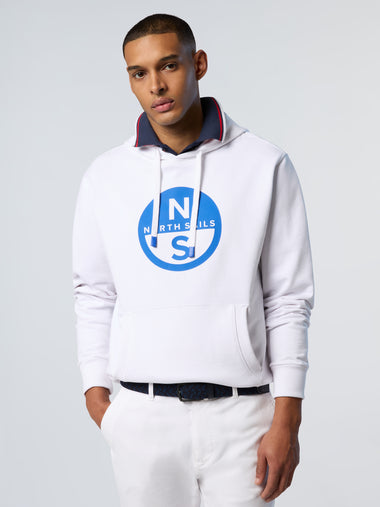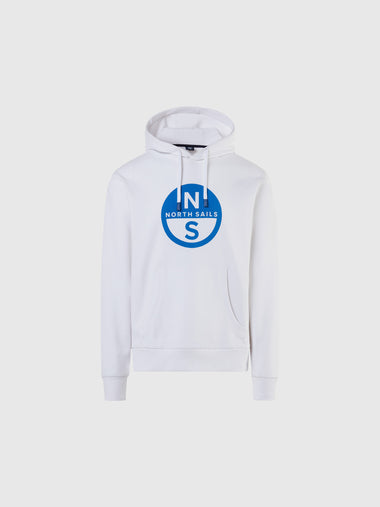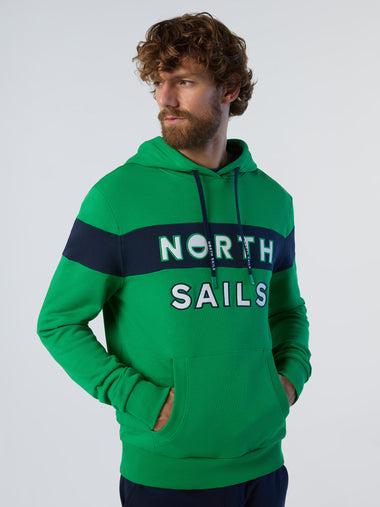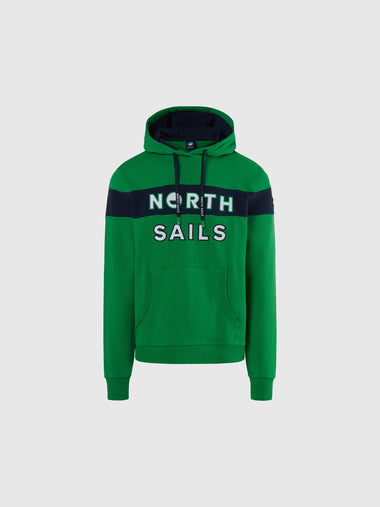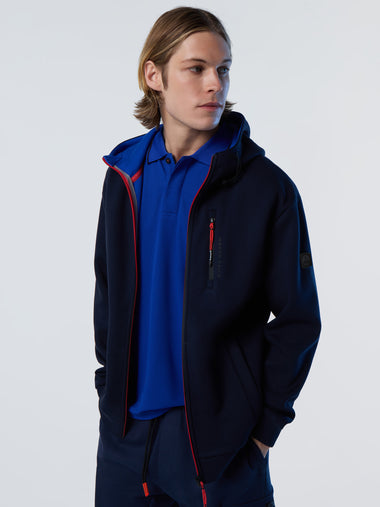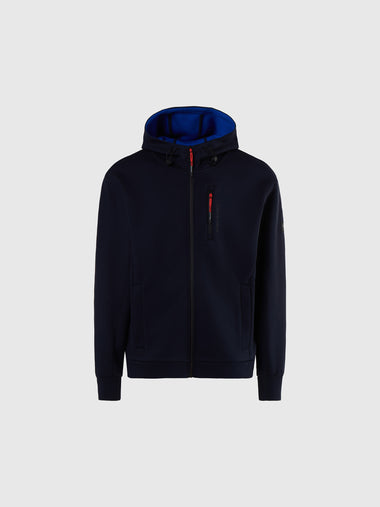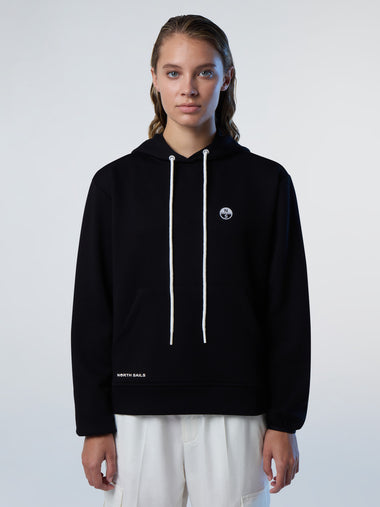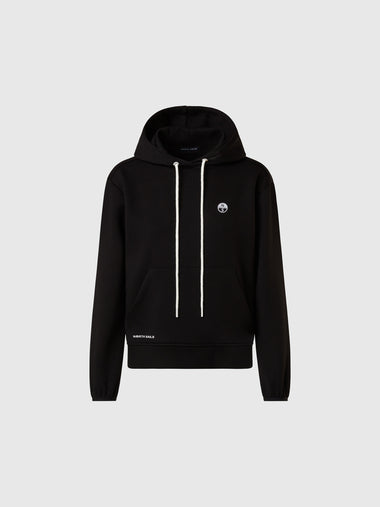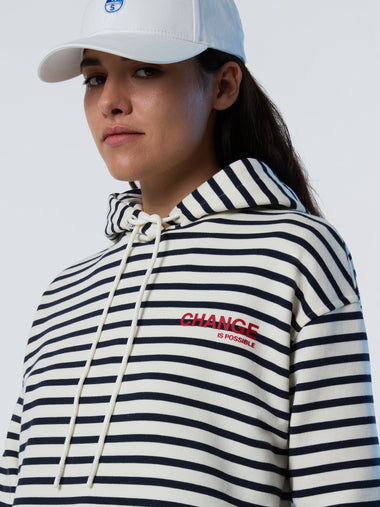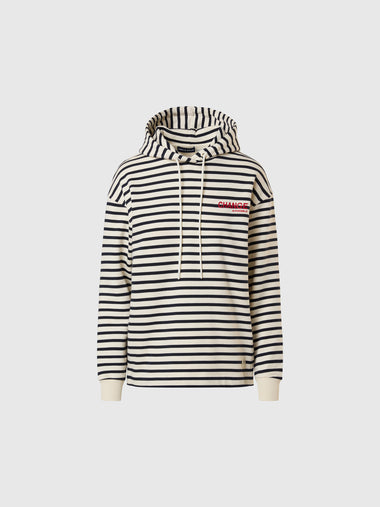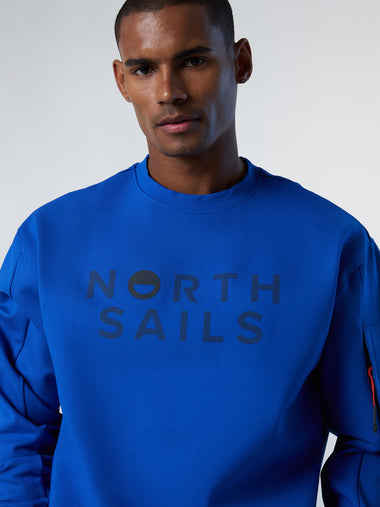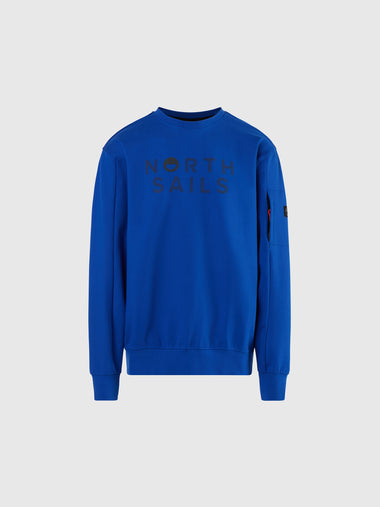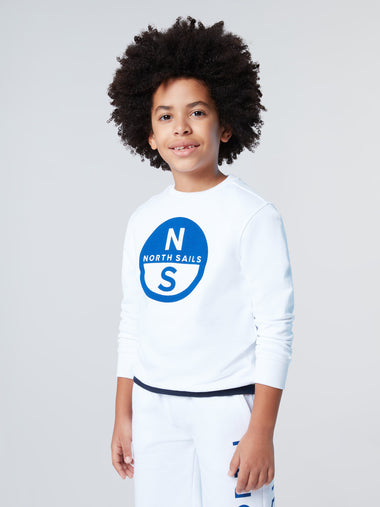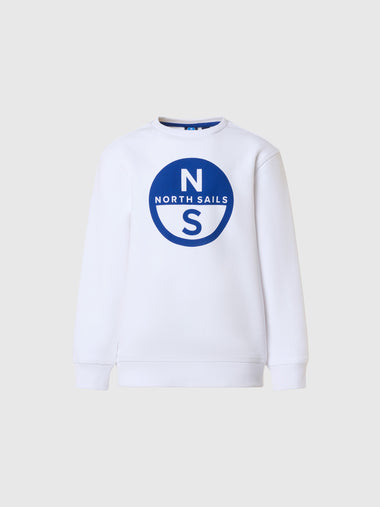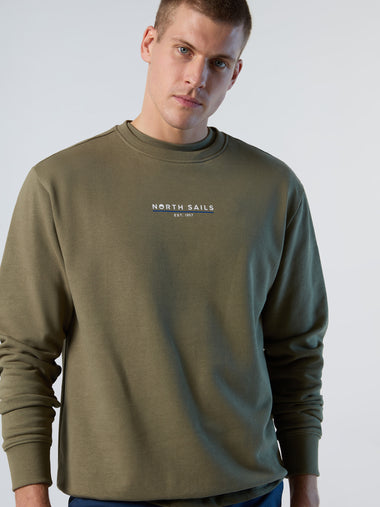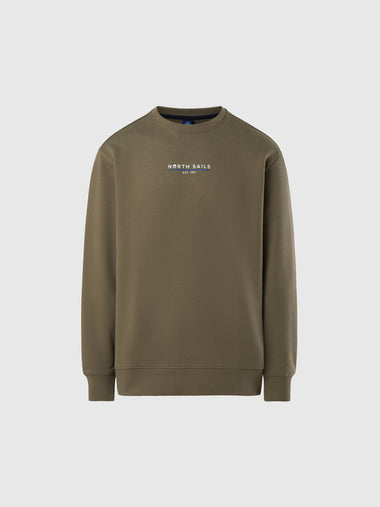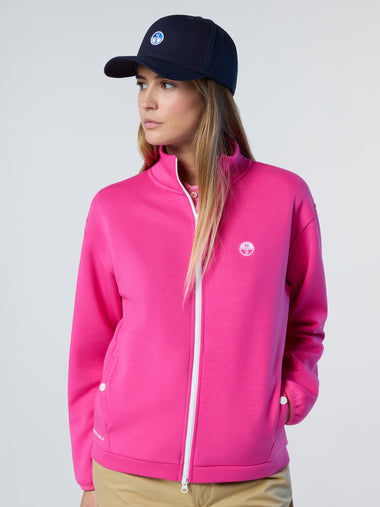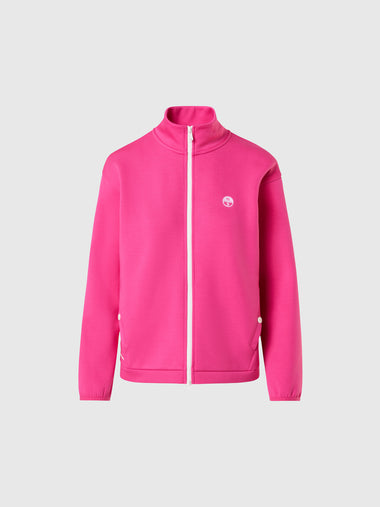NORTH SAILS BLOG
Todo
Events
Guides
News
People
Podcast
Sustainability
Tech & Innovation
Travel & Adventure
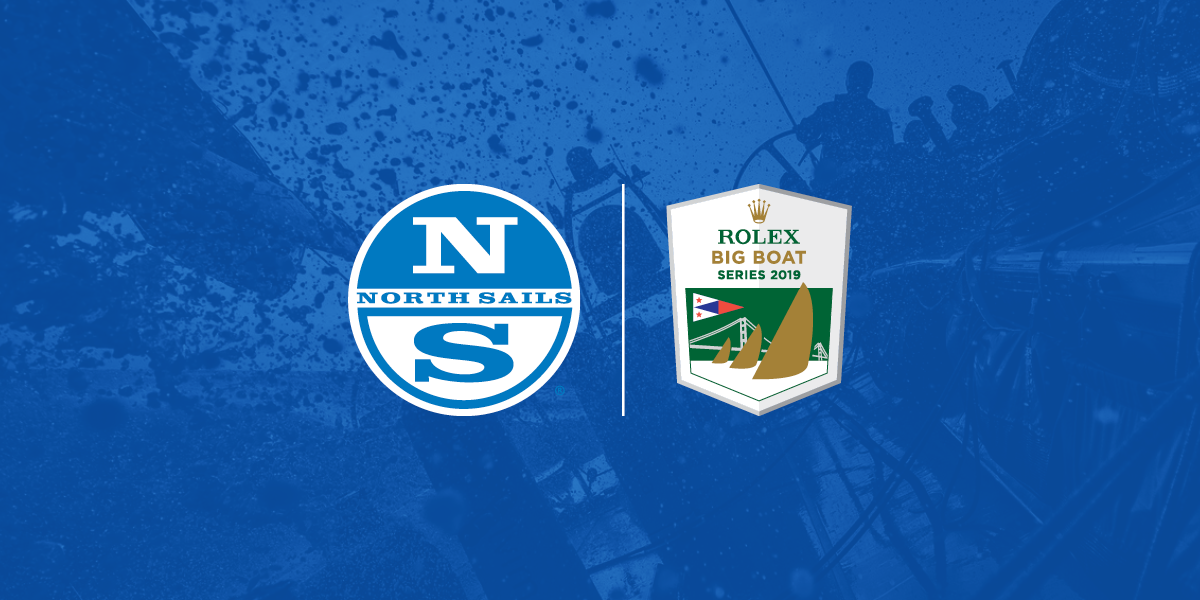
NORTH SAILS CONTINUES SUPPORT FOR ROLEX BIG BOAT SERIES
NORTH SAILS CONTINUES SUPPORT FOR ROLEX BIG BOAT SERIES
World's Leading Sailmaker At The Heart Of The West Coast’s Premier Regatta
The Rolex Big Boat Series always attracts world class competitors to the iconic San Francisco Bay. North Sails clients have a strong track record of commanding the leaderboard in the multiple classes of racing at the St Francis Yacht Club’s signature event each September. For 2019, the world’s leading sailmaker will continue to offer all regatta participants an enhanced experience and exceptional on-site support.
Now in its 55th year, the celebrated regatta is expecting to attract up to 80 entries across numerous classes, including ORR, ORR Classics Class, Express 37, J/105, J/88, J/70 and J/125. North Sails will once again host the “Expert Knowledge” briefing, this time presented by renowned sailor and America’s Cup winner Peter Isler. The pre race briefing, open to all competitors, will take place on Thursday September 12 at 8 AM in the St Francis Yacht Club (Starting Line Room). Chris Bedford from Sailing Weather Service will join Peter by video connection. Chris, one of the leading sources of regatta weather forecasting, will give a detailed run down of the expected weather for the racing.
Commenting on the successful partnership, now in its third year, North Sails West Coast Manager Seadon Wijsen concluded, “Our clients will be seeking every ounce of speed and performance for the Rolex Big Boat Series. We are committed to giving our customers the tools to succeed and also helping everyone competing to enjoy the event on and off the water. Peter Isler and Chris Bedford are two highly respected experts and I know the competitors will get a lot out of our ‘Expert Knowledge’ briefing in terms of weather and racing strategies.
We look forward to seeing everyone at the North Sails lounge on the regatta plaza at the St Francis Yacht Club and seeing competitive sailing on San Francisco Bay.
📸 Daniel Forster/Rolex
North Sails will also have a sail drop off point at their dedicated lounge on the regatta plaza, adjacent to the Yacht Club Docks, throughout the regatta, where clients, competitors, and friends are invited to meet the team, ask questions and relax.
“It is St. Francis Yacht Club’s mission to show leadership in the world of yachting, and nothing exemplifies that more than the Rolex Big Boat Series,” says Paul Heineken, Commodore of St. Francis Yacht Club. “The Club is delighted to have North Sails provide support for the competitors in this year's event.”
July 31 is the deadline for entries for the Rolex Big Boat Series - learn more by visiting www.rolexbigboatseries.com
READ MORE
READ MORE
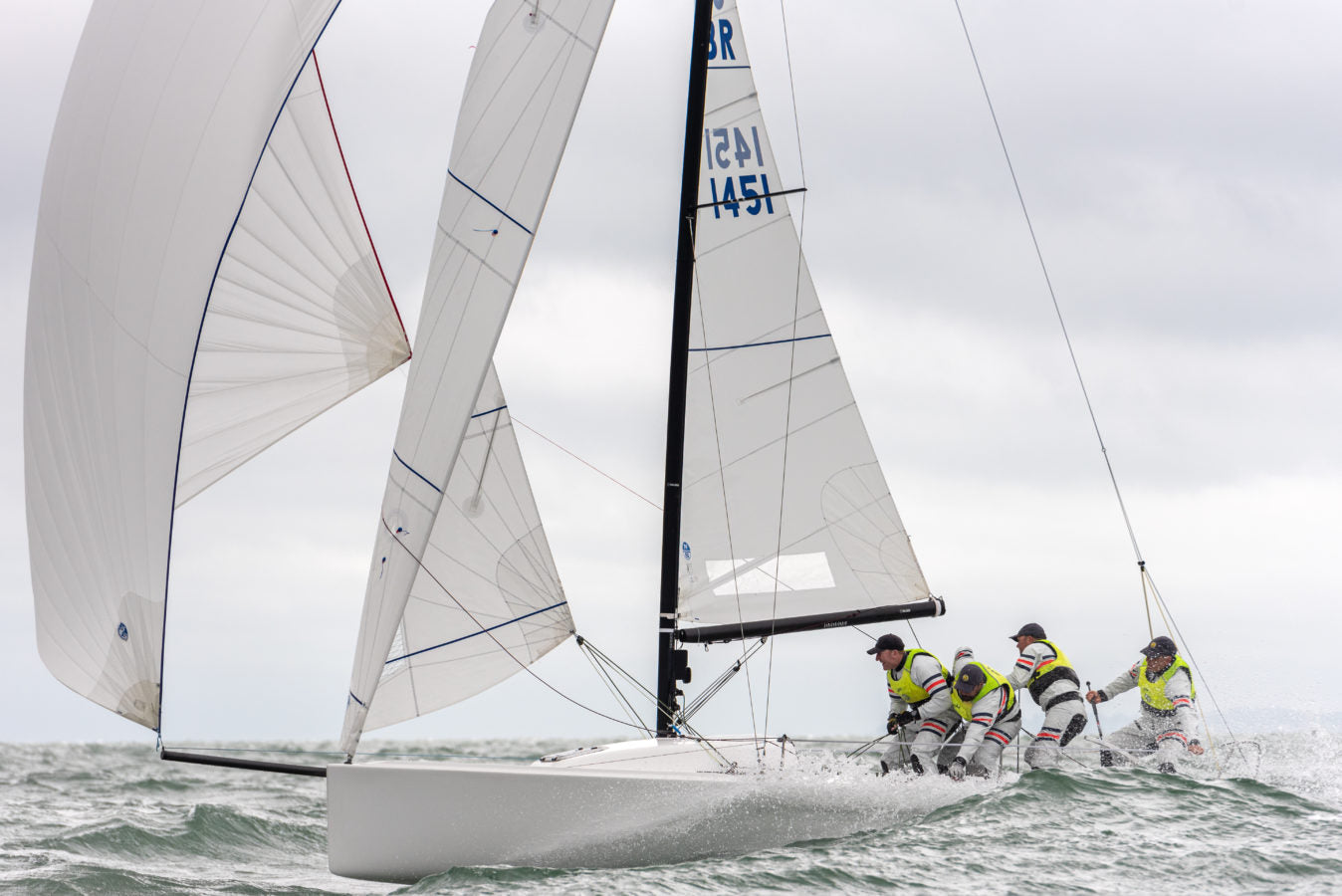
NORTH SAILS SUCCESS ON THE SOLENT
NORTH SAILS SUCCESS ON THE SOLENT
J-Cup 2019 Brought Fierce Competition
J/70 and J-Cup Winners: Eat, Sleep, J, Repeat 📸 Shaun Roster
With 60 boats coming together for the annual Landsail Tyres J-Cup, as always, the event did not disappoint.
Open to all J/Boats, the Solent hosted both One Design and IRC racing for competitors from Great Britain, France, the Netherlands and the United States. Conditions were certainly exciting for the teams, with the wind building as the event went on and peaking on the last day at 25 knots.
In the J/70 Class, Paul Ward's Eat, Sleep, J, Repeat won seven of the nine races, not only winning the class but also earning the overall J-Cup for exceptional performance - the first time the prestigious award has been given to a J/70. Amongst the crew were J/70 Class Experts Ruairidh Scott (Main Trimmer) and Charlie Cumbley (Tactician). At the prize giving, skipper Paul Ward said a few words:
“I am shocked, this is totally unexpected! A big thank you to Paul Heys. All of us here wish he was still around and like many of us, he has helped enormously with my sailing. A big thank you to the Eat, Sleep, J, Repeat team; Charlie, Ruairidh, and Mario.”
Winning the Large IRC Class was Davanti Tyres, not for the first time having won their class for three years in a row at the J-Cup. Powered by North Sails, they shone on the last day gaining three bullets.
The J/109 fleet had a healthy 11 entries with competition particularly fierce between Jukebox, Jubilee and Jiraffe. The last day was the decider and after Jukebox delivered two firsts when it mattered most, it was them who earned the title, also being crowned National Champions.
Congratulations to all North clients for winning six out of the seven classes after some exhilarating racing.
J/70 Class Winners: Eat, Sleep, J, Repeat 📸 Shaun Roster
J/92 Class Winners: Upstart 📸 Tim Wright
J/111 Class Winners: McFly 📸 Tim Wright
J/109 Class Winners: Jukebox 📸 Tim Wright
J/88 Class Winners: J-Dream 📸 Tim Wright
Large IRC Class Winners: Davanti Tyres 📸 Tim Wright
Small IRC Second Place: Jet 📸 Tim Wright
J-Cup 2019
J/70
First
Eat, Sleep, J, Repeat / Paul Ward
Second
Brutus / Charles Thompson
Third
Darcey / Clive Bush
J/92
First
Upstart / Robin Stevenson
Second
Samurai J / Alan Macleod
J/111
First
McFly / Tony Mack
Second
Sweeny / Paul van Driel
Third
JourneyMaker11 / Louise and Chris Makin and Jones
J/109
First
Jukebox / John Smart
Second
Jiraffe / Simon Perry
J/88
First
J-Dream / David and Kirsty Apthorp
Second
TIGRIS / Gavin Howe
Third
Raging Bull / Tim Tolcher
Large IRC
First
Davanti Tyres / Marie-Claude Heys
Second
Jahmali / Michael Wallis
Small IRC
Second
Jet / Jeff Johnstone
Third
Jaywalker / Bob Baker
* Denotes Partial North Sails Inventory
READ MORE
READ MORE
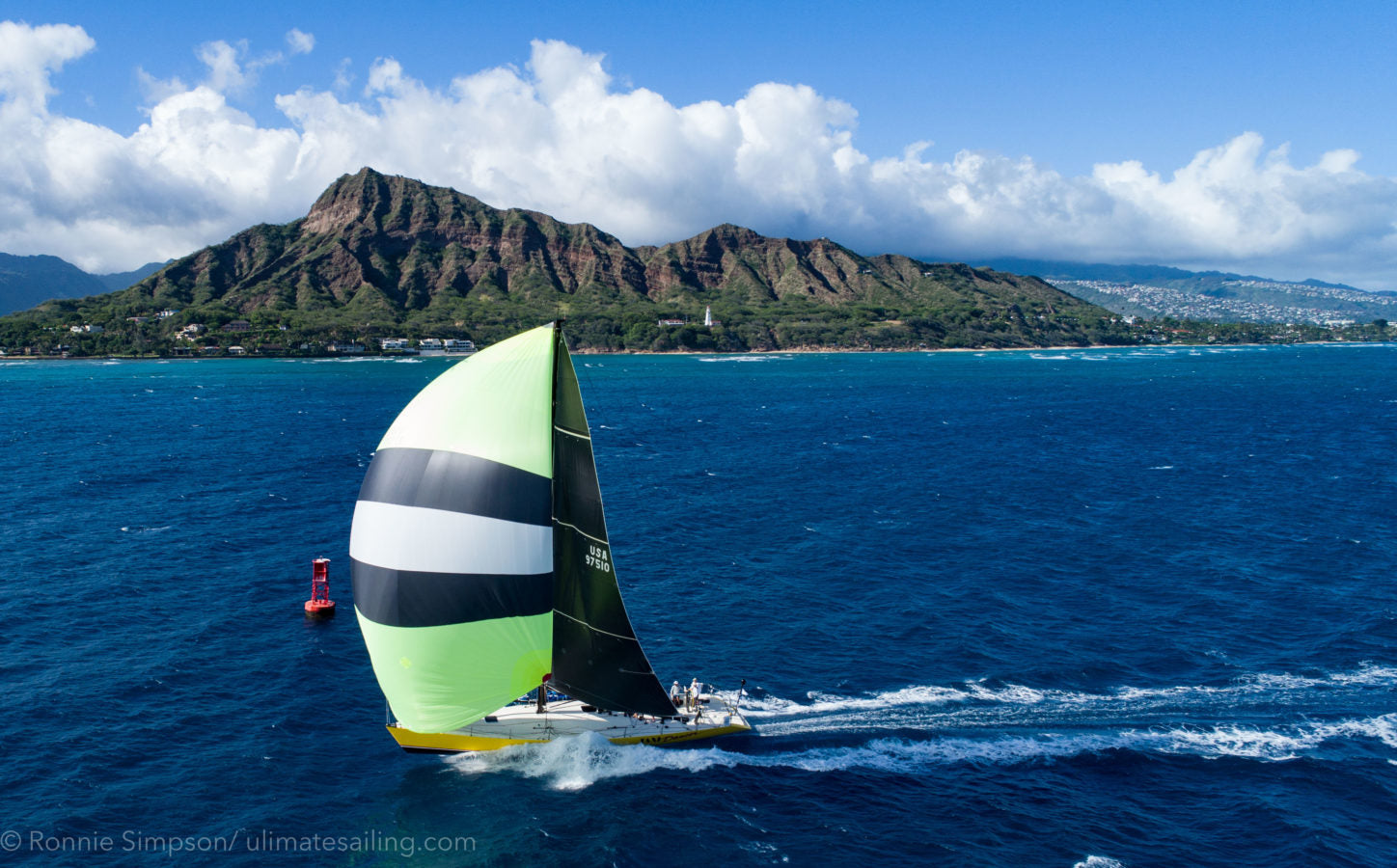
#NSVICTORYLIST: 50TH TRANSPAC
In division 1, Tom Holthus’ Pac 52 BadPak (with North expert Jon Gardner) beat out Duncan Hine’s Alive* by more than two hours. In division 2, Yabsley/Compton’s RP70 TaxiDancer finished just ahead of Santa Cruz 70 Buona Sera and Bill Lee Custom Merlin (with North expert Brian Malone). In division 3, the J/125 Hamachi owned by Shawn Dougherty and Jason Andrews claimed first, and, once the clock ran out, also the overall Transpac victory. In the Santa Cruz 50/52 division, Oaxaca, Michael Moradzadeh and David Ritchie’s SC50 took the win. Division 5 was won by Tom Barker’s Swan Good Call. In division 6, Corinthian team J/121 BlueFlash skippered by Scott Grealish took the win, followed by Ho’okolohe with two North experts (and father and son) Jim and James Foster. Michael Yokel’s Quester took second in division 7, just ahead of the all-Corinthian J/44 Patriot (Paul Stemler). In the Cal40 division, Callisto with the Eddy family and Kerry Deaver as navigator took first, powered by their North 3A spinnaker. In the multihull division, Jason Carroll’s ARGO was first to finish, ahead of Peter Cunningham on Powerplay and Giovanni Soldini on Maserati. Great job to all!
Read the full interview with Liz Baylis, Navigator on winning Santa Cruz 50, Oaxaca
Here are our favorite photos from the race:
Team Hamachi, based in Seattle, Washington, USA on their J/125, overall winner of the 2019 50th Transpac © Rachel Rosales
RP70 TaxiDancer, winner of Division 2 © Ultimate Sailing
Tom Barker’s Swan Good Call, winners of Division 5 © Ultimate Sailing
Chip Merlin’s Bill Lee Custom “Merlin”, Division 2 third place © Ultimate Sailing
Jason Carroll’s MOD70, first place multihull division © Ultimate Sailing
Cecil & Alyson Rossi’ Farr 57 Ho’okolohe, second place finisher in division 6
Dave MacEwen’s Lucky Duck, Santa Cruz 52, third place
READ MORE
READ MORE
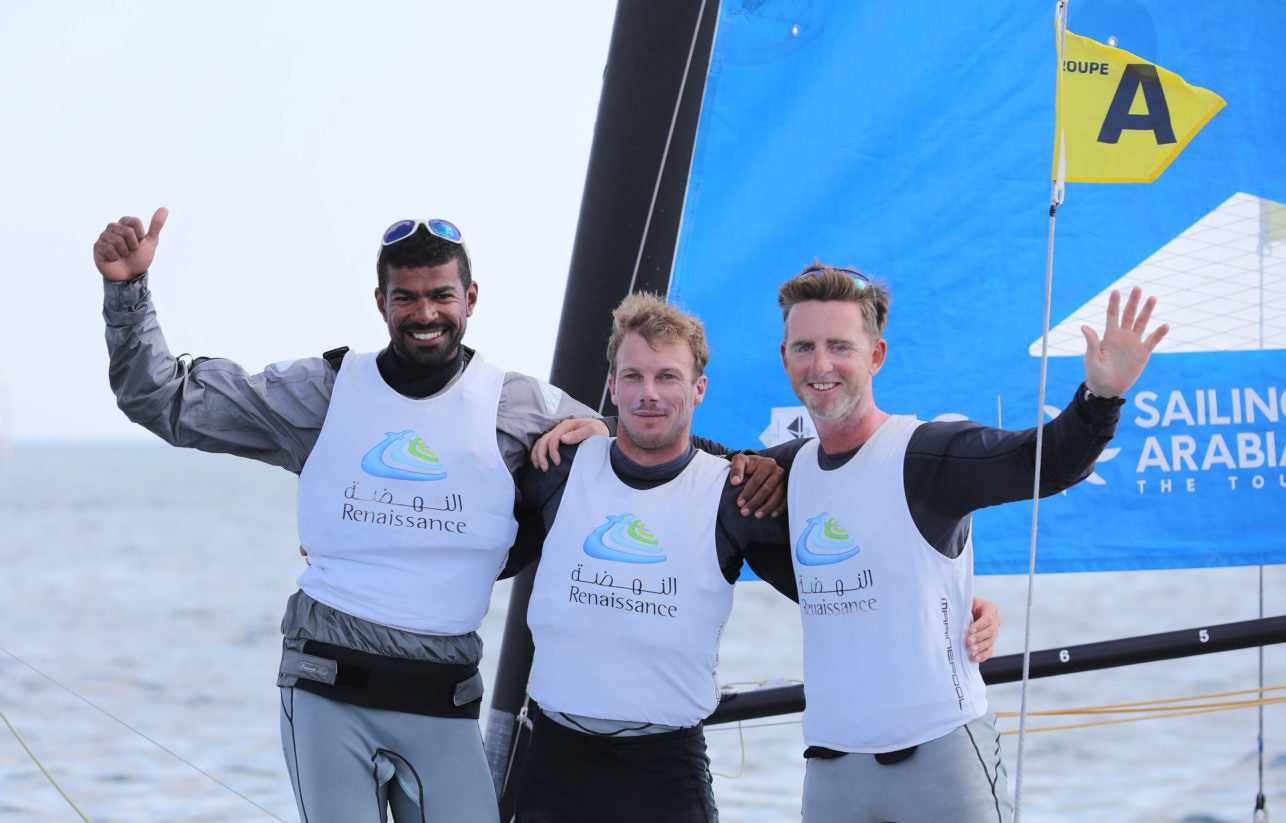
LE TOUR DE FRANCE À LA VOILE: UNE GRANDE CLASSIQUE
LE TOUR DE FRANCE À LA VOILE : UNE GRANDE CLASSIQUE
Quentin Ponroy raconte son expérience à bord de Renaissance Services
De gauche à droite : Abdul Rhaman El Mashari, Quentin Ponroy et Stevie Morisson -Tour de France à la voile 2019 📸 Jean-Marie LIOT / ASO
Quentin Ponroy, maître-voilier chez North Sails et fin régatier, a quitté ses dessins de voiles le temps d’une course. Et pas n’importe laquelle : le Tour de France à la Voile. Une course qu’il affectionne particulièrement pour son format et son niveau. D'ailleurs, il a dessiné les voiles (GV et focs monotypes) pour cette édition 2019. En tant que navigant, il compte 11 participations à son actif dont 4 victoires (Safran, Courrier Dunkerque, Lorina) et deux secondes places (Groupama, Trésor de Tahiti). Cette année, Quentin et son équipe, Renaissance Services/Oman Sail, terminent 5e après avoir gagné trois journées et s'être bien défendus contre leur concurrent direct (EFG Private Bank Monaco/Oman Sail). La victoire de ce Tour revient à Team Beijaflore, suivi de Cheminées Poujoulat et Team Réseau Ixio.
Durant 17 jours (du 5 au 21 juillet), les 23 équipages de nationalités et d’horizons divers (courses au large, côtières ou olympiques, hommes et femmes, amateurs et professionnels) se sont affrontés sur sept plans d’eau le long des côtes françaises du nord au sud dans l’espoir d’ajouter leurs noms à la liste de grands vainqueurs comme François Gabart, Michel Desjoyeaux, Jean-Pierre Dick ou encore Franck Cammas pour n’en citer que quelques-uns. Embarqué à bord de Renaissance Services en tant que tacticien, Quentin Ponroy nous raconte son expérience lors cette 42e édition.
📸 Jean-Marie LIOT / ASO
« Depuis le départ de Dunkerque (le 5 juillet), les conditions ont été superbes avec du petit temps en majorité et deux ou trois journées dans du vent thermique plus soutenu. En revanche, des journées beaucoup plus chaudes avec un vent capricieux et instable dans le Sud, parfois léger ou moyen, mais toujours sous un beau soleil !
Les GV et focs monotypes North Sails qui ont équipé l'ensemble de la flotte se sont très bien portés et ont permis aux équipes de se battre à armes égales. Le niveau était de taille avec quelques équipes "jeunes" professionnelles qui semblaient difficilement atteignables (Béijaflore, Poujoulat, Ixio).
Pour ma part, j’étais sur le bateau Renaissance Services qui fait partie des quatre bateaux du team Oman Sail. L’équipage se composait de Stevie Morisson (barreur anglais), Abdul Rhaman El Mashari (régleur omanais) et de moi-même (tacticien). Avoir 3 nationalités à bord pouvait parfois rendre la communication un peu difficile. De plus, n’ayant aucun remplaçant, nous n’avons pas eu de journée de repos; le rythme était bien intense!
À mi-parcours, nous avons décroché une 4e place au classement général. Nous avons gagné trois journées durant le Tour, ce qui prouvait que nous étions capables de rivaliser avec les meilleures équipes. En fin de Tour, nous étions 5e à égalité avec EFG Private Bank Monaco (Oman Sail), notre concurrent direct. Et on a réussi à les battre. On a gagné notre place !
Le support sur lequel on a navigué, le Diam 24 (petit trimaran de 7 mètres), est un très bon bateau : performant, fiable, simple et accessible. Il est aussi très exigeant à partir d'un certain niveau. Aujourd'hui, c'est le bateau idéal pour cette épreuve.
Pour moi, ce Tour de France à la Voile est comme la Solitaire du Figaro ou la Mini Transat : une grande classique française. J'aime particulièrement cette régate car elle se court en équipage, le niveau y est très élevé et les jeunes donnent le rythme. C'est pour moi une belle façon de créer des liens avec les futurs champions de demain. »
READ MORE
READ MORE

470 SPEED GUIDE BY SÎME FANTELA
2016 Gold medalist and North Sails expert Sîme Fantela answers your questions about sailing the 470
Who sails the 470?
The International 470 has been an Olympic double-handed class since 1976, with separate men’s and women’s divisions since 1988. Today most sailors are full-time Olympic hopefuls, and because the boat is so technically and physically challenging many teams stay together for several four-year training cycles. The boat can be sailed by a range of weights and heights, though most helms are shorter and smaller than their crews to maximize righting moment. Men’s helms range from 55-65kg and crews from 65-80kg, aiming for a combined weight between 130-140kg. Women’s teams are usually bit smaller, targeting between 120-130kg of combined weight.
What does it take to be successful in the 470?
You need to be passionate about it. You need to be focused on the training process, you really need to enjoy the boat and sailing and the hard work that comes with it. Competing successfully is not only about sailing and tactic; it's a lot about the technical side of the class. To be successful, you need to understand how the boat works, how the foils work, how the mast and the sails work, and how all these things work together. It’s very important to feel all these things, so you can tune the boat well in different wind ranges.
Who does what on the boat?
Upwind, the helm is steering and controlling the mainsheet, cunningham, and vang, as well as adjusting the centerboard up and down. The crew is responsible for trimming the jib, and obviously for hiking and the balance. Most of the boat handling and the kinetics are the crew’s job. Downwind, the helm hoists the spinnaker and trims it temporarily while the crew is setting or dousing the pole. The crew trims the spinnaker and balances the boat both fore and aft and side to side.
470 Tuning
What are the keys to rig set-up?
The most important aspect is to understand what suits your team. If you are a standard size (small-light helm and tall-heavy crew), follow the North Sails Tuning Guide. If you are not a standard size, you will have to work at finding the right mast stiffness, spreader length, mast step position, centerboard pivot position, centerboard stiffness, and model of sails. Then you can start to fine tune the boat and rig, depending on feedback from sailing against other teams.
What are the keys to rig tuning?
The key adjustment is rig tension. There are two different setups: the “standard” has less purchase, and the "soft" is easier to play while racing. You can choose which kind of purchase you want when ordering a boat. Many experienced teams choose the soft purchase, so it’s not just how much experience you have; everyone has their own tuning styles and ways. There are some very useful photos of this and other systems on the McKay Boats website.
Upwind Sailing
Where does each person sit on a 470 in light air?
Sit as far forward as possible. If the crew is not on trapeze, then they sit on the deck and try to press the boat flat by leaning out. As the breeze comes up, they move onto the trapeze, first with knees bent and then with knees straight. Once the crew is fully extended, the helm starts to hike.
What are the key changes in different conditions?
It is very important to understand when you go from underpowered to overpowered. Sail trim and crew position are important adjustments until you are fully hiking. Then you start depowering the boat with the different controls.
What do you focus on when trimming the 470 main?
Trimming the main, the focus is the leech and twist. The perfect amount of twist depends on the sea state. If it's flat water, I like a tight leech, but I don't ever close it completely. In waves, more twist makes it easier to steer.
What do you focus on when trimming the 470 jib?
You need a different setup depending on whether it's flat water, chop, or swell: more twist in the waves, and less twist for flat water. I play with the lead in gusts and lulls; you can move it fore and aft, and also in and out (there are 5 positions, and 1 is max inboard while 5 is max out). In light wind, you want it inboard and forward; for strong wind, ease it out and/or move it aft. This helps to open or close the slot between main and jib.
What are the key adjustments to make when wind and sea state increase?
Key adjustments are centerboard height, jib lead, vang, outhaul, cunningham, and the height of the jib. Let's say the wind is starting to build. To depower the main, pull on cunningham, outhaul, and vang. For the jib, lower the height, pull on jib cunningham, and move the jib lead aft/out. If you are still overpowered, raise the centerboard.
Any other advice about gear changing in a 470?
You need a lot of hours in the boat to understand how it feels in different conditions and what the boat wants to be quick. You need to have all these tools in your hands and to adjust when conditions change, or when you want to change the mode of sailing. If you want to go quick and low, or slow and high, you need to be able to do it—and this doesn't come easily.
What's the typical conversation between 470 helm and crew?
It's mostly about who is doing what on the boat. On our boat, as helm I was doing the tactics and my crew was focused on speed, but sometimes when the conditions changed we would swap roles; I would focus on speed and the crew would take over tactics. The other loop is talking about boat speed: how do we feel, should we change something? You always compare yourself with the boats around you about the speed and mode of sailing.
Downwind Sailing
What 470 spinnaker would you recommend?
North Sails has three different models: V2, A2, and V3. The V2 is flatter on the top and easier to steer to. The A2 has the biggest projected area, it’s the most powerful one. The V3 is a bit fuller on top. So each team should decide which kite to use depending on their style of sailing—if they want to sail low, or want to play with the waves and sail high. For more details, view the North Sails 470 Inventory.
Where does each person sit in a 470 downwind?
Downwind, the helm sits on the leeward side and the crew sits to windward to trim the spinnaker. In lighter breezes the crew sits as far forward as possible, close to the shroud; one trick in super-light winds is to sit in front of the shrouds, just at the splash rail, to lift the stern out of the water and minimize the wake. As the breeze comes up, the crew moves aft—sometimes even behind the traveler bar. In really extreme big breeze and waves, both the helm and crew will sit all the way aft, close to the rudder, to put the bow up and surf as much as possible.
What are the key adjustments to make sailing downwind?
It’s important to feel the sea state and decide how high to sail compared to the waves; you don't want to stop in the waves, you want the boat to plane. You have to find your own way of sailing depending on the fleet, the waves, and the wind. The fastest teams spend a lot of time sailing the boat downwind in different wind conditions, because in this class the biggest gains are made downwind. Downwind, you want the main as deep as possible in almost all conditions. Ease outhaul and cunningham, and adjust the vang so that the leech is open for a nice flow around the main. Having the top batten parallel with the boom is good as a starting point, and then you fine tune from there. Another good rule is to keep the spinnaker pole parallel with the boom as it goes in and out. If you let out the boom, move the spinnaker pole aft. If you start to sail higher angles and pull in the boom, let the pole forward. These rules work in most conditions.
What’s the most important thing about 470 trimming downwind in light air?
Keep the slots open between kite, jib, and main. If it's really light, so you can't pull back the spinnaker pole, you’ll need to trim in the main.
What’s the most important thing about 470 trimming downwind in heavy air?
Let the boom out to the shroud and raise the pole to close the leech of the kite, keeping as much power as you can handle. Then focus on crew work: working the waves, balancing the boat. The higher the centerboard, the faster you will go, so you want to lift it as much as possible—but that depends how much stability you need. As a beginner, start with the centerboard down more, to have a more stable boat. As you get better controlling stability with bodies and sails, the centerboard can go higher and you’ll go faster.
What is a typical conversation downwind?
Here are the two questions:
What mode do we want to achieve (high and fast, or low and slow)?
Is the Oscar flag up so we are allowed to pump?
If we are pumping, usually the helm counts down the timing: three, two, one, pump. We try to move our bodies together and pump the main and spinnaker together. The most important thing downwind is to catch waves while being synchronized as a crew.
Any special considerations to sail the 470 well downwind?
You have to listen to what the boat tells you and how it feels, then listen again to how it reacts to a change of mode. One mode might suit your team best, but you still have to master the others to be quick in different tactical situations.
Boat Handling
Top three tips to starting a 470 well?
Try to keep the flow on the rudder and centerboard as long as you can. Once you lose that, it can take some time to attach again.
Always fight for space down to leeward. If you don't have enough, you're not going to survive the first 100 meters.
Identify the last possible moment for a double tack. And whether you double-tack or not, know the right time for good acceleration and the right exit angle.
Any tips for 470 downspeed boat handling?
The most important thing is to keep flow on the rudder and centerboard. If you are going slow, keep the main in. If you have to kill speed, luff the jib but try to keep flow in the main as long as possible. Work bodies and sails together. It is really crucial to be synchronized: at the start, both helm and crew go to leeward, prepare for the acceleration, and then squash the boat flat and trim in main and jib at the same time. Sheeting and flattening the boat together is the only hope for a good start.
What is the most common mistake when tacking a 470?
Not synchronizing helm and crew with rolling the boat into the tack, not flattening at the same time on the exit, and not maximizing the roll.
What does each person do in a tack?
The helm sheets the main in tight as you come head to wind and then eases it out again. Once on the new tack, trim in as the boat accelerates. The crew needs to balance the boat and provide the right amount of heel, while at the same time trying to be precise with jib trim. It's quite a tough job for the crew to do a really nice tack.
Key tip for good light-air tacks in a 470?
Maximize the roll of the boat by putting the leeward shroud almost into the water before the tack. When you roll to windward, put that side into the water, and then squash the boat flat on the new tack. All this must be combined with simultaneous trimming of jib and main. The most important thing tacking in light winds is to maximize the power that you have in the boat and what you create with the tack.
Key tip for good heavy-air tacks?
Don't roll the boat; keep it flat both entering and exiting the tack.
Key tip for good light-air jibes?
In light air, try to turn with minimum rudder and work on the kinetics for roll jibes. The biggest mistake is not to roll the boat.
Key tip for good heavy-air jibes?
Keep the spinnaker full through the jibe, and keep the boat flat; if you roll the boat at all, you risk a capsize.
What’s the best way to set a 470 spinnaker? Who does what?
It's really important to have a solid routine for spinnaker sets. The fastest set we found was for the crew to:
Come in off the trapeze wire.
Take the spinnaker tack out of the spinnaker bag with one hand, while pulling on the windward barber-hauler/twing with the other hand.
Hook the pole to the sheet, topping lift, and mast - Jaws up!
As the crew sets the pole, the helm stands up and hoists, then grabs a sheet in each hand. (In medium and strong breeze, steer with the rudder between your legs.) You can fill the spinnaker before the crew sets the pole. It's important to have the leeward sheet marked at the right amount of trim, so when the spinnaker goes up, it fills automatically before the crew or helm takes it from the cleat.
What’s the key to a good 470 spinnaker takedown?
The best spinnaker takedown is when the helm stands up and trims the spinnaker with a sheet in each hand, so when the pole comes down the spinnaker is still flying. At the last possible moment, the crew grabs the tack and drops it into the sock. The goal is to keep the spinnaker flying as long as possible.
Personal Tip: We always have a windward takedown, because we have a storage bag on each side of the boat.
Doing a 720 penalty turn is slow. What are the keys to minimizing the pain?
Try and synchronize the roll of the boat while minimizing the steering. When crew and helm act as one body, that's the best. If you can, do the spins almost without the rudder, and start with a tack. On the bearaway, have a nice windward heel into the jibe, again minimizing the steering by working the bodies together. Always tack first, even from downwind.
How easily does the 470 broach or capsize?
Not that easily. Downwind, or reaching in strong breeze, you might broach if you lose control of the rudder because it ventilates, which happens quite often. Or in strong breeze if you lose your balance, or roll the boat too much in the jibe, you definitely will capsize.
How do you recover from a 470 capsize?
Try not to let the boat fully capsize, unhook the spinnaker pole, and right the boat.
What are the most common boat helming mistakes made in the 470 class?
When you are not in control of the boat. Control the feel of the boat upwind and downwind, and you're going to do well.
Any suggestions for drills to improve 470 boat handling?
Sailing a figure eight in any wind will take you far. Circling around one mark, even in 20, 25 knots, is a really good drill to be strong in boat handling. Or set up a short race course that gives you just enough room to put up the kite, do one jibe, take it down, and go back upwind. That will improve your boat handling in all conditions.
READ MORE
READ MORE
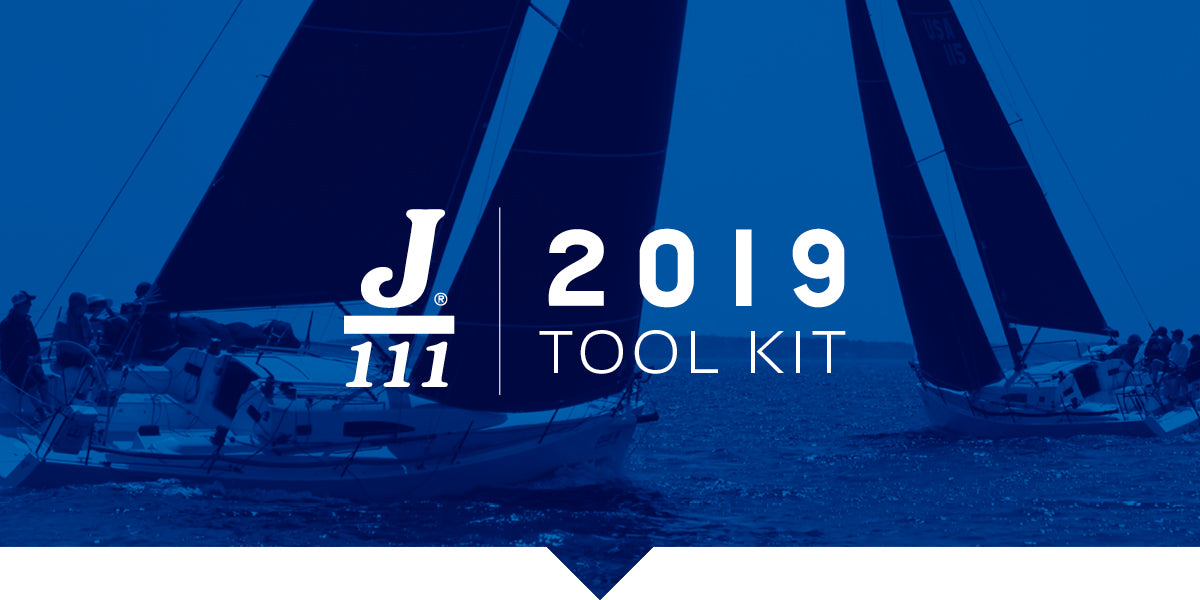
J/111 WORLDS TOOL KIT
Tools For Success At The J/111 Worlds
The J/111 Worlds is just around the corner. Is your team ready? This Tool Kit will help. Created just for J/111 sailors, by our J/111 expert team.
#NSVictoryList
There is no better performance test of a one design sail than the results it produces. North clients dominated the 2018 Worlds, sweeping the podium and taking eight out of the top ten spots on the scoreboard. Add your team to the #NSVictoryList!
Road To The Worlds: Establish The Plan
North Sails expert Allan Terhune describes what Team Velocity is working on right now in order to peak at the J/111 Worlds in August.
Fine Tune With North
Find your groove. Get your numbers. Be confident in all wind conditions. After countless hours of sailing, sail testing, and competing in the J/111, our tuning guide will get you up to speed quickly.
World Champion Tips
At the 2018 J/111 Worlds in Breskens, Netherlands, big-breeze speed was the key to success. Martin Dent and his team on JElvis scored nine straight bullets in the 12 race series! Here’s what worked for them.
Onboard Communication
Onboard communication for racing yachts is a key factor for performance, no matter what type of sailing. We have some suggestions to keep your boat moving through the water and around the corners more efficiently and effectively with better communication.
Working With The Best
Our J/111 sails deliver the best results for our clients. Contact your local expert and join us at the front of the pack.
READ MORE
READ MORE
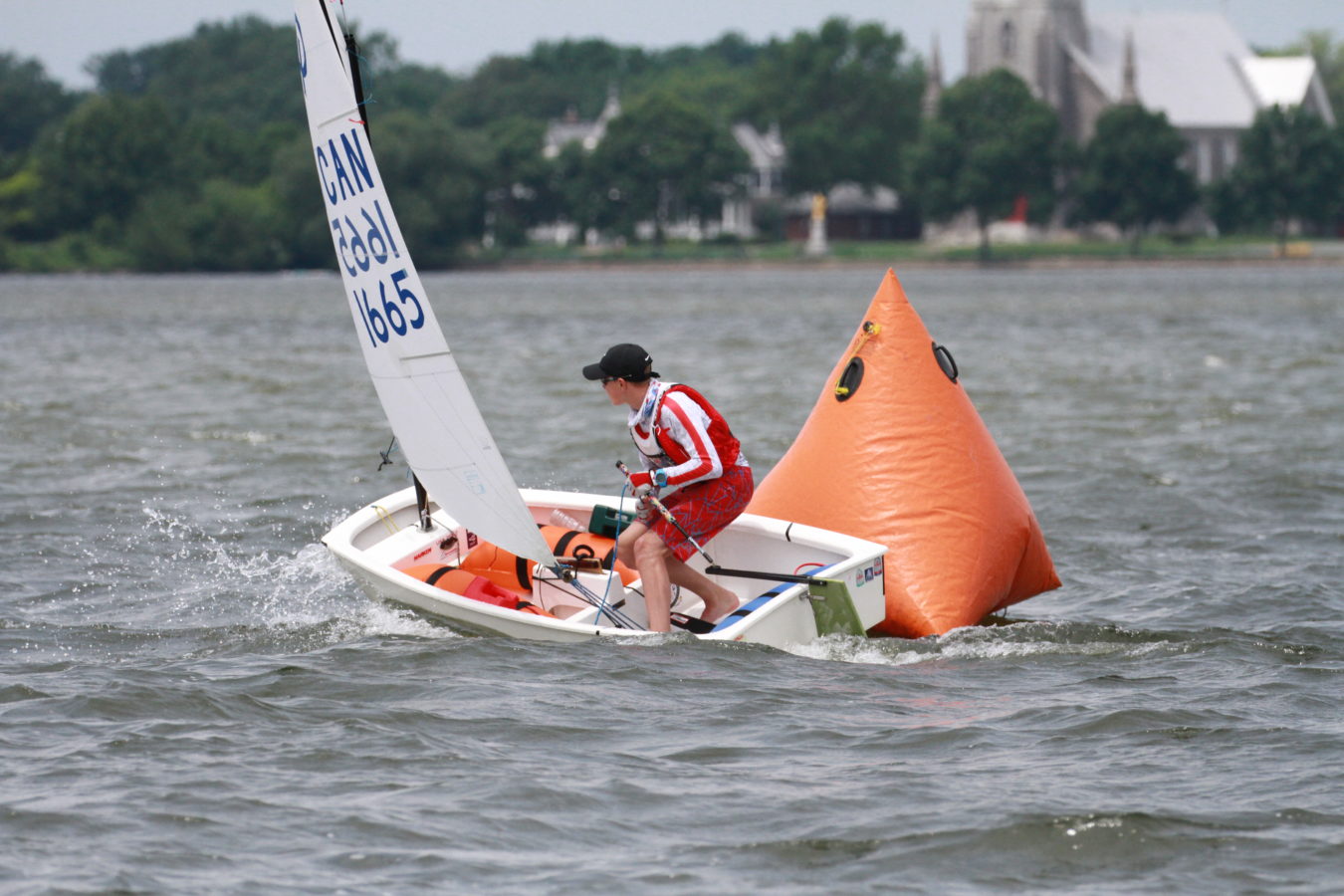
TRY REGATTA CELEBRATES 13 YEARS
TRY REGATTA CELEBRATES 13 YEARS
North Sails Supports Quebec Youth Circuit
Pointe Claire YC hosted the 13th edition of the TRY regatta this past weekend. TRY is Montreal's stop on Federation Voile du Quebec's youth circuit. The event hosts youth sailors in Optimist, C420, 29er, and Laser.
Sunny skies and challenging winds greeted 120 youth competitors from across Quebec, eastern Ontario and as far as New Brunswick. As usual the competitors enjoyed the welcoming atmosphere of the club. A huge number of members volunteered their time to make the event an enjoyable success. From crews at the ramps that helped speed through launching and hauling out all the competitors’ boats to crews that chopped watermelons, solved registration problems, ferried parents to watch their children race, barbecued burgers for hungry kids and coaches, and members of PCYC demonstrated utmost hospitality - which they are famous for.
On the water, Madeleine Palfreeman organized an excellent crew of race officers who managed four separate race courses through a wide variety of wind strengths and directions. With wind strengths across the board, and gusts up to 25 knots, race officers used every trick in the book to get six solid races for each fleet. A special word of thanks goes to George Stedman for his 4th year as regatta chairman. Big thanks to the whole staff for their extra hard work at this event. From the organizers of TRY, thanks to all the members for giving up acmes to parking and sharing the club with a cord of young sailors. Without the cooperation of all the members we could not host this annual youth training event with such success.
READ MORE
READ MORE
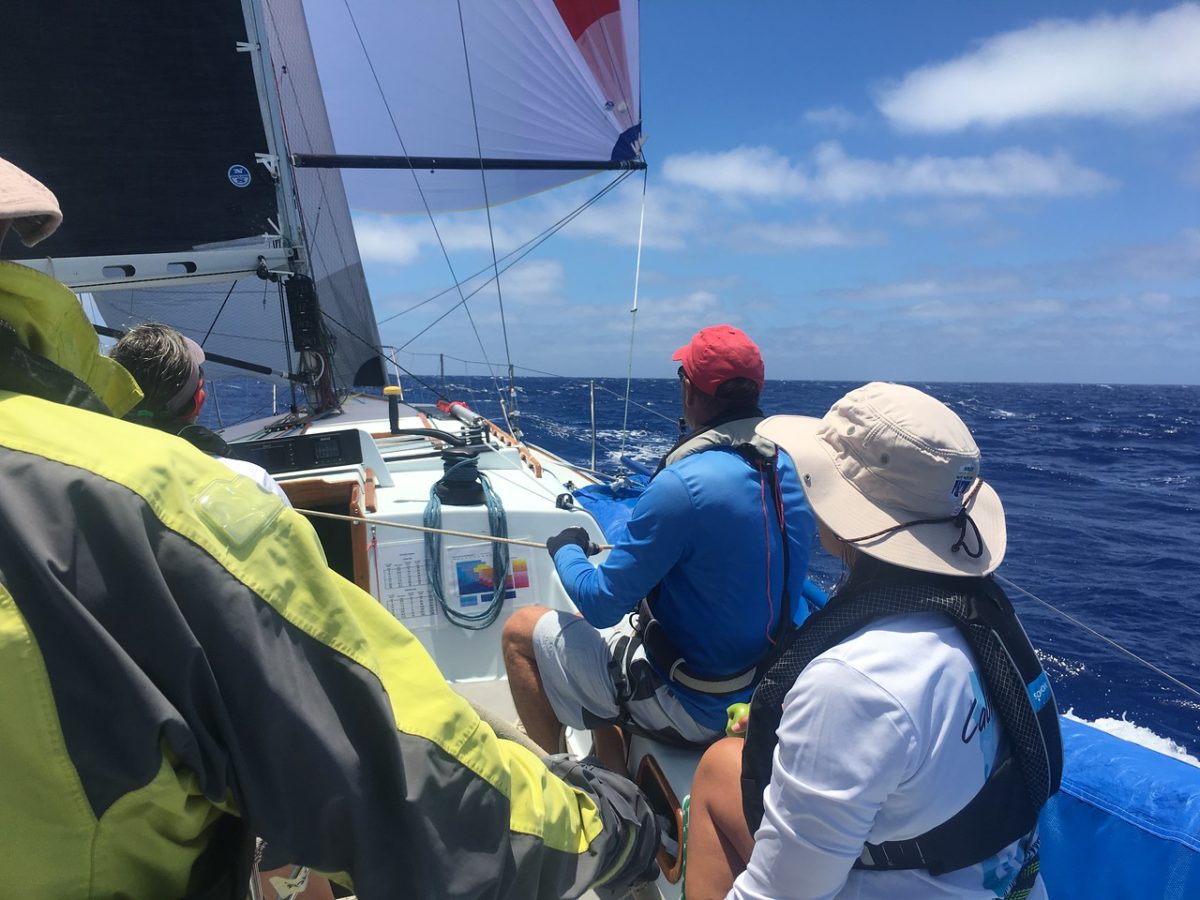
50TH TRANSPAC: HOW TO WIN YOUR CLASS
50TH TRANSPAC: HOW TO WIN YOUR CLASS
Making a Plan, Executing Well, and Trusting Your Team is What It Takes
© Michael Moradzadeh
Winning any ocean race requires a complicated combination of preparation, teamwork, persistence, and experience. To understand what worked on the 50th Transpac, we reached out to Liz Baylis, navigator for Santa Cruz 50 Oaxaca, which won a very competitive Division four and took sixth overall.
This year was Liz’s fourth Transpac (she’s also sailed seven Pacific Cups, from San Francisco to Hawaii), but the 2019 edition scores high on her list of favorites. Why? “Winning helps,” she laughs. “It’s a special race, and each one is memorable in a different way, but I’m really proud of how the team trusted me and we worked so hard together to succeed.”
That team combined two Transpac rookies with seven race veterans and included The Ocean Race skipper Dee Caffari. “It was a nice blend,” Liz says, adding that the trust the group developed during California Offshore Race Week was a big key to their success. (Oaxaca also won their class and finished third overall in that series of hops down the coast.)
© Ultimate Sailing
Before the Transpac started, Oaxaca’s co-owner Michael Moradzadeh provided some background on the team blog that shows just how much preparation went into their eventual victory. “We have been building the program since 2015. A set of carefully researched modifications and upgrades to the 1980 Santa Cruz 50, together with an increasingly challenging practice schedule and, most importantly, recruiting world-class sailors to drive the team forward. With powerhouses like Liz Baylis, Dee Caffari, and Molly Noble, we pretty much let the women run the show. This is not to shortchange the other members of the Transpac crew: Harry Spedding, Brett DeWire, Tom Paulling, and Patrick Lewis.” They also added a flatter A2 and genoa staysail to their sail inventory.
While most Transpac competitors only have time for the minimum requirements of safety and offshore training, Liz points out that 2019 “is the third Pacific race we’ve done since Michael and David bought Oaxaca in 2014. So the basic prep was done, and we could focus on improving performance and practice racing.”
Liz also put in a lot of prep time herself, away from the boat. “I sat down with navigating legend, Stan Honey, in February,” she says, “and then spent a few hours each week on the boat’s navigation computer, ‘Baby Lenovo’, downloading weather files and then running routes and critiquing them.” She also reviewed past races and race reports. The result was a carefully pre-planned track that corrected to first place for Team Oaxaca, just ahead of nine other Santa Cruz 50s and 52s. “The crew on deck did a great job executing the plan and trusting me to guide them the right way,” Liz adds.
© Michael Moradzadeh
With such a tight fleet, though, there was plenty of stress—and after nine days of racing, Oaxaca won by a mere twelve minutes. The last hundred miles into a light-air finish were both the best and worst parts of the race, Liz says. “We had moved into the lead, but we going slow and two others were going fast. I was stressing over the deltas between us and the other boats, trying to enjoy a spectacular run past the cliffs of Molokai, and dreading that I had made a mistake. But the team kept working, and in the end we got it done!” As Michael put it just after the results were posted, “When you sail with rock stars, expect a concert.”
Liz didn’t stand a watch and spent little time on deck, so it’s no surprise that her two best memories involved escapes from the navigation “cave.” “My first time on the helm with the kite up, we hit 27 knots within 5 minutes!” she says. “And the second to last night was beautiful; I came up to drive for an hour at dusk, and the sky transitioned to the most incredible star-filled night I had ever seen.”
Preparation, teamwork, persistence, and experience. Congratulations to Liz and the entire Oaxaca team, and to all the other North clients who completed Transpac 2019!
© Michael Moradzadeh
© Michael Moradzadeh
READ MORE
READ MORE
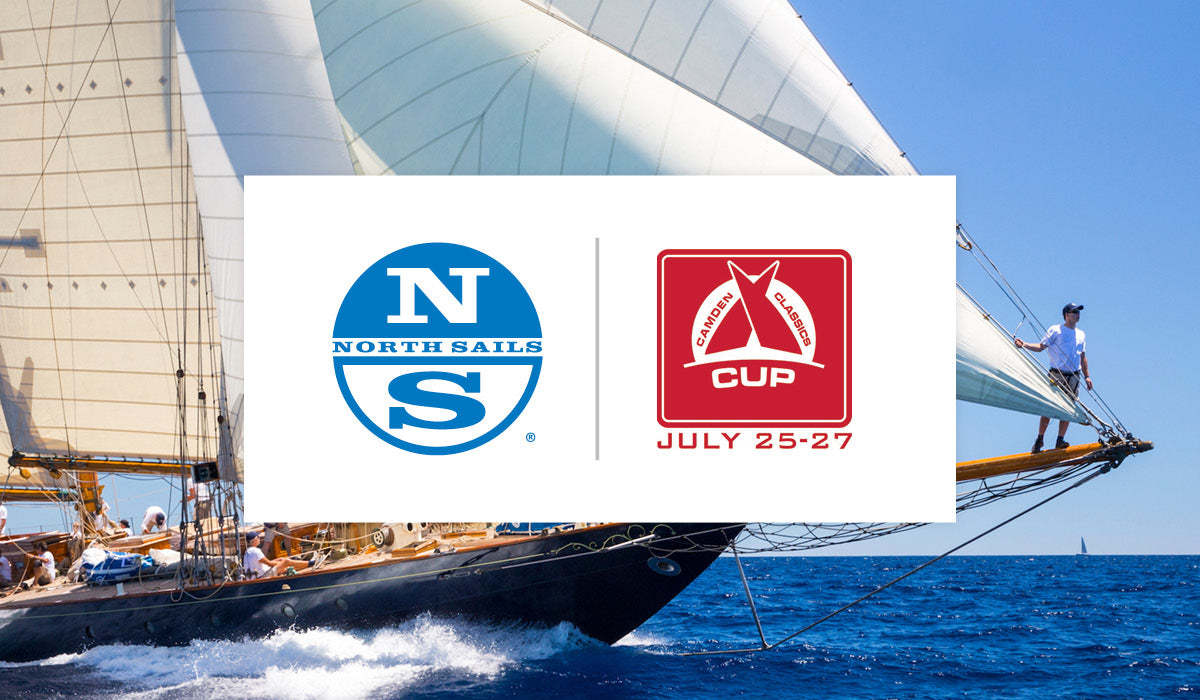
ASK THE EXPERTS
ASK THE EXPERTS
Have A Question On How To Improve Your Game On The Race Course? Ask Our Team
North Sails is excited to support the 2019 Camden Classics Cup and Youth Regatta. Our experts will be on hand for pre and post race coaching during the Youth Regatta, offering all entrants analysis on boat handling and how to improve boat speed.
At North Sails, it's our passion to help enhance your sailing experience, so here, Kimo Worthington, America's Cup and Ocean Race Winner will be answering any sailing questions you have alongside World Champion One Design sailor Will Welles. Do you want to know what they do to prepare for a race? Or how they communicate with their crew on the race course? Well, go ahead and ask our experts.
READ MORE
READ MORE
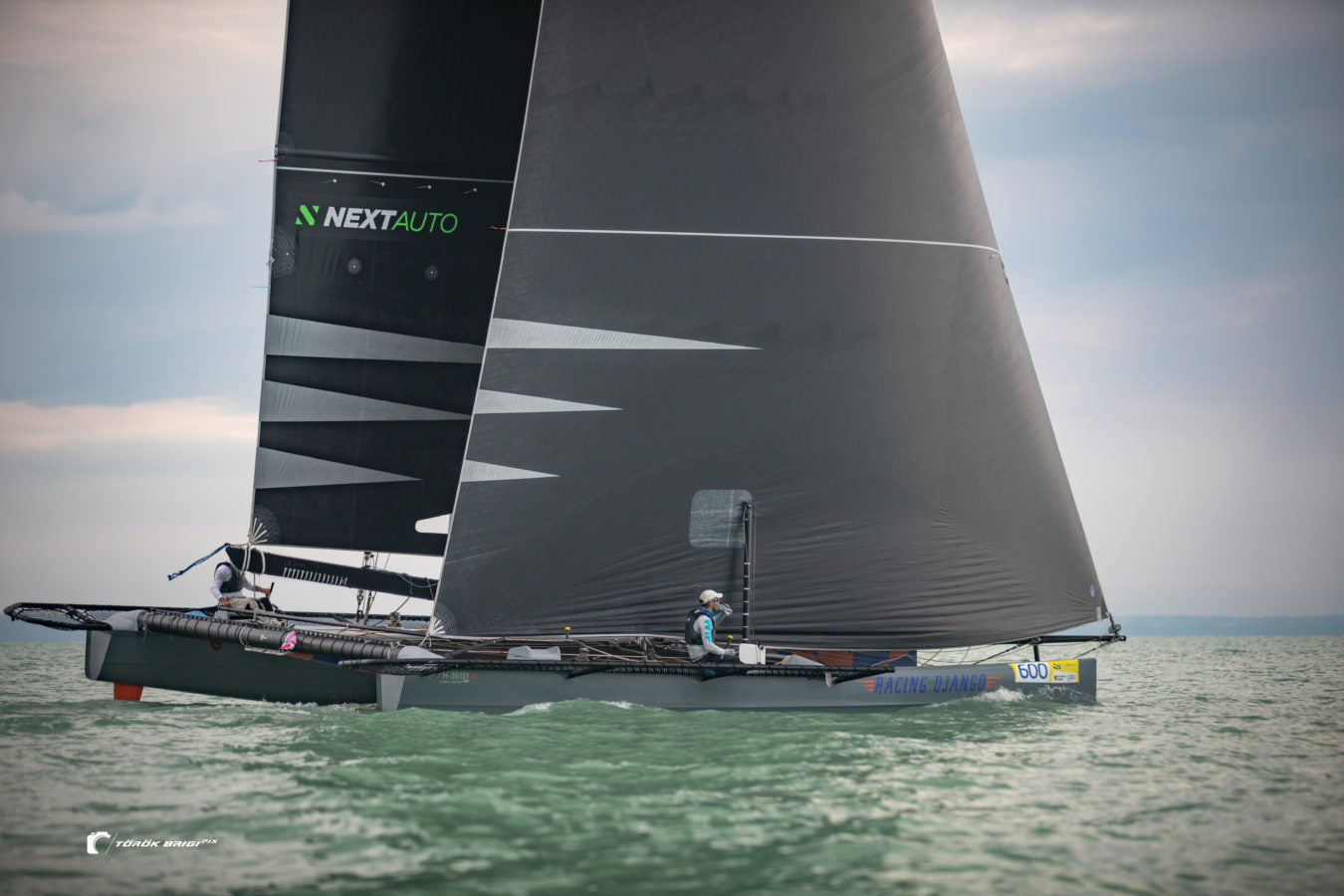
51. KÉKSZALAG
Kékszalag
A Kékszalag vitorlás verseny Július 18-án indult. Közel 600 hajó részvétel, 2500-3000 vitorlázóval, hogy 48 órán belül körbevitorlázzák a Balatont. Gratulálunk az összes indulónak és ügyfeleinknek, akik az abszolút 1;2;3;4;5; helyezés mellet 8 katagóriagyőzelmet is megszereztek #NSVictoryList 📸 Török Brigi photographer , Magyar Vitorlás Szövetség
#1 RACING DJANGO - 3Di RAW
#2 MKB - 3Di ENDURANCE, NPL SPORT
#3 PREVITAL - 3Di ENDURANCE, 3Di RAW
#4 BLACK JACK - 3Di RAW
#5 és egytestű #1 RAFFICA 3Di ENDURANCE, 3DL, NPL SPORT
YS1/1 #1 TANTÁL - 3Di RAW, CUBEN FIBRE
X-35 #1 HAM-LET - 3Di RAW, 3DL, NPL SPORT
11MOD #1 OBSESSION - 3Di ENDURANCE
11MOD #2 FORTÉLY - 3Di ENDURANCE
EURÓPA 30 #1 ZARÁNDOK - 3Di NORDAC
J/24 #1 J'KORSZAK - NPL SPORT, ONE DESIGN
ELLIOTT 770 #1 HODU UTU - NPL SPORT
# NO.1 - 3Di ENDURANCE
READ MORE
READ MORE
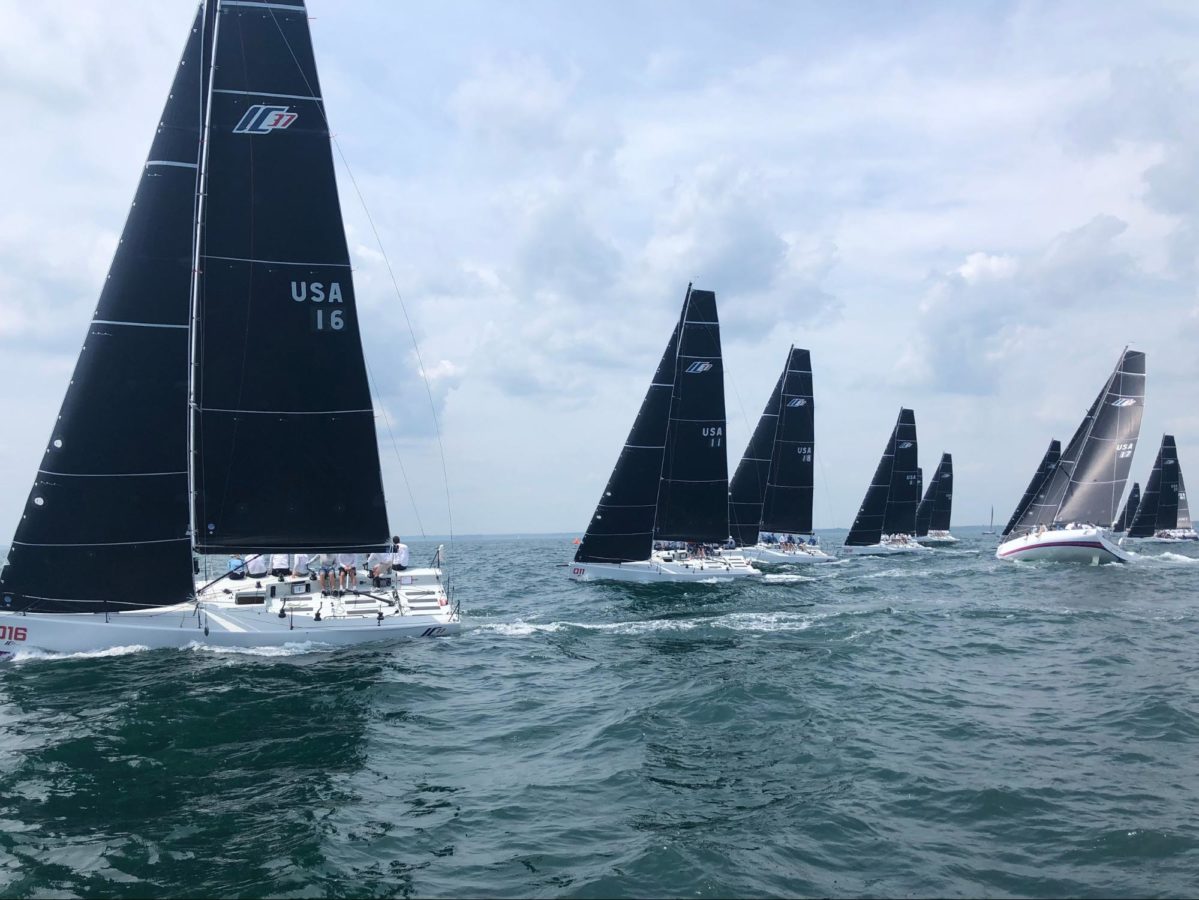
175TH NYYC ANNIVERSARY REGATTA
NYYC 175TH ANNIVERSARY REGATTA
Setting the Standard for New England Summer Racing
2019 marked the 175th year of the New York Yacht Club Anniversary Regatta, first run in 1844. A variety of yachts with an LOA of 30 feet or greater came to Newport, RI, and sixteen divisions of IRC, ORC, and classics had a week of racing with stiff competition, camaraderie, and the chance to earn bragging rights. Even the New England weather cooperated for once.
Participation in this grand event opened NYYC doors to four invited yacht clubs; Royal Thames Yacht Club, Royal Yacht Squadron, St. Francis Yacht Club, and Yacht Club Costa Smeralda. United States service academies also took part. Racing took place both inside Narragansett Bay and out in Rhode Island Sound, with a building sea breeze each afternoon. The 12s were back in action after their World Championship, divided up into vintage, traditional, modern, and grand prix fleets.
The hot new one design Melges IC37 class boasted 21 teams, an intensely tight fleet that highlighted Corinthian sailing. Other divisions matched up classic yachts, offshore multihulls, and an assortment of J/Boats, Swans, and high-performance grand prix racers. Daily socials after racing brought teams together to share what they learned. What better place to make new friends than the New York Yacht Club lawn, with its stunning view of Narragansett Bay?
North Sails clients had a solid showing, claiming ten division wins across 16 fleets: Good Trade in PHRF-Spin Navigator, Flow in offshore multihull, Apparition in ORC 2, Beau Geste in IRC 1, Rougarou37 in IC37, Outlier in Classic Yacht/ Spirit of Tradition, Kookaburra II in 12m Grand Prix, Nyala in 12m Vintage, Columbia in 12m Traditional, and Challenge XI in 12m Modern. Big congrats to all!
READ MORE
READ MORE
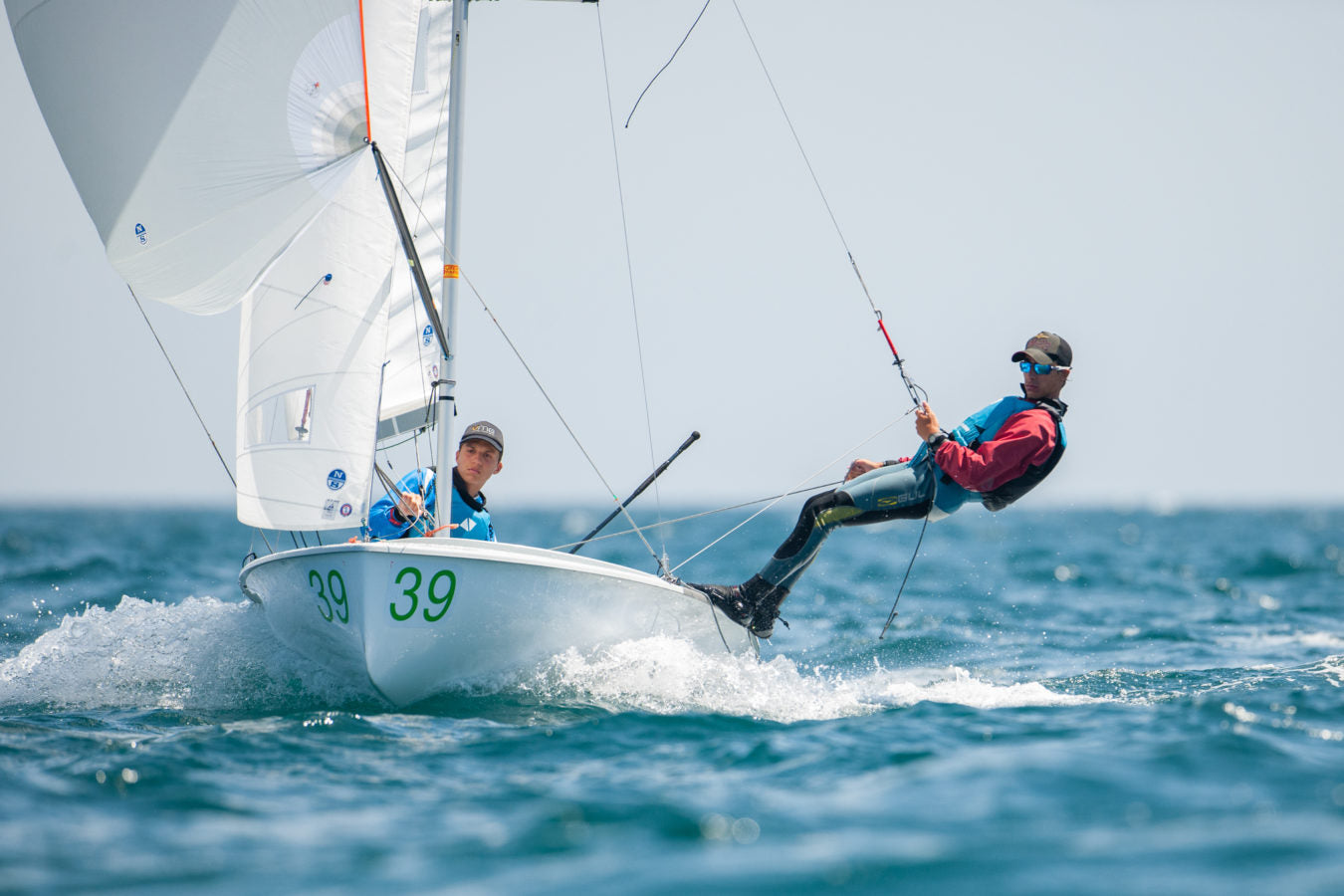
#NSVICTORYLIST: 420 WORLD CHAMPIONSHIPS 2019
#NSVICTORYLIST: 420 WORLD CHAMPIONSHIP 2019
North Sails Powers Two World Titles in Vilamoura
📸 Joao Costa Ferreira / osga.pt
The ten-race 420 World Championships 2019 concluded with two North Sails powered teams claiming gold medals in Vilamoura, Portugal. Wizner/Ameneiro of Spain won the Open class and the Greek team of Spanakis/Michalopoulos were victorious in the U17 Open class.
Wizen/Ameneiro, who won bronze at the 2018 Worlds, headed into the final day with a 16 point deficit. They chewed their way through the lead established by New Zeland’s Menzies/ McGlashan in Race 9 and secured their place at the top of the podium with a final attack in Race 10. North Sails 420 class leader Riccardo De Felico watched the competition unfold from the coach boat. “The last day of racing delivered tricky conditions, starting with a nice 13-knot shore breeze and dropping down to 4 knots. The Spanish team played their cards well and maximized opportunities in challenging conditions.”
Greece’s Spanakis/Michalopoulos, using the North Sails M11 main, J13 jib and S-05 Spinnaker was hungry for gold at the 2019 Worlds after their silver medal finish last year. The duo had a competitive series with France’s Delerec/Rossi nipping at their heels for the top podium position. “I am very happy,” commented Spanakis. “We managed to finish first even though we had a setback the day before because of our protest. But, we came back stronger and won the Championship.”
It is a great day at North Sails when we see our clients climb on top of the podium and receive their gold medals. And it’s extra special when we have two gold medal-winning teams at a single event. This success fuels our motivation to continually develop products that deliver results. “North Sails is so dominant because we are able to provide our customers with perfect sails,” explains De Felice. “Our 420 range is easy to control and trim, they are fast in all conditions, and we select materials that allow the sails to hold their shape longer.”
Next up for the 420 class are the Junior Europeans beginning July 23. Good luck to all our North Sails clients competing, and sail fast.
📸 Joao Costa Ferreira / osga.pt
📸 Joao Costa Ferreira / osga.pt
READ MORE
READ MORE
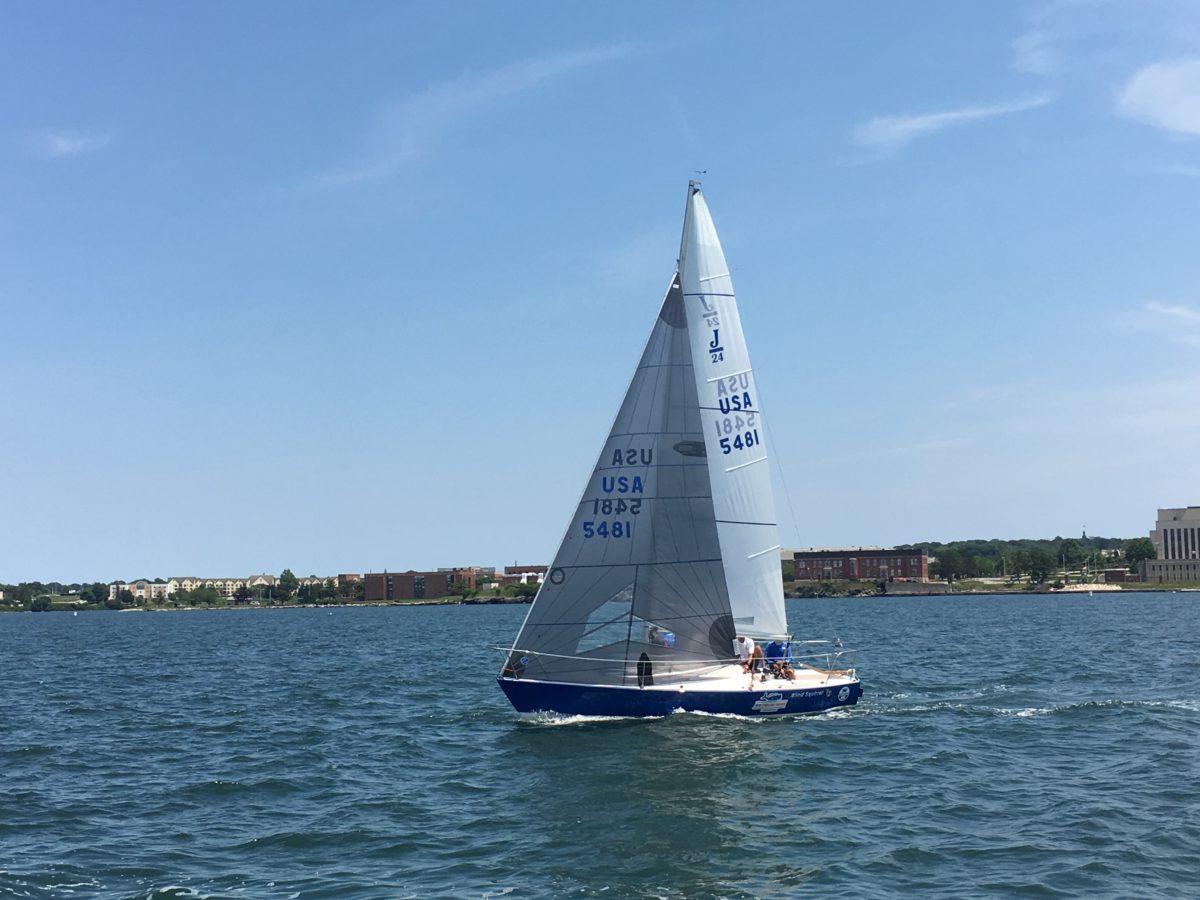
INTRODUCING: NEW J/24 CLUB RACE GENOA
INTRODUCING: NEW J/24 CLUB RACER GENOA
Will Welles Explains The Benefits Of The New Design
The new J/24 Club Race Genoa has been designed with local fleet racers in mind. On the water, it is easier to trim and more forgiving at the top end than aramid race jibs, as well as offering improved sail longevity. It is now launched on the J/24 Shop Inventory.
“The Club Race Genoa is based on our proven J/24 SD/TH Genoa,” J/24 World Champion and Class Leader Will Welles explains. “Built out of a special cloth, it looks similar to the standard sails and we are calling it the Xi Smoke! With polyester fibres instead of aramid, the new design is geared towards club racers who are looking to get a little more life out of their sail. For our club race customers who haven’t bought a new sail recently, this is the perfect way to improve results.”
“The Club Race Genoa is based on our proven J/24 SD/TH Genoa. With polyester fibres instead of aramid, the new design is geared towards club racers who are looking to get a little more life out of their sail” J/24 World Champion and Class Leader Will Welles explains.
In addition to using more cost-effective materials, the design team took a few steps to further improve the sail’s competitive life. The nature of the overlapping Genoa on the J/24 mast is that the back end of the sails get worn .
Last year, a prototype version of this design helped to fuel Steve Kirkpatrick’s team to victory at Newport’s Fleet 50 season. Two other teams used it to win the 2019 District 2 Championship and Easter Regatta.
For more information about which J/24 Genoa is right for your racing, talk to your local J/24 Expert.
READ MORE
READ MORE
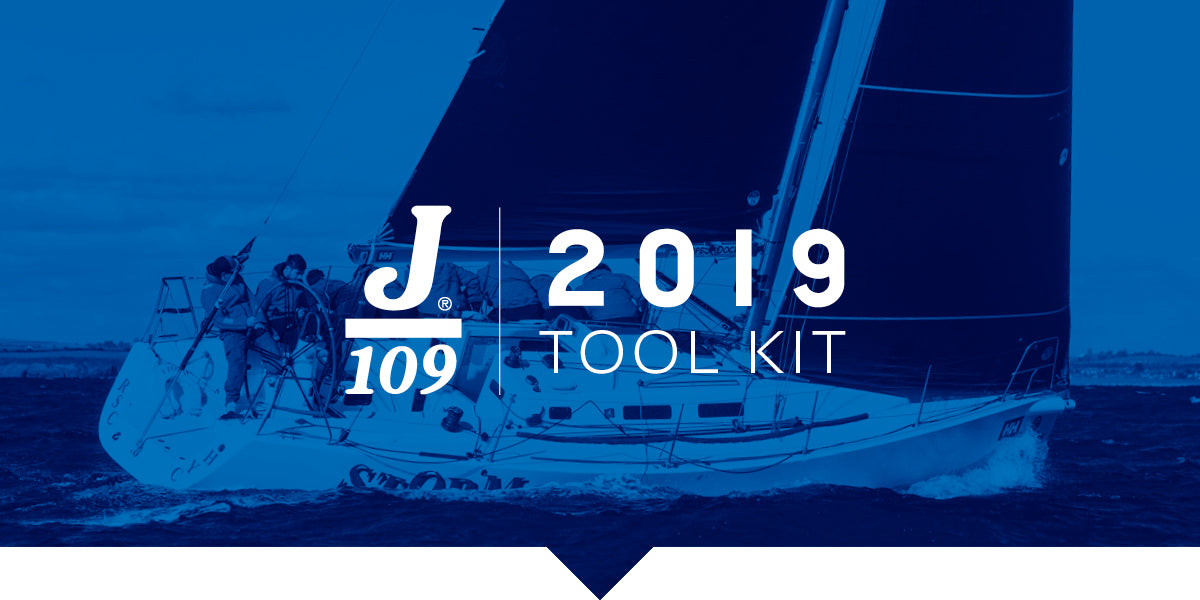
J/109 NORTH AMERICANS TOOL KIT
Tools For Success At The J/109 North Americans
The J/109 North Americans is just around the corner. Is your team ready? This Tool Kit will help. Created just for J/109 sailors, by our J/109 expert team.
Define Your Speed
Pulling all the pieces together can be challenging. Our brand new J/109 Speed Guide by class leader Jack Orr answers your speed and boathandling questions.
Tune For Speed
The North Quick Tuning Guide explains base settings and which sail models to use for the conditions. Learn more:
What Worked For Growth Spurt
At the 2018 J/109 North Americans, twenty teams battled for the title. We interviewed John Greifzu, owner-driver of Growth Spurt, who won the Corinthian title and second overall.
Onboard Communication
Onboard communication is a key tool for achieving peak race performance. We have some suggestions to help you communicate with your teammates more efficiently and effectively.
Working With The Best
Our J/109 sails deliver the best results for our clients. Contact your local expert and join us at the front of the pack.
READ MORE
READ MORE
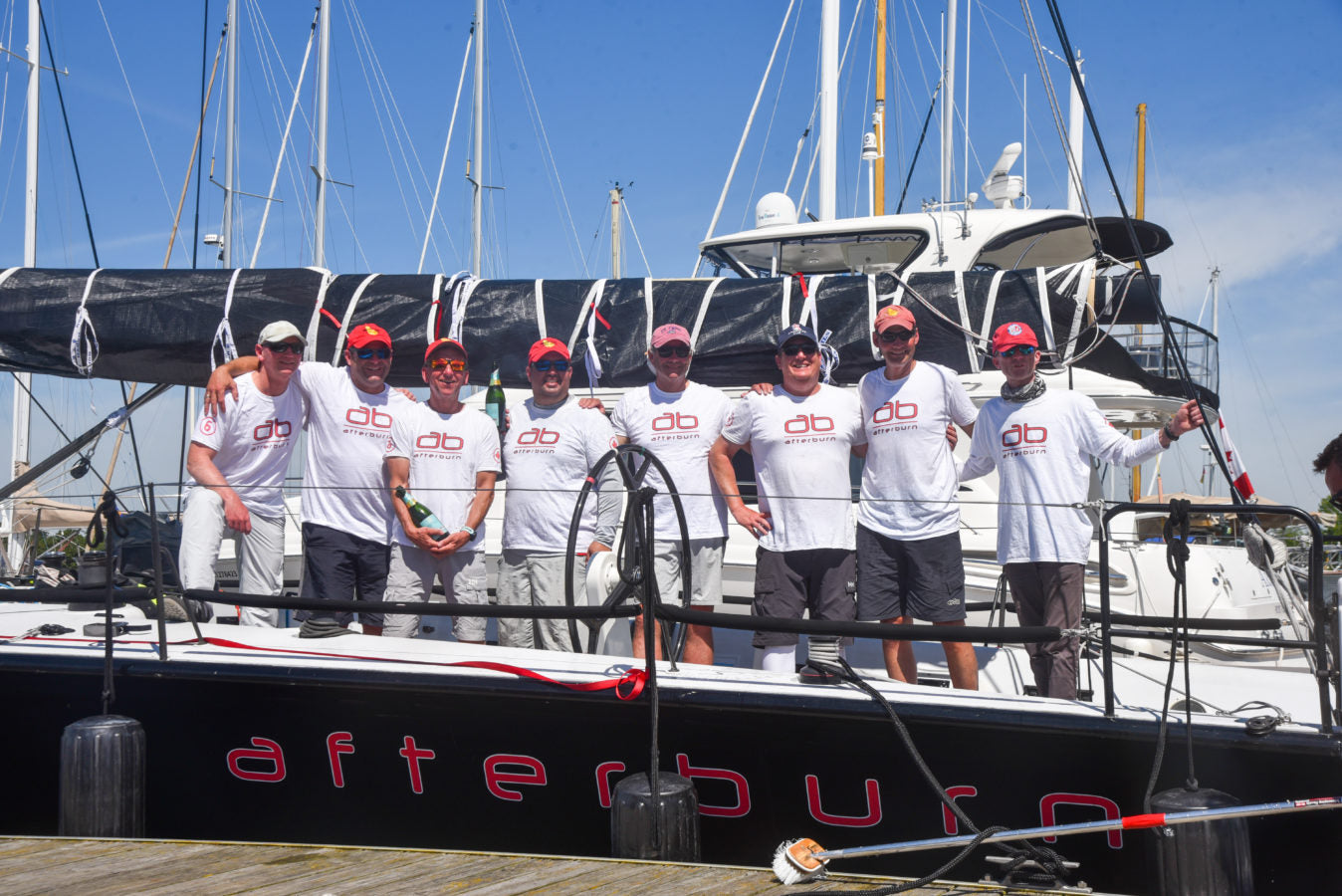
AFTERBURN TAKES LINE HONOURS FOR LO300
AFTERBURN TAKES LINE HONOURS FOR LO300
North Sails Clients Perseverance Pays Off
© Parker Media Management
A fight 'til the finish, Afterburn took home line honours for the 30th Edition of the Lake Ontario 300 Challenge for Main Duck Course. Owned by Darren Gornall and Craig Pirie, the crew vied for the win for the past several years and 2019 was their year. After 300nm around Lake Ontario, the crew battled it out the last 3nm with Hydromec from Quebec, owned by Dave Savard, with lights winds ranging from 1 knot to 2.6 knots. The Afterburn crew crossed the finish line at 10:50am for a corrected time of 1 Day 22 hrs 57 mins 27 secs. The secret to their light wind finish, besides perseverance, hard work and dedication was their Helix powered Code Zero. From shore you could see the Soto 40 coming in with their Helix up, hugging the shore, they furled it in, jibbed and unfurled it where they immediately picked up speed and soared to the finish. Local North Sails expert Hugh Beaton welcomed the crew on the dock and congratulated them on their win:
A heartfelt congratulations to the team for their well deserved efforts and tactical sailing across the lake.
The race started on Saturday morning with breeze - for once - which lead to an exciting race for both spectators and racers. Afterburn had a great start right off the line heading towards Ford Shoal. Despite a 40 knot squal that came through on Saturday afternoon, the crew sailed smart, stuck to their plan and played the long game for wind after rounding Main Duck Island.
© Parker Media Management
© Parker Media Management
© Parker Media Management
© Parker Media Management
READ MORE
READ MORE
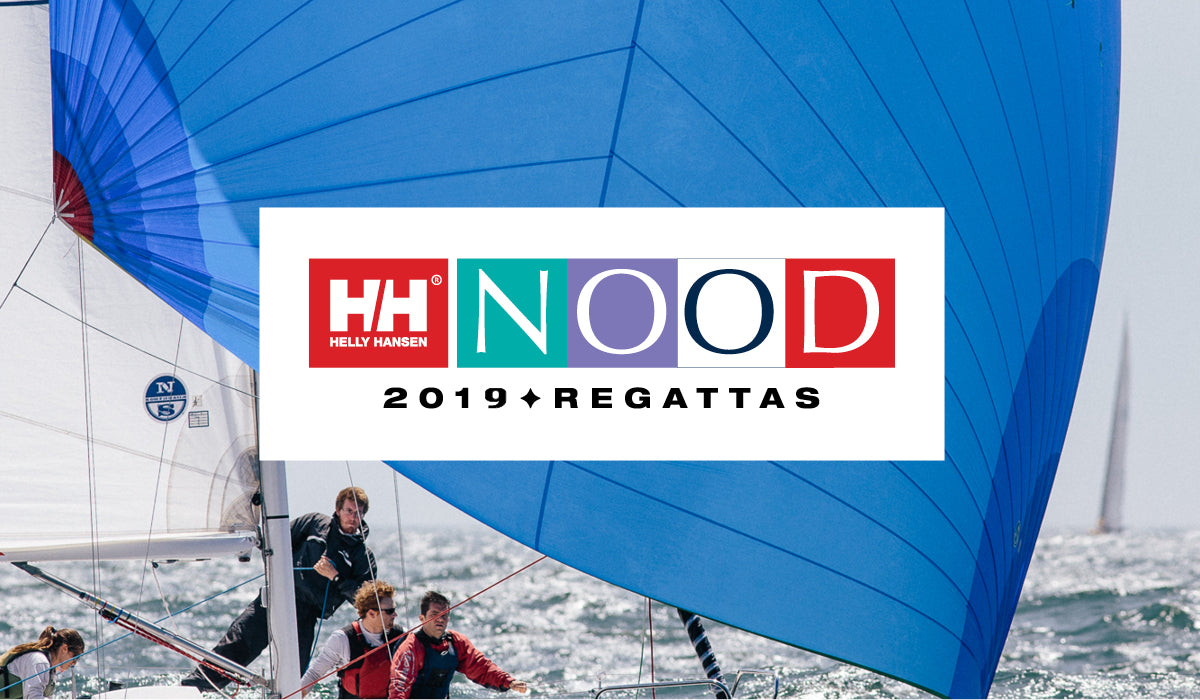
HELLY HANSEN NOOD REGATTA IN MARBLEHEAD
NORTH SAILS AT THE NOOD
Expert Advice & Sail Care At Your Fingertips
North Sails is excited to continue our sponsorship of the Helly Hansen NOOD Regattas, and Marblehead is the next stop on the circuit. North Sails local team will be on hand for all your sail care needs for the regatta, so whether you need to get your sails checked on prior to, or need overnight service during the race, our crew have your covered. Coupled with our sail care, the local team will be hosting a local knowledge panel to kick-off the event.
Local Knowledge Panel
North experts' and local sailors JB Braun, Mike Marshall and Alex Cook will be hosting a local knowledge panel to help get you ready for the NOOD. Join us prior to the skippers meeting on Thursday July 25th at 6pm in the Boston Yacht Club for some vital insights on sailing in local waters, what to look out for, and hear how the experts plan to navigate the weekend. See the full schedule of events here.
Overnight Sail Repair
Our Certified Service team will be on stand by for any sail issues. Each day after racing, look for the North Sails service van at Eastern Yacht Club and Boston Yacht Club for overnight repairs.
North Sails Salem 978-745-1400
J/70 Dock Talk
One Design Experts Allan Terhune and Zeke Horowitz will be holding a J/70 Dock Talk at EYC on Saturday July 27th after racing. Look out for the North flag and cooler on the dock and chat with the team on how to up your game for the next race.
North Sails Salem
Need help prior to the regatta? Contact your team at the Salem Loft.
READ MORE
READ MORE
NEW J/24 TUNING GUIDE & MATRIX
Updated Tuning Numbers For The PT-2 Loos Gauge
North Sails is never satisfied when it comes to making faster sails and offering information to help clients optimize the performance of the sails. With decades of experience sailing the J/24, North expert and two-time J/24 World Champion Will Welles has released a new Tuning Guide complemented by a Tuning Matrix for the J/24 class including numbers for the new Loos Gauge Model PT-2.
“We have condensed the information and added the PT-2 numbers which were missing. I recommend to download/print the new Tuning Matrix and take with you next time you go sailing. The matrix offers a starting point based on numbers of the average boats. We left some room for you to log in your own numbers and go from there.” said Will Welles.
Open New J/24 Tuning Guide
Download North Sails J/24 Quick Tuning Matrix: Loos Gauge PRO PT2 | Loos Gauge PRO Model B
READ MORE
READ MORE
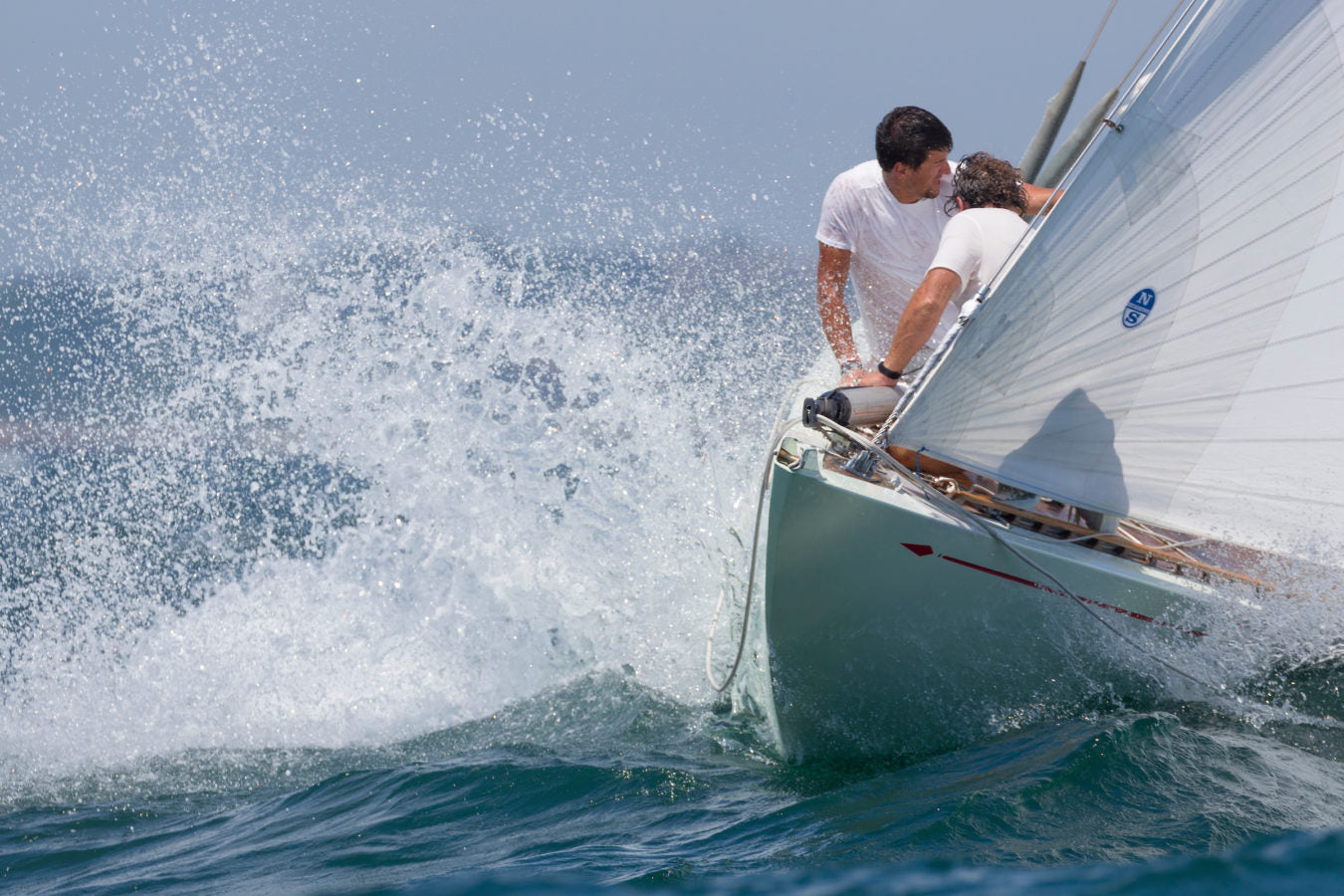
#NSVICTORYLIST: A TRIO OF 12 METRE WORLD CHAMPS
A TRIO OF 12 METRE WORLD CHAMPS ADDED TO THE #NSVICTORYLIST
North Powers Three World Champions and Packs The Podium in Newport
📸 Ian Roman / North Sails
North Sails is proud to add three new world champions to the #NSVictoryList off the back of the 12 Metre Worlds in Newport, RI. Beyond cleaning up on World Champ titles, North Sails outfitted the inventories on 12 of the 14 podium finishers. It has been an exciting five days of racing and we can’t think of a better conclusion to this historic event.
Conditions, competition, and camaraderie are three words that sum up the 2019 12 Metre Worlds. The nine-race series featured 21 boats hailing from six countries and is the largest gathering of 12 Metres to have ever sailed in North America. The crew lists were stacked with familiar names from past America’s Cups; trimmers from the late ’70s and ’80s getting the job done and giving the young crew onboard a run for their money.
“This has been a historic event and something the sailing world is going to remember for a long time”
Throughout the week, race mornings were plagued by postponements which gave way to a solid sea breeze in the afternoons. US12 Nyala, packed with current and former Luna Rosa teammates, clinched their Vintage Division victory on the penultimate day of racing to finish the regatta with eight bullets across the series. Jack LeFort’s KA 10 Challenge 12 had a strong regatta but began the final race day with uncertainty after a DSQ in Race 7. They docked out in second place for the Modern Division, two points behind US 27 Enterprise, won their final race and docked back in having been named World Champs. US 16 Columbia claimed their place on the World Champ roster after winning the event’s final race. The team under the guidance of Kevin Hegarty and Anthony Chiurco put all their cards on the table with the bold decision to cover US Nefertiti, a gamble that paid off for the Traditional Division winner. And although they were not sailing for a World Championship, US 42 America II bested their New York Harbor Sailing Foundation sparing partner US 46 America II in the Spirit Division.
“As cool as the racing on the water was- all the participants are going to remember walking down the dock each morning,” said Ken Read, President of North Sails and tactician on World Champion Challenge 12. “Seeing these boats in one place, and all your friends from past regattas is really special. The boats were evenly matched and each of the teams sailed really well. This has been a historic event and something the sailing world is going to remember for a long time.”
North Sails was the Official Sailmaker to the 12 Metre Worlds and teamed up with sailing photograph Ian Roman to document both racing and shoreside activity. We have made a selection of images available for download and encourage you to share these on your own social media channels. All sailing fans can access the images by clicking this link. Hashtags: #12MetreWorlds2019 #12mRClass #NorthSails Photo credit @ianroman.
READ MORE
READ MORE
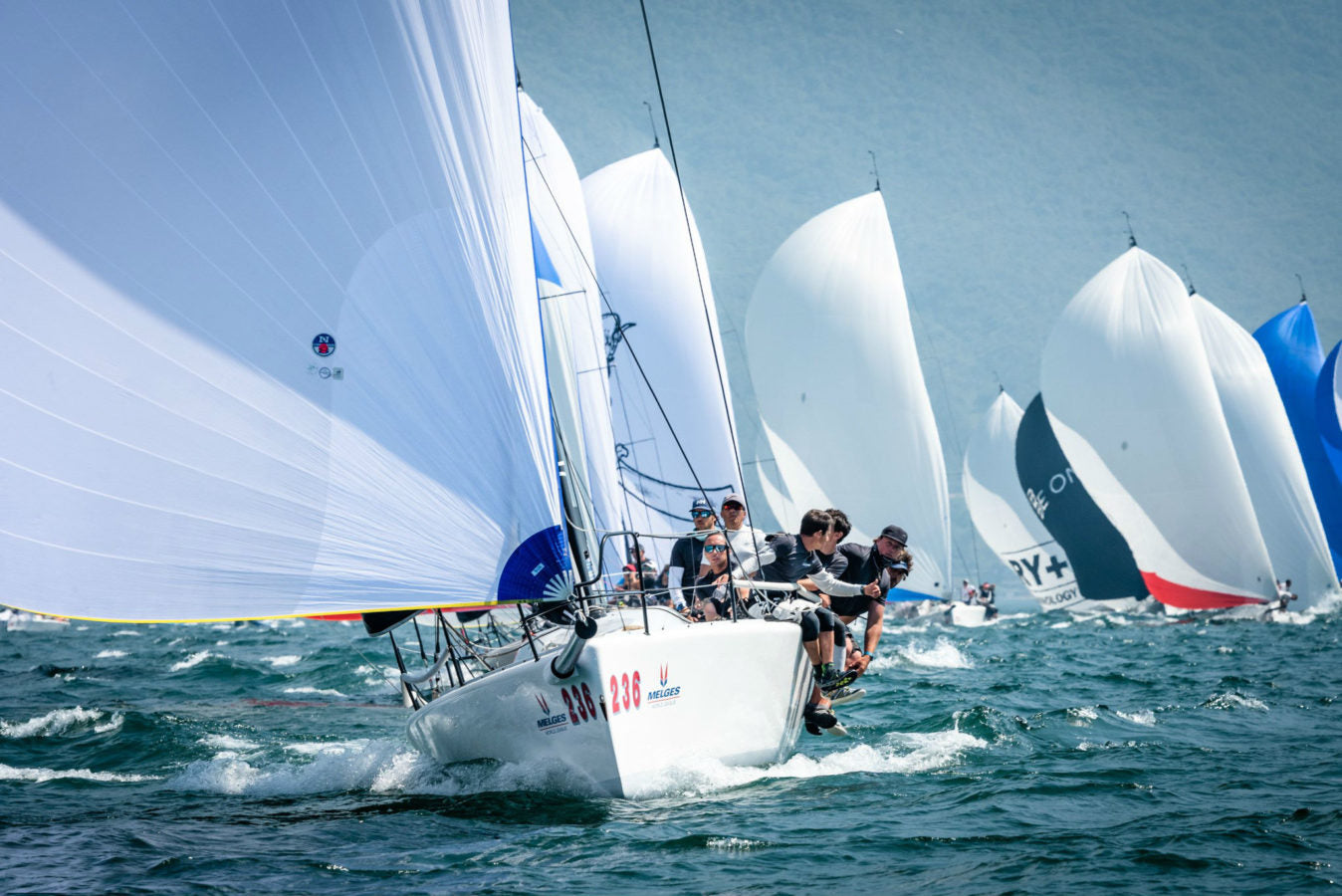
MELGES 32 WORLD LEAGUE: DONINO DOMINATES
MELGES 32 WORLD LEAGUE: DONINO DOMINATES
North Sails Fuels Victory Through Tough And Exciting Racing
Melges 32 World League Event 3 Champions, Donino, ARG 236 📸 Barracuda Communication
Luigi Giannattasio’s boat Donino (ARG) took gold at Event 3 of the Melges 32 World League after completing seven races in Riva del Garda. This is the team’s second victory in the Melges 32 World League 2019.
The team sails under the Argentinian flag of the owner Luigi and his son Pilu, but the rest of the team is a mix of nationalities: Kiwi, Russian, Italian, and Spanish. This event marked only their second time sailing together as a team, so we asked the winning tactician, Manuel “Manu” Weiller (ESP) how they became successful so quickly.
“The Melges 32 fleet is hugely competitive. With 19 boats all determined to win and very high level sailors, every race was exciting and tough! We used the MNi-5 3Di RAW Mainsail and the Mi-4 3Di RAW Jib.”
With medium winds all week thanks to the reliable Ora wind, Manu says they were always one of the fast boats. “Our team has the knowledge to get 100% out of our boat and how to sail fast in every situation. 3Di Raw and the Airex 650 spinnaker cloth have proven to be a great materials, very good for this size of boat. The Melges fleet is very familiar to Lake Garda, sailing here every year. For this regatta, the race course was much further south than normal, which opened up the game tactically a bit more.”
“3Di Raw and the Airex 650 spinnaker cloth have proven to be a great materials, very good for this size of boat.”
Asked what he thinks was most important to the win, Manu adds that “gains in this fleet are made by reducing the number of mistakes. Anticipating laylines to the next shift was the most challenging part.”
We look forward to watching the team onboard Donino at the World League Event 4 in Barcelona, Spain.
Browse the Melges 32 Shop Inventory.
Podium Celebrations 📸 Barracuda Communication
Giogi, ITA 172 📸 Barracuda Communication
Casino Royal, POL 204 📸 Barracuda Communication
Vitamina, ITA 194 📸 Barracuda Communication
READ MORE
READ MORE
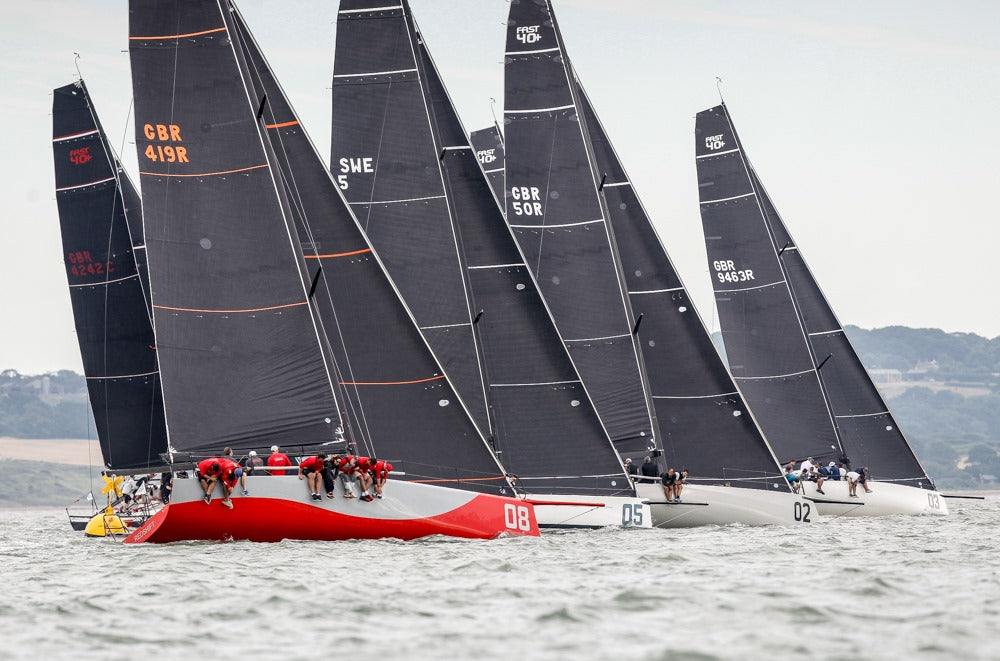
#NSVICTORYLIST: IRC NATIONAL CHAMPIONSHIP
#NSVICTORYLIST: IRC NATIONAL CHAMPIONSHIP
Seven Division Wins, Four Podium Sweeps, And A National Title
📸 Paul Wyeth / pwpictures.com
The Royal Ocean Racing Club’s 2019 IRC National Championship was dominated by strong Solent tides and varied wind conditions. North clients had an excellent showing in the 22-boat fleet, snagging trophies in seven divisions.
The overall winner was a surprise to many, since the owner/skipper hails from Falmouth, doesn’t regularly race on the Solent, and was a first-timer at the IRC Nationals. Stuart Sawyer’s J/122 Black Dog posted four bullets in eight races and only had one score out of the top five, winning both the IRC Performance 40 division and IRC Nationals overall by 15 points. “We were constantly having to change gears, but my crew was amazing.I have never seen them hike harder,” he said. Read the full interview.
In the HP30 division, the Farr 280 Toucan scored seven bullets. Anthony and Alex Locke took charge in father/owner Glyn’s absence. “It was a great regatta,” Anthony stated. “We were really pleased with the organization. It felt like we sailed well and we had great racing with all of the HP30s. Today was quite challenging—very puffy—and the race committee did a good job getting two races in… I didn’t think it was going to happen.”
In the Fast 40+ fleet, Peter Morton’s Girls On Film won by 14 points over Tony Dicken’s Jubilee and Ed Fishwick’s Redshift. “We had a pretty good weekend with seven firsts and a second place finish,” explained Girls On Film boat captain Nick Butt.
Tony Langley’s Gladiator finished first in IRC One, just ahead of David Collins Tala. North clients swept the podium in both IRC Two (Black Dog, Cobra, and Yes!) and IRC Three (Leon, Incognito, and Xanaboo). In IRC Four, Christopher Preston’s J/109 Jubilee swept the division by a notable amount, and Nigel Goodhew’s Sunfast 3200 Cora placed third.
📸 Paul Wyeth / pwpictures.com
📸 Paul Wyeth / pwpictures.com
📸 Paul Wyeth / pwpictures.com
📸 Paul Wyeth / pwpictures.com
📸 Paul Wyeth / pwpictures.com
READ MORE
READ MORE
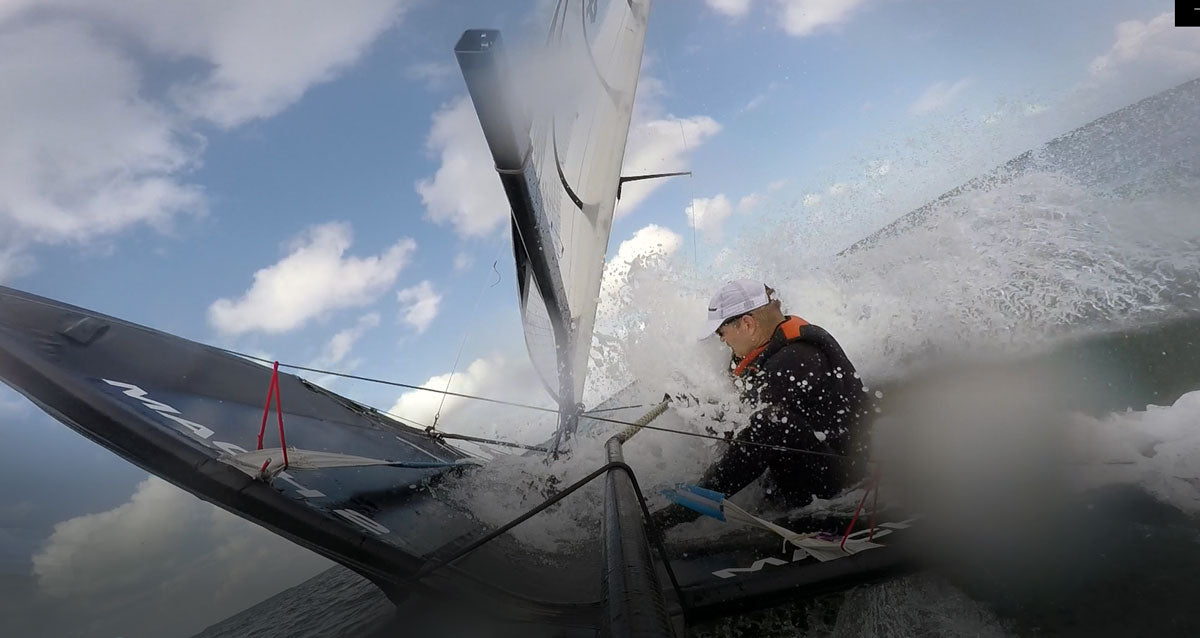
MOTH NEWBIE: DAN NERI LEARNS TO FOIL
MOTH NEWBIE: DAN NERI LEARNS TO FOIL
The North Sails CEO talks about his recent sailing—and swimming, and crashing—experiences
When I first saw a photo of a foiling Moth in Seahorse Magazine I did not understand what I was looking at. Since then, as I watched foiling expand from extreme dinghies to multihulls and offshore monohulls, I took the attitude that foiling came a little too late for me. I figured that, at 60 years old, my learning days were behind me. But after my Laser training partner Scott Ferguson talked me into a ride on his Moth last summer, I was hooked. Two weeks later I bought a used boat, took delivery in September 2018, and my adventures as a Moth newbie began.
Welcome newbies
Like all recreational one design classes, the Moth class is welcoming to newcomers. The experienced sailors support the bungling beginners because they, too, had to fight through the learning frustration, the broken boat parts and the bodily bumps and bruises, before gaining the skills required to get around the bay or race course. As class veteran Anthony Kotoun explains it, “We all want to get you up to speed so we don’t have to wait around or worry about you.”
On land there are no secrets. Everyone is happy to share rigging and setup ideas and even spare parts. On the water, coaching is mostly by means of “fly-bys” to demonstrate the right take-off angle, heel and sail trim. Back on shore, the best coaching of the day comes as small suggestions, words of encouragement, and reminders that everyone struggled at the beginning.
It’s complicated
The boat itself is a complicated machine. After decades of Laser sailing, I valued a high ratio of sailing time to rigging and unrigging time. The Moth is a different beast. It takes an hour to set up, and half an hour to unrig and put away.
When my new-to-me boat arrived last fall, I was eager to learn as much as I could before the Rhode Island sailing season ended. With the days growing shorter, the water colder and the westerly breeze stronger, I felt pressure to cram in learning time between the end of the work day and the beginning of night.
Setup is part of the fun
At first it seemed like everything was extremely difficult, from setting up the foils to attaching the outhaul. My first day sailing alone I had so much trouble rigging up that I ran out of daylight and never got in the water. The next day was better, even though I ended de-rigging in the dark, shivering after 30 minutes of swimming and 30 minutes of sailing and cursing at myself while looking for ring dings in the sand. But over the first 10 hours of sailing (20 hours of rigging and unrigging), I progressed from fighting the boat to a sort of affectionate truce. I learned to embrace the boat maintenance tasks as a hobby. And I accepted that rigging and foil setup time is part of the game and not just another chore.
Making it my own
Every Moth is slightly different. Mine arrived with all the required controls plus a canting rig. When I emptied the box onto the lawn I found two sets of vertical foils, a total of 6 horizontal foils, three masts and 4 different sails. These parts are not all interchangeable and for some reason, Moth parts are rarely labeled. It turns out that Patrick Wilson, the prior owner of Moth #4425, is an expert rigger and a notorious gear-head. Gradually I have modified Patrick’s Moth with an emphasis on simplicity at the expense of top end performance. Now it feels like my own boat and when I get it going I find myself marveling at the magic it produces, skimming above the surface of the bay, making no sound except the flicking of the wand. Three words keep running through my head: “This is cool.”
After about 30 hours of sailing (and 60 hours of rigging and unrigging), I can foil with confidence in the limited window of 8-14 knots. My next goal is a foiling jibe, though I know that will take a lot more time. Compared to most dinghies, building the basic skill set for the Moth is difficult, especially when you’re almost too old to learn new tricks.
Read more about Dan’s Moth adventures:
How to Build Your Moth Foiling Skills
How to Rig a Foiling Moth
READ MORE
READ MORE
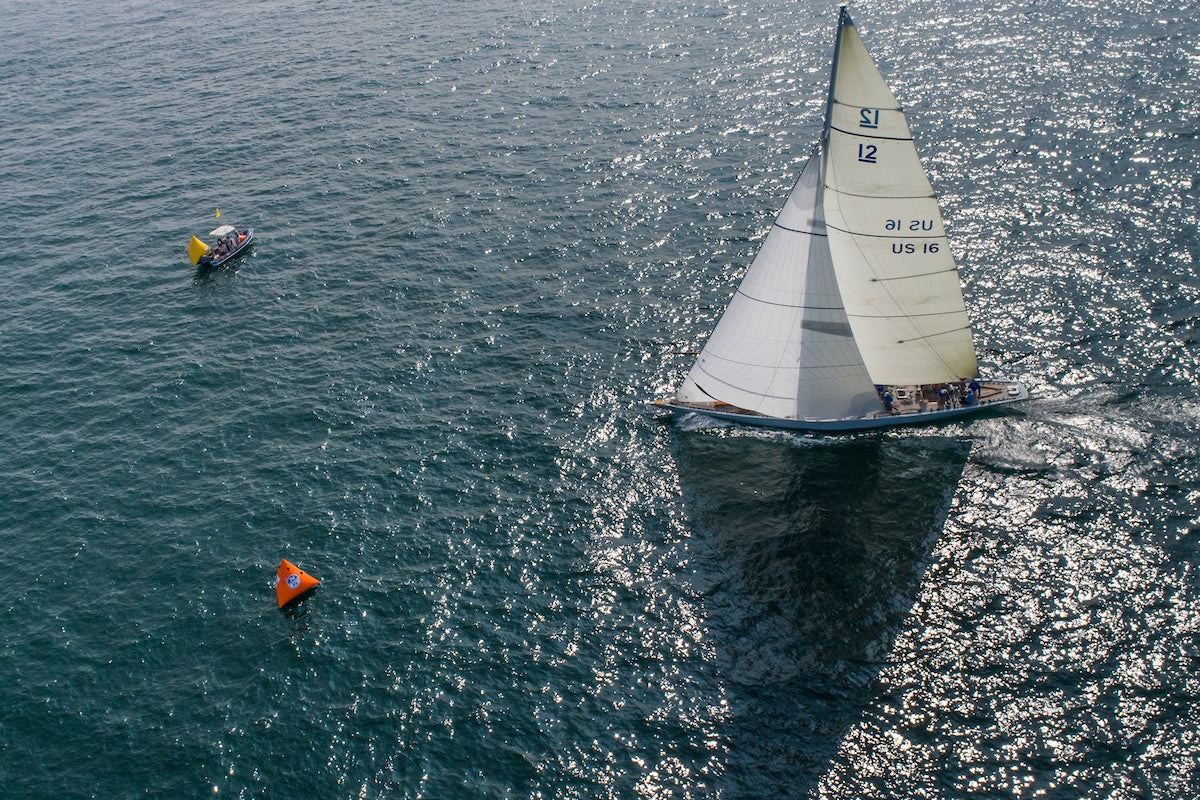
12 Metre Worlds Photo Journal
12 METRE WORLDS PHOTO JOURNAL
Sharing Our Favorite Images From the 12 Metre Worlds in Newport, RI
📸 Ian Roman
North Sails is proud the be the Official Sailmaker to the 12 Metre World Championship, which began in Newport, Rhode Island on July 8th. Our sponsorship included bringing in sailing photographer Ian Roman, to document racing and shoreside activities at Sail Newport. We hope you’ve had as much fun following along with us as we’ve had sharing Ian’s content. The event is heading into the final few days, so it’s time to share some of your favorite 12 Metre class images so far.
We encourage you to check out our free social media library, and download and share the event photos on your own channels. Just be sure to credit Ian Roman, and tag @12mmetreclass, @12mrworldchampionship and @north_sails on Instagram and add #12metreworlds2019.
📸 Ian Roman
📸 Ian Roman
📸 Ian Roman
📸 Ian Roman
📸 Ian Roman
📸 Ian Roman
Watching the 12 Metres race by Castle Hill on Narragansett Bay brings a whole new light on spectator sport 📸 Ian Roman
READ MORE
READ MORE
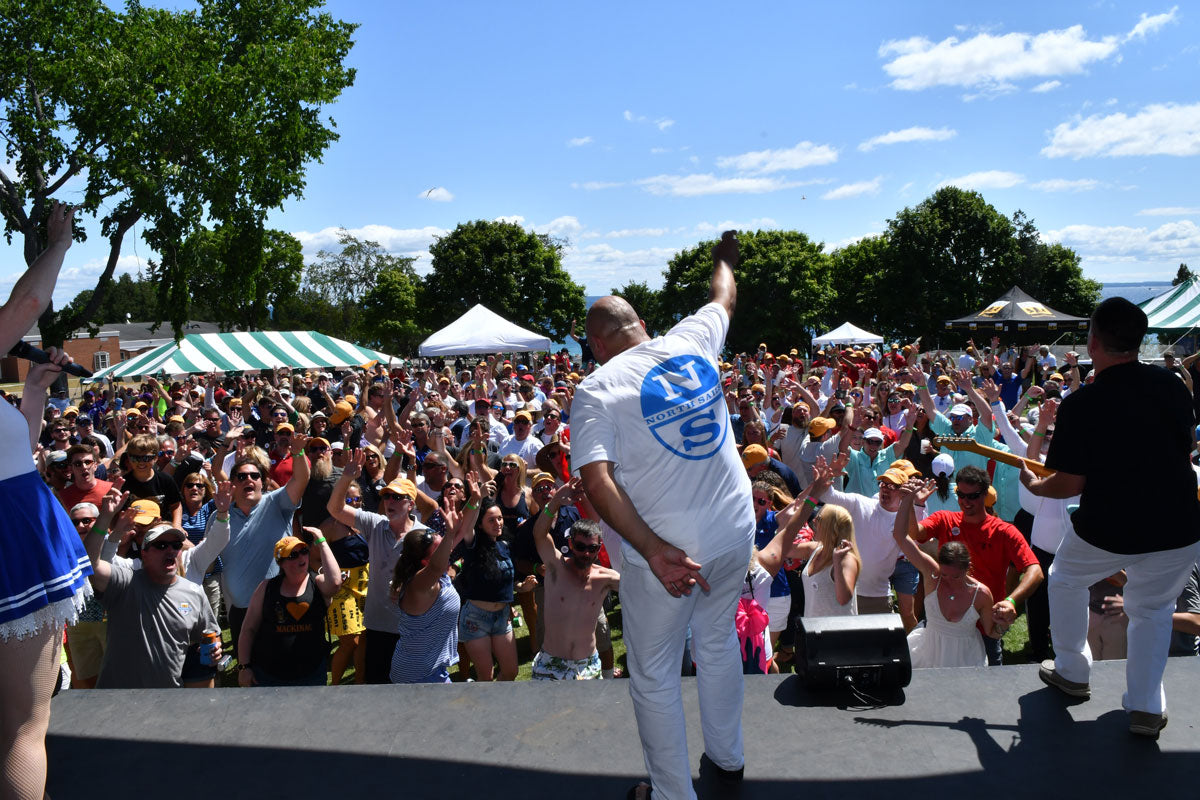
TWO GREAT RACES MEET ON MACKINAC ISLAND
TWO GREAT RACES MEET ON MACKINAC ISLAND
Chicago-Mac and Bayview-Mac: What’s the difference?
The parties on Mackinac Island are fun for supporters and racers alike.
Every summer, there are two annual overnight races on the Great Lakes to Mackinac Island, and for the uninitiated they might tend to blend together. Both finish at the top of Michigan. They’re both in July, on back-to-back weekends; which race goes first alternates from one year to the next. And they both provide enough of a tactical challenge to keep sailors coming back, year after year.
One such veteran is Karl Kuspa. He’s sailed both races enough times to be an “Old Goat” (25 or more), so we asked him to compare the two. As a past commodore of Bayview Yacht Club, he's careful to first express his own preference. “The Bell's Beer Bayview to Mackinac Race is by far the superior of the two races,” he states firmly—tongue slightly in cheek. He also explains that whichever race starts on the second weekend each year sees a definite spike in entries, because Mackinac Island is halfway to the other city. “If you race from Bayview to Mackinac, you're a little less than halfway through your delivery to Chicago. And vice versa.”
Favorite part of a race to Mackinac Island
Karl says his favorite part of either race is going out to the starting line. “For the Chicago race, boats do a little parade in front of Navy Pier, in front of a crowd of a couple thousand people, with an announcer identifying the boats and whatnot.” Leaving from Bayview Yacht Club in Detroit, competitors first have to navigate up the St. Clair River to get to the start off Port Huron. It’s a slow trudge, against a three-knot current, “but the shoreline’s lined with people—they estimate three, four hundred thousand. It is really cool to see the enthusiasm, people who may have never even stepped on a sailboat, showing up to watch these boats make their way out to the starting line.”
After navigating up the St. Clair River, the Bell’s Beer Bayview Mackinac fleet ties up in Port Huron to await the start.
Great Lake Sailing
A sailboat race start is a sailboat race start, Karl says, but once underway the two races are tactically different. “On the Chicago race, you tend to sail one of the two shorelines. When do you go inshore to get the better thermals, and how soon do you have to break away from the shoreline before the nighttime doldrums arrive?” The shoreline breezes may play a part in the Bayview race as well, but the longer Cove Island course “takes boats away from shore, so it becomes more about positioning for the prevailing weather.”
At 333 miles, Chicago is the longer of the two races—and there’s no shorter option for the smaller boats. For Bayview, the Shore Course is about 220 miles while the Cove Island Course is about forty miles longer.
Both races offer plenty of tactical challenges, as well as a chance to test a boat’s legs.
Both races often have a “restart,” Karl explains. For Chicago, it’s usually at the Manitou Islands. “The shorelines get much closer together because the Manitous are pretty good-sized, and they affect the thermal breezes. A lot of times there's a dead zone, so it recompacts the whole fleet back together. A lot of Chicago races are won and lost in the Manitous.”
The equivalent reset point on the Bayview race is the Cove Island turning mark, which requires a ninety-degree course change. “You could have a strong off-the-wind leg, and then turn the mark and have a long beat after that. A lot of boats that lead at Cove Island don't lead at the finish, because they might be optimized for one point of sail but not do as well on the second half.”
Finish festivities on Mackinac Island
This year, Karl is not sailing either the Chicago-Mac or the Bell’s Beer Bayview-Mac; instead he’ll be on the dock to congratulate his wife when she finishes her 25th Bayview race—and then the couple plans to apply for Old Goat status together. (Nancy will be one of only a couple dozen women on that list.) But first, Karl is going to enjoy the pre-finish party. “They have activities on the island for significant others,” he says, “so I'm going to the big porch party at the Grand Hotel on Sunday, with all the wives and girlfriends. I'm looking forward to it!”
Images courtesy of Element Inc.
READ MORE
READ MORE
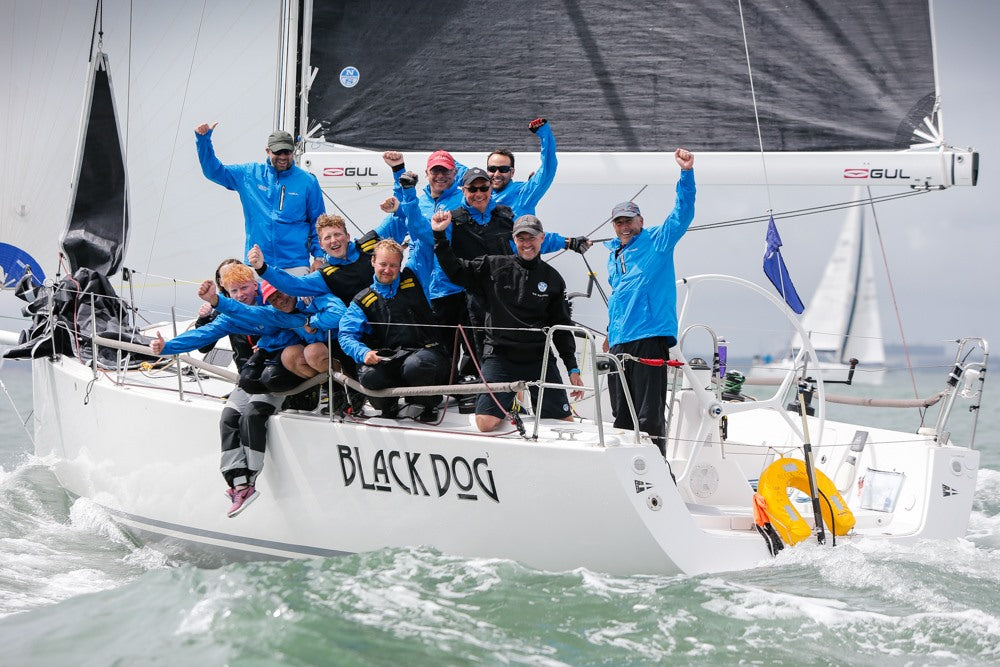
FALMOUTH TEAM TAKES ON THE SOLENT AND WINS IT ALL
FALMOUTH TEAM TAKES ON THE SOLENT AND WINS IT ALL
Interview With Stuart Sawyer’s Black Dog, 2019 IRC National Champions
📸 Paul Wyeth / pwpictures.com
The IRC National Championship in Cowes, UK, attracted over 100 boats and twenty-two boats in IRC2, the most competitive fleet . Stuart Sawyer’s J/122 Black Dog scored four bullets in eight races to secure the IRC Performance 40 division win and the Overall IRC title by 15 points. Stuart has been racing with the same team for the better part of nine years, but this was their first time competing in the IRC Nationals. It was an idea that came to him after the Dartmouth Royal Regatta race last year, when North Expert Jeremy Smart was onboard calling tactics; “we may have a chance to do well if we keep this up,” Stuart realized.
“It was encouraging racing with Jeremy,” he told us a few days after the IRC Nationals victory. “That planted the seed—maybe this year, we should go a bit further and push ourselves. Jeremy was pleased with how the boat was running, and that was very encouraging. Believing in our boat, and our sails, was all the positivity we needed.”
Stuart was “over the moon” with his crew’s hard work over the course of the weekend, which required every bit of the team’s attention. He grew up racing dinghies with his brother Andrew and windsurfed professionally for many years. In 2007, after a hiatus, he came back to racing sailboats. “I’m a surfer at heart,” says Stuart. “So I like asymmetrical sailing, the A2 is great, you can play all the waves and soak better, it just suits my style of sailing.”
Stuart had a J/97 for three years, and after winning the Nationals he upgraded to a J/111—where he also won the Vice Admirals Cup and National Championships in his third year. He says the J/122 is a “significantly stiffer boat,” with more displacement, and goes upwind very well. “It doesn’t plane like the J/111, but for a 40-footer it sure can surf and is responsive downwind. The best part about racing J boats is that the layout is mostly the same. The loads are greater as we increased our waterline, but we were able to quickly adapt and connect with the boat as a team.”
📸 Paul Wyeth / pwpictures.com
Stuart claimed the 2019 title with his long-time team of friends: Mainsail trimmer Garth Weaver, also known as “company secretary” as he handles all the logistics, Roger Ford in the pit, aka the Terrier for pushing everyone to hike harder and never let up; jib trimmer Josh Redgrave, who joined the team when he was 16 years old and now runs the boat; kite trimmer Jonathan ‘JB’ Barnicoat; Tom Redgrave (Josh’s brother), pit #2 for the Nationals and also covered navigation as normal navigator Simon Boote didn’t race; bow was run by Sandy Proctor, who has been sailing with Stuart for 11 years; mast Hans Wehmeyer; and mid-bow/grinder Jack Elsby. Two new crew also joined for the regatta: floater Ruby Dent ; and tactician and North expert Shane Hughes.
“There is something special about sailing with friends,” says Stuart. “I think that’s why we’ve come so far and done so well over the years. The crew work was spot-on, and we know each other very well. When we get into the moments where we felt slow we are happy to change gears, if we have a bad start or there is an issue we are able to shout ‘reset!’, and everyone knew to work harder to improve boat speed.”
“One of our best moments last weekend was race 2 on the Saturday: we didn’t get off the line well, and we were buried at the start. We were outside the top 15 around the windward mark but we kept working at it, making huge gains on the downwind leg. Shane focused on keeping our air clear and the crew worked the boat really hard to keep fast and deep. We were able to get ourselves ahead of a pack and into a place where our tactician Shane had some freedom to make decisions, and we had a great second beat, a pulled out a 4th in that race. Being able to fight back helped us win overall.”
“It took a lot of time to get the rig right on our 11-year old boat, he adds. We put new rigging on the boat in 2017 when it was refurbished, but we weren’t happy with the set up. Dave Lenz then analyzed some photos and we went about a re-set before Dartmouth last year. I feel our settings now are good and we have found a sweet spot for performance”.
Shane Hughes says it was a pleasure to join this team. “The event went very well for us—better than expected in many ways. We had a lot to figure out, in a very short period. Stuart and the guys were great, very welcoming, and open to taking on a few new ideas and suggestions. The team (other than me) has been together for 9+ years, which makes them quite a cohesive unit. They sail the boat well and know how to get the most out of the boat. So it was easy to step in and add a little extra value to that.”
There is something special about sailing with friends. I think that’s why we’ve come so far over the years.
The effort that the team put in was impressive, Shane continues. “They wanted to get a good result at the event. The whole atmosphere on and off the water helped their performance. I have been lucky enough to sail with some great Cornish sailors in the past, and there is always plenty of banter flying around, which helps create a relaxed and inclusive team culture. There is a good mix of experienced, very keen, and talented younger guys too. It was a fun process and a successful regatta.”
After the regatta, the boat went home to Falmouth, where it will do some local sailing before competing in the Dartmouth Regatta later this summer.
“I look forward to joining the guys again in the future,” Shane concludes, “but in the meantime, keep an eye out for them as I’m sure there will be more great things to come from this team!”
North Sails expert Dave Lenz delivered Black Dog‘s new 3Di sails in 2017. “I have been working with Stuart for a few years now and we’ve done quite a bit of work with various J/122s, so we were able to pass some of the lessons learned. I’m very happy for Stuart and his team.”
📸 Paul Wyeth / pwpictures.com
READ MORE
READ MORE
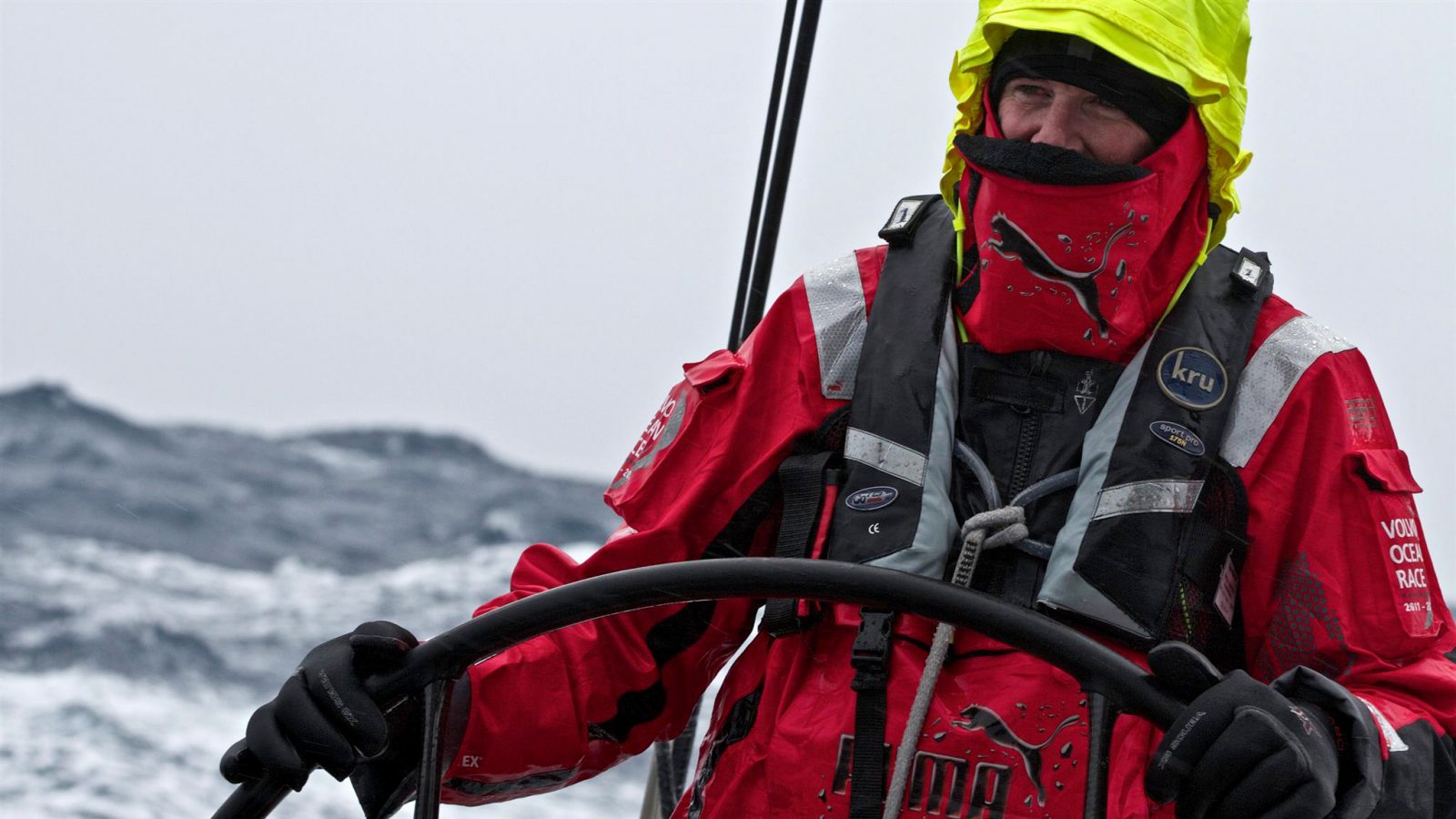
KEN READ ON CROSSING OCEANS
CROSSING OCEANS
Ken Read Shares His Perspective on Sailing Across the Atlantic and Pacific Oceans
There are currently two big ocean races on the radar this week; finishers are trickling in from a very light air Transatlantic Race, while the Transpacific Race fleet sets off for the 50th edition of this West Coast Classic. North Sails President Ken Read has done his fair share of ocean sailing—eight Transatlantics alone, plus plenty of other crossings.
We asked Ken for his perspective on these two races, and to share a bit of insight into his experience in crossing both the Atlantic and Pacific Oceans. He says these two sailing events could not be any more different.
Transatlantic Race
Typically cold and windy and rough, this year’s race was often painfully light with high pressure and rain and upwind sailing dominating the race track. Crossing the Atlantic is predictable in its unpredictability.
I have had the distinct pleasure of crossing the Atlantic eight times, and each time brought its own craziness. My first time was with Ericsson for a leg of the Volvo Ocean Race 2005-06, when a life was lost and a boat sank. Talk about unpredictable.
On another Atlantic crossing aboard the 90’ Rambler, we sailed through a low pressure so large that one edge of it hit America and the other edge bumped up against Ireland. On Comanche, we set a new 24-hour speed record during the 2015 Transatlantic Race. And although it was not a Transat race year, in 2016 Comanche set a new monohull Transatlantic record of 5 days, 14 hours, 21 minutes and 25 seconds.
Transpac
And then there’s the Transpac, about as predictable as it gets. This race is a downwind sleigh ride mostly in T-shirts and shorts. Too much sun is about the biggest issue. Breaking the elapsed time record (5 days, 1 hour, 55 minutes and 26 seconds) with Comanche was about the most pleasurable multi-day sail I’ve ever done—by far! (For more memories from other North Sails veterans, read 50th Transpac.)
Quite different, but…
All of these crazy adventures had one thing in common for me, and that was North Sails. We are proud to help people prepare for whatever conditions these famous distance adventures can throw at a yacht and crew. Whether you are crossing large bodies of water in days or weeks, racing or cruising, you need a safe working sail package that covers the entire gamut. Our company’s team of experts thrives on helping people reach their dreams, and seeing the smiles and hearing your stories at the end of each adventure—predictable, or completely unpredictable—makes it all worthwhile.
Congratulations to the Transatlantic fleet, and good luck to the Transpac sailors!
READ MORE
READ MORE
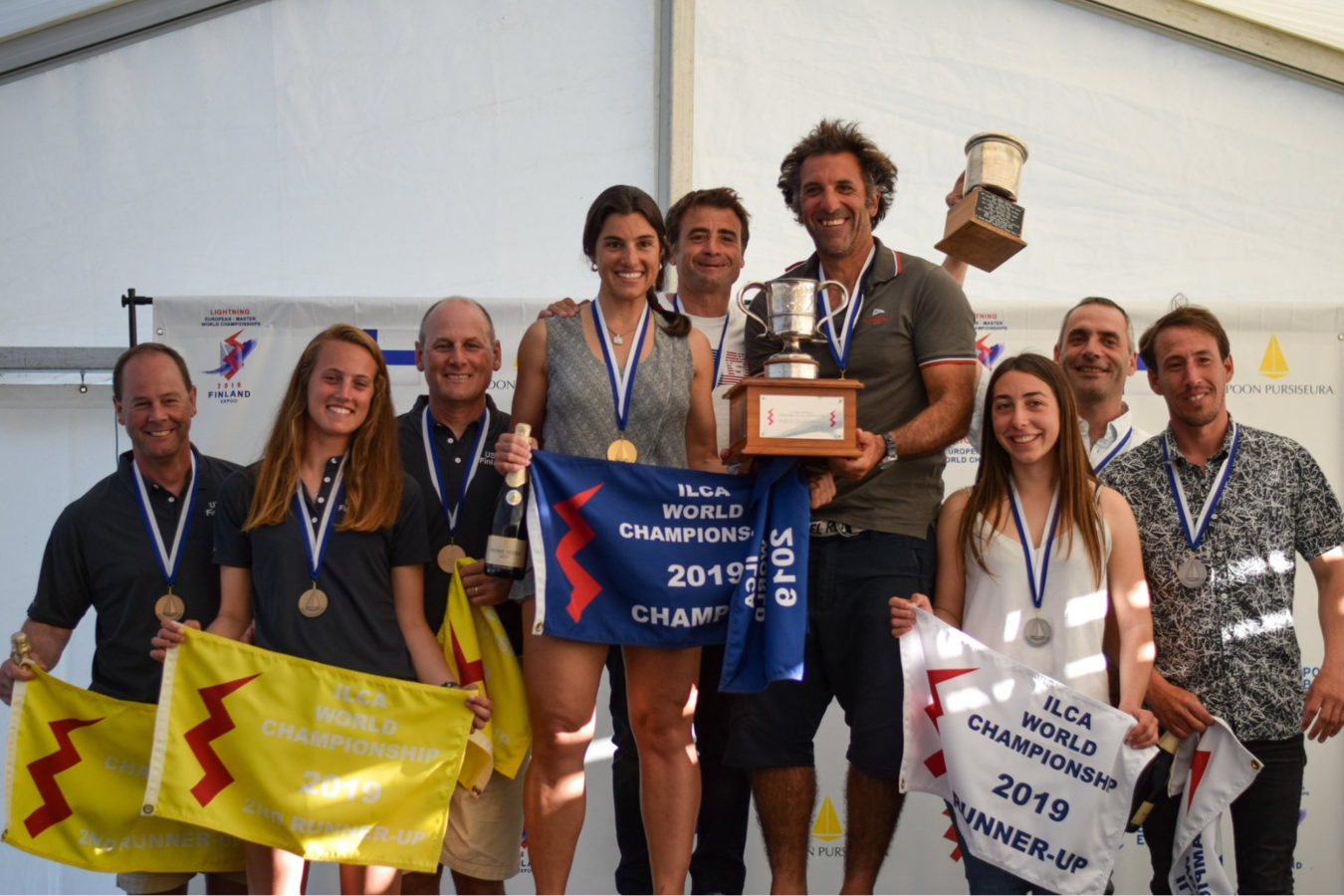
NORTH LIGHTNING CLIENTS ON TOP OF THE WORLD
NORTH LIGHTNING CLIENTS ON TOP OF THE WORLD
Top 24 Teams At The Worlds In Finland Powered By North Sails
Congratulations Javier Conte and team. 📸 International Lightning Class Association
The 30th Lightning World Championship was held in beautiful Espoo, Finland. Defending champion Javier Conte (ARG) with teammates Ignacio Giammona and Paula Salerno were able to hold off several strong challenges to defend the World Championship. Conte joins Lightning legends Tito Gonzalez (2003-05) and Tom Allen (1961-63-65) as the only three to successfully defend their Worlds title.
While the 2017 title came a bit easier for Team Conte, this year the team faced strong challenges from several teams in the 49 boat fleet. Felipe Robles (CHI) with Andres Guerva and Paula Herman started the series with a 1,2 for an early lead. They continued to sail well with solid finishes including winning the final 2 races of the series but a couple of 9th place finishes added just enough to put them 3 points out of the top place on the podium. David Starck (USA) sailing with his brother Tom and Jenna Probst posted all top 7 finishes in the 8 race series for the final podium spot just 6 points behind Team Conte.
The week before the World Championship the class held its European Championship in conjunction with the International Lightning Masters Championship. Ched Proctor (USA), Meredith Killion and Bill Faude scored a 1,3,1,2 to secure his 3rd International Masters Championship. Team Proctor edged out the all family team of Tom Allen (USA) with sister Jane and daughter Shelby (2,1,2,3). Larry MacDonald (CAN) with Jody Starck and Ian Jones filled out the top 3.
In the Open European Championship, Team Conte showed the fleet what they might expect by winning 3 of the 6 races and besting Class President Todd Wake (USA) with his son Doug and Jeff Coppens, by 2 points to earn that title as well. Bill Mauk (USA) with young guns Rafael Menendez and Alberto Gonzalez Jr. sailed a magnificent series to take 3rd place.
The next World Championship will be held in 2021 in Wrightsville Beach, NC (USA) with qualifying at the 2020 North American Championships in Cleveland, OH.
Learn more about North Sails Lightning products.
2019 Lightning World Champions Javier Conte, Ignacio Giammona and Paula Salerno. 📸 International Lightning Class Association
Breeze on in Espoo. 📸 International Lightning Class Association
2019 International Masters Champion Ched Proctor, Bill Faude and Meredith Killion. 📸 International Lightning Class Association
Team North in Espoo. Jody Lutz, Ched Proctor, Brian Hayes and Jackson Benvenutti.
📸 International Lightning Class Association
No hoist, no problem. 📸 International Lightning Class Association
US team in style. 📸 International Lightning Class Association
READ MORE
READ MORE
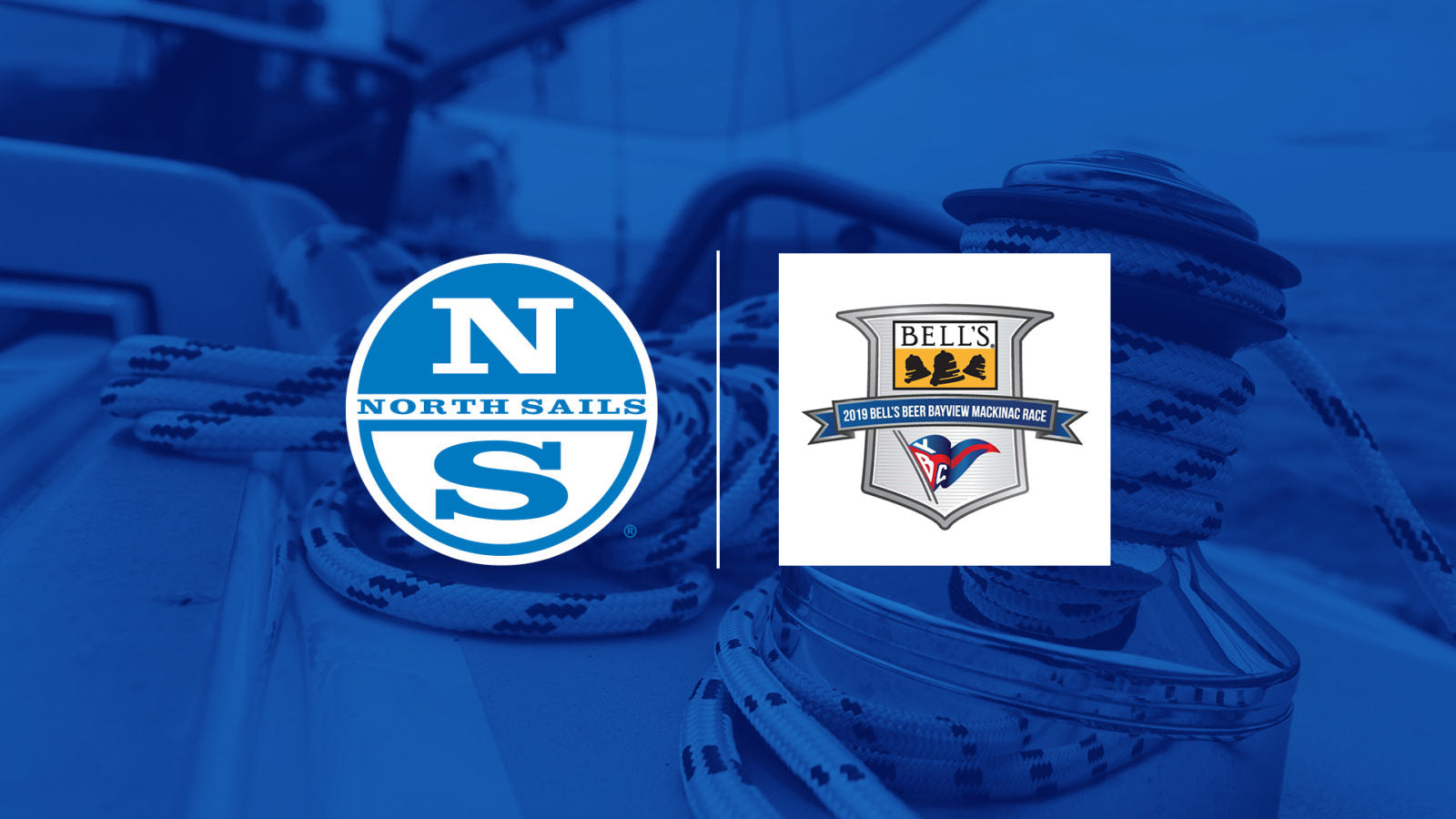
WEATHER FORECAST FOR THE BELL'S BEER BAYVIEW MACKINAC RACE
DO YOU KNOW WHAT THE WEATHER'S PLANNING?
The Experts At Sailing Weather Service Do
We have teamed up with our friends at Sailing Weather Service to provide all entrants of the 2019 Bell's Beer Bayview Mackinac Race with complimentary weather forecasting. Sign up now and we'll deliver the forecast directly to you, ensuring you're prepared to race.
READ MORE
READ MORE
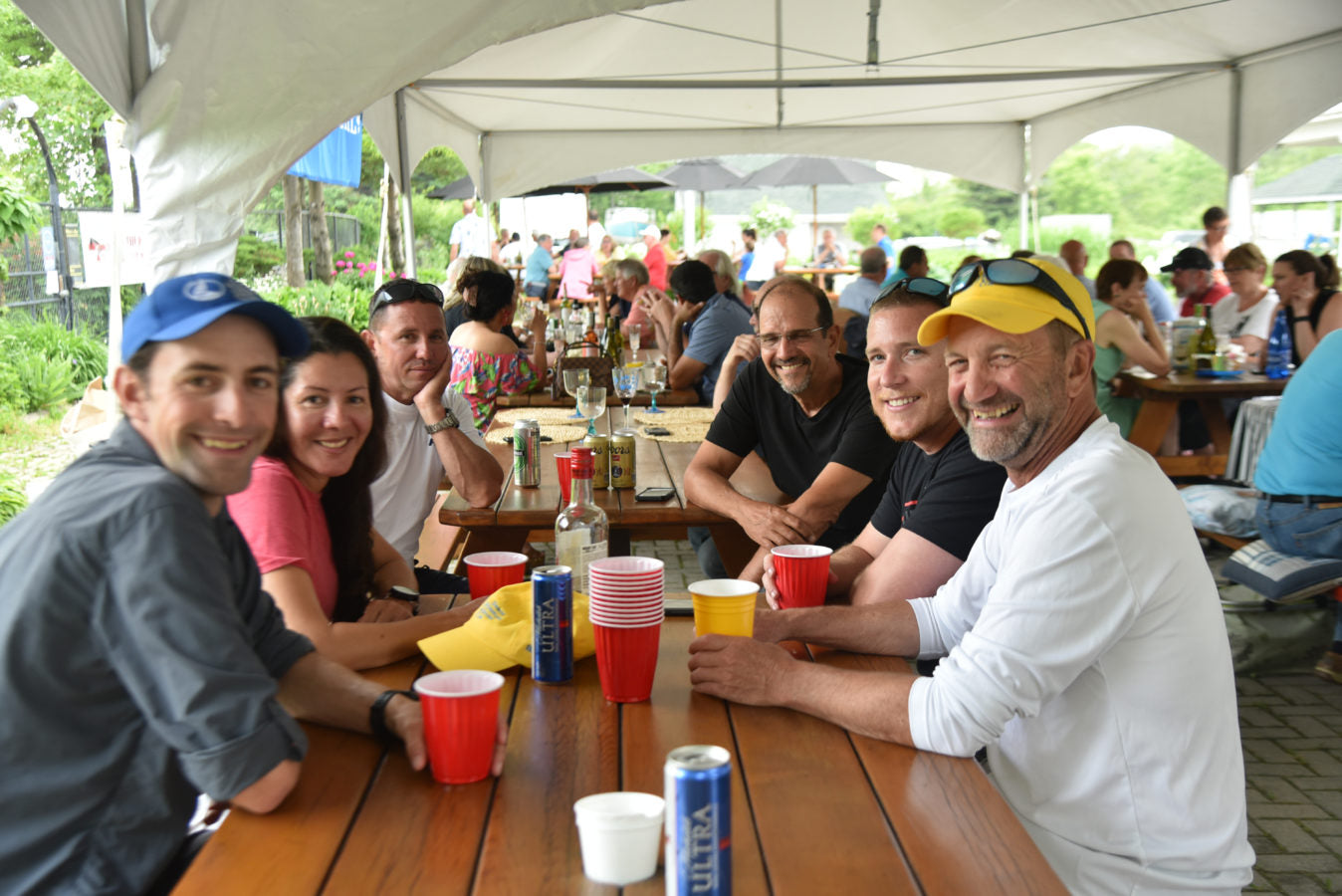
A REGATTA LIKE NO OTHER
A REGATTA LIKE NO OTHER
Fantastic Turnout For Inaugural Event at Lakeshore Yacht Club
In an epic coming of age tale Lakeshore Yacht Club hosted their first Open Regatta this past Canada Day weekend – “The Raft Party Race”. Co-founded by LSYC Fleet Captain; Will French & Parker Media Management Owner; Louisa Sonosky they had a very specific vision and goal in mind. The vision behind the event was to create a low cost, high profile, fun event – inclusive for all skill levels. Their goal was to have an event which represented the good of old while welcoming the new of young boat owners on the lake.
The event started with a Friday night skippers meeting & social where competitors had the chance to pick up their BOSS SUPPLIMENTS MISSISSAUGA skippers bags; filled with numerous, generous sponsored goodies! Most notably the Custom Raft Party Race FAST MASK UV Facemasks who made sure ALL competitors would be protected from the sun. Following the skippers meeting competitors were invited to a free pour social to set to tone of the Regatta; which was to have an amazing party!
What started off as a light wind morning ended in an amazing show of 46 boats competing on the water in a roughly 15nm Race. When heading west competitors had a chance to round the New LSYC FOGH OFFSHORE MARK which was a legacy piece created to help improve offshore racing on Lake Ontario. This is a Seasonal Permeant Mark which ALL yacht clubs are encouraged to use for their own events. LSYC Race Committee, Headed by RO Pat Lymburner did an excellent job creating an ideal course for the conditions.
Then the Party! Rafted boats throughout the club spared no time in celebrating a great afternoon on the water, some of which compared it to memories of the iconic “Levels Regattas”. Great Music provided by FiddleStix & DJ On Top kept people on their feet from beginning to end. BEACHES BEER made sure no one went thirsty while Twisted Therapy Entertainment Owner; Nicole Deanne and her professional staff kept the refreshments coming! NORTH SAILS provided regatta services for sailors as well as raffle prizes with contributions going to the winners junior sail program. All in all an amazing success best quoted as:
The best regatta that we have been to in years. It had a feel of an old school regatta where it was just as much about the party as the race. This is what keeps our racing community and sport strong, this is what makes people come back year after year. We will be here next year.
Congratulations to Overall Winner; Michael Pietz J35 “Shorthanded” & Short-Handed Overall Winner T. Irving on J105 “Live Edge”. Lakeshore Yacht Club and Raft Party Race Organizers are looking forward to the future of this event and can’t wait to see everyone back in 2020!
READ MORE
READ MORE
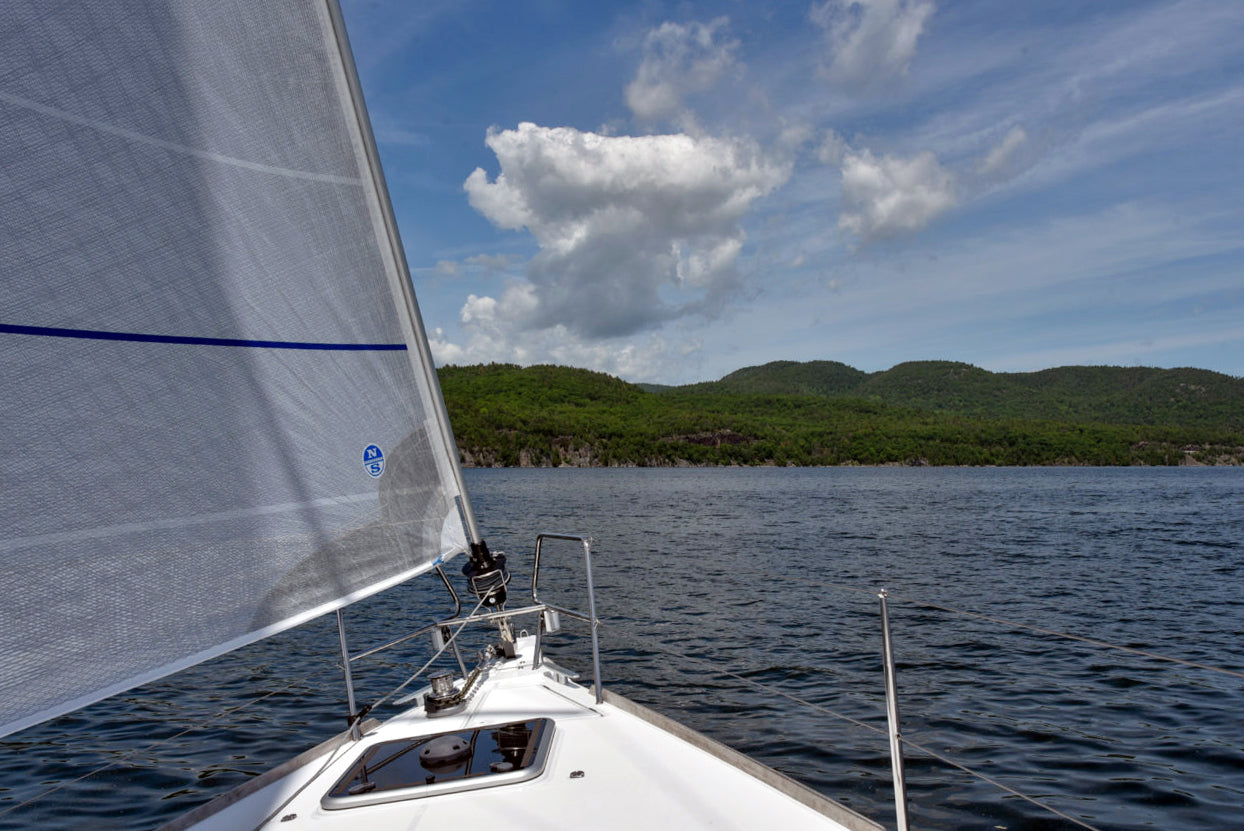
A LONG TIME LOVE AFFAIR WITH NORTH SAILS
A LONG TIME LOVE AFFAIR WITH NORTH SAILS
Francois Bertheau Shares His Passion For Quality Sails and Sailing
Lifelong sailor Francois Bertheau has been a fan of North Sails technology ever since he's owned a sailboat. His first set of sails were 3DL and he plans on crossing over to 3Di in the coming years for his Jeanneau Sun Odyssey 469. He recently added a G Zero Gennaker to his collection after getting the last sails in production 2017, a 3DL Race mainsail and 3DL Race furling jib.
Tell Us About Your History with North Sails.
I've been 3DL since '99, I think. I started the process and the guys basically are all looking at me saying, "Crazy, crazy. Why do you buy such a sail? Blah, blah, blah." All of a sudden, everyone's got them. So, it's cool. I started it on the lake and it was Phillip at that time, that sold it to me. I bought 3DL sails for my boat and then my second set of sails on my Jeanneau 42. I was the first with a full jib and battens in my jib. We thought it was pretty efficient and that's where we saw the sails were pretty efficient because it was on my 42 that I had a 124 percent jib and then we made in 105 with more square foot on the 105 than I had on the 124. I did the last five years with those 3DLs on my 42 and then when I changed my boat to the 47, then it was the same dilemma. Miro says, "What do we do? We do 3DI or we do 3DL?" I say, "I love these sails so much and they're beautiful, I'll probably do that."
From a beauty contest, they're good lookin' sails, and I think it makes the boat even nicer!
This would be the last set of 3DL sails that North would be producing. After that, it's all 3Di! It was my last opportunity to buy the 3DL sails and I did, just because it was what I was familiar with and figured I'd stick to it while I could. It was so funny- this weekend, I was coming back and the guys at the marina came back and said, "Francois, your boat looks so good. Those sails look so amazing." Everyone is telling me that the sails look amazing.
How do you think the performance is helping the ease of cruising?
If you look at the performance of them, they're amazing. I have a cruising boat. It's not a yacht and I don't pursue to try to beat the J/122s and things like that but I look at my boat, the way we structured it and the way it sails, from a cruising boat, it's probably the fastest cruising boat on the lake right now. I'm not a bad skipper- but those sails are helping a lot with boat speed. It's amazing. The fact that I have a 105% on my jetty with a full roast is I'm able to get more square footage than an overlapping jetty on it. However, when sailing, I sail alone all the time, alone with a 105, when I tack, it's so easy to tack because you go from one tack to the other with a couple turns on the winch and the sails move over right away.
How is the Code Zero? Is it Living Up to Your Expectations?
I've used it, but not much. I've used it twice now and it is beyond my expectations. In three knots of wind, going three knots upwind. I had a 50 degree angle. The sail is beautiful. It's working really nice. Very, very efficient and well cut.
What Do You Appreciate Most About Your Sails?
The North Sail designers are amazing in the way they cut the sails. We had done a medium job on the 42 because we didn't have the specs at that time. We didn't have many specs on it because it was one of the first boats like that. The main sail is unbelievable. The cut is slick. The sail designers did a fantastic job and of course the cloth makes a difference, but the designers that cut the sail are very efficient.
How Long Have You Been Sailing?
I've been on a boat since I was three weeks old. I joined the junior squadron at Mount Seymour's Yacht Club at 10 years old. I started sailing at 10 years old. I was on the sailing team, the racing team, at Mount Seymour's Yacht Club when I was 15 with Jerry Lewis. I did a lot of sailing at Mount Seymour's Yacht Club when I was young and racing. I ran the races for three summers there, it was my summer job, I ran all the races at the yacht club. I was race committee. I've spent a lot of time on the water and plan to continue.
READ MORE
READ MORE
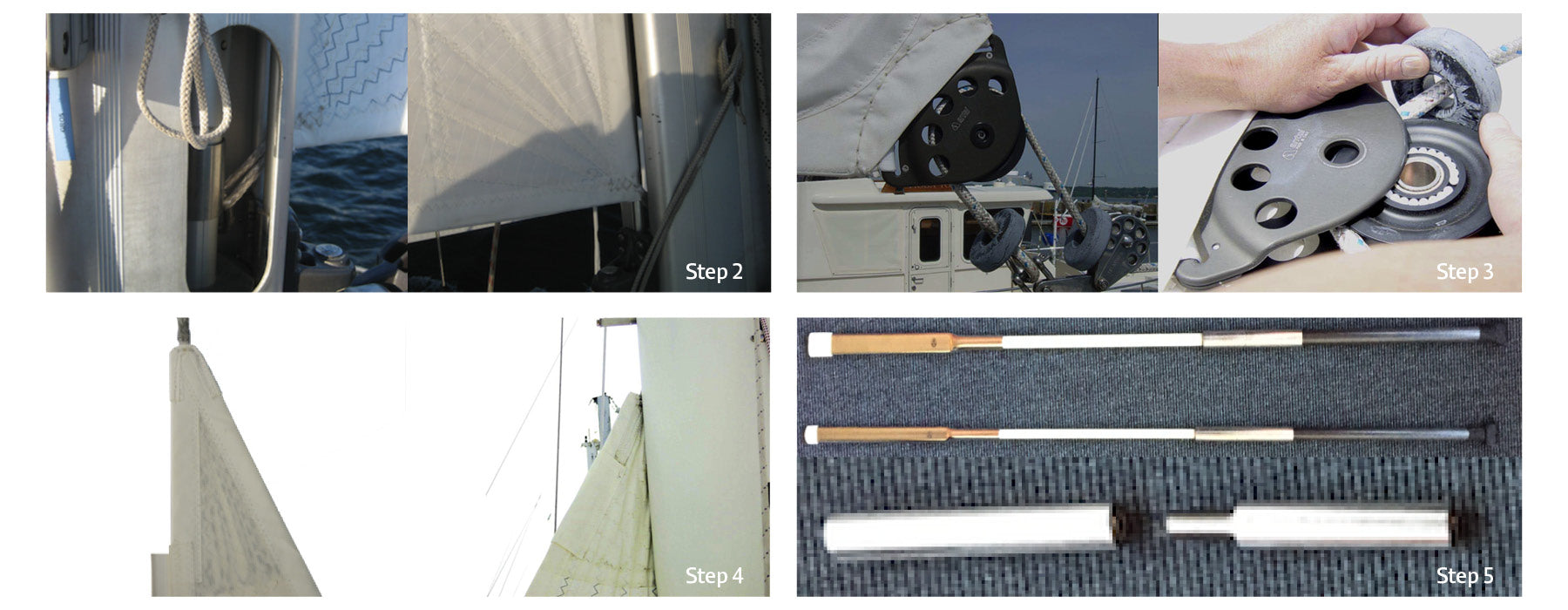
MAST FURLING INSTALLATION GUIDE
MAST FURLING INSTALLATION GUIDE
Key Elements of Usage and Installation
This guide is intended to help better understand the key construction elements, usage and installation of your sail. If you have any questions after reading this document and before installing your sail, please contact your North Sails representative. It is best to have two people installing the sail which can be accomplished in less than one hour. Your boat needs facing directly into the wind and ideally the wind speed should be less than 8 knots.
Step 1: Unpack your Sail
Begin by removing your North Sails Purchasers Pack including your Quality Control and Warranty information. Reserve for future reference. Locate and identify the battens (if any) and reserve for installation later.
Step 2: Attach the Mainsail Tack
Begin by unrolling your mainsail on the side deck from luff to leech. Lift the mainsail tack area and attach to your tack fitting. Your new Mast Furling mainsail incorporates a North Sails exclusive Rope Tack. This feature is designed to provide a soft and easily furled corner attachment. The sail has less patching the normal corner, but has the Spectra/Dyneema rope splayed and sewn into the sail to proved strength. Please ensure the tack rope is connected to a smooth hook or shackle to ensure durability and that no chafing occurs.
NOTE: If your mainsail has a Crab Claw Cutaway and two webbing attachment points – Please read the Stowaway Mast Furling Mainsail installation guide.
Step 3: Attach the Mainsail Clew
Lift the mainsail clew to the end of the boom and run the outhaul line through the clew block. Depending upon the type of block and the rigging of the outhaul, you may need to remove the block sheave or the outhaul line stoppers to pass the outhaul through the clew block.
Step 4: Attach the Mainsail Head
Lift the mainsail head to the mast and attach to the head of the sail to furling head swivel. The mainsail head has the same rope corner as the tack for ease of furling.
Step 5: Hoist the sail and insert Battens (if applicable)
If your mainsail has no battens, you can now hoist the mainsail all the way and furl into the mast. If your mainsail has leech battens, you will insert each batten as you hoist the sail. If your mainsail has full length battens, you will assemble the battens before hoisting the mainsail and then insert the battens after hoisting following the leech batten procedure.
Leech Batten Installation
Most Mast Furling Mainsails with Leech Battens will include Round Carbon Rod Battens. These un-tapered battens are stiff to support the leech and also able to slightly twist around the luff extrusion for easy and compact furling. The leech battens should be located on the inside of your furled sail so they do not impact the mast gap edge hen furling and unfurling. Only sails with the smallest gaps will include flat battens. Your battens will be secure into the sail with a standard Velcro leech closure. The leech (upper) end of the batten has a small plastic cap taped on to fit compactly into the closed leech batten pocket end. The bottom (lower) end of the batten has a custom metal fitting changing the shape of the batten from round to flat to best secure the batten in the sail.
NOTE: Please follow the Velcro Stuff Batten Installation Guide when inserting the Vertical Leech Battens as hoisting your sail
Full length Batten Installation
If you have ordered a Mast Furling Mainsail with Full Length Battens, you will have received your battens in segments, which need to be assembled. Simply identify the segments from the batten labels and screw together using the just joiner. Furl the sail When the sail is new, it will be stiffer than your old sail. Please keep some tension on the outhaul when you are first furling the sail, to train the patches to accept the furl. Take note to see if there are any excessive wear points and that the battens are entering the mast evenly and smoothly.
Leech Line
Your new Mast Furling Mainsail includes and Around the Clew Leech Line. The leech line is not a sail shape control but an essential tool to prevent leech flutter. The leech line will have a purchase system and Velcro closure above the clew and a cleat with in front of the clew. Your sail will either have micro-blocks or a tunnel to direct the leech line around the clew. Use the leech line to prevent leech flutter in higher wind speeds and when reefed. Excessive leech flutters can cause serious sail damage.
Sail Shape Control
You can control the depth and position of draft in your new mainsail by adjusting the halyard tension. A tighter halyard will move the draft position further forward and result in a flatter sail. When your sail is new, pull the halyard up just enough to remove any horizontal creases along the luff. In stronger breeze you will need more halyard tension.
READ MORE
READ MORE
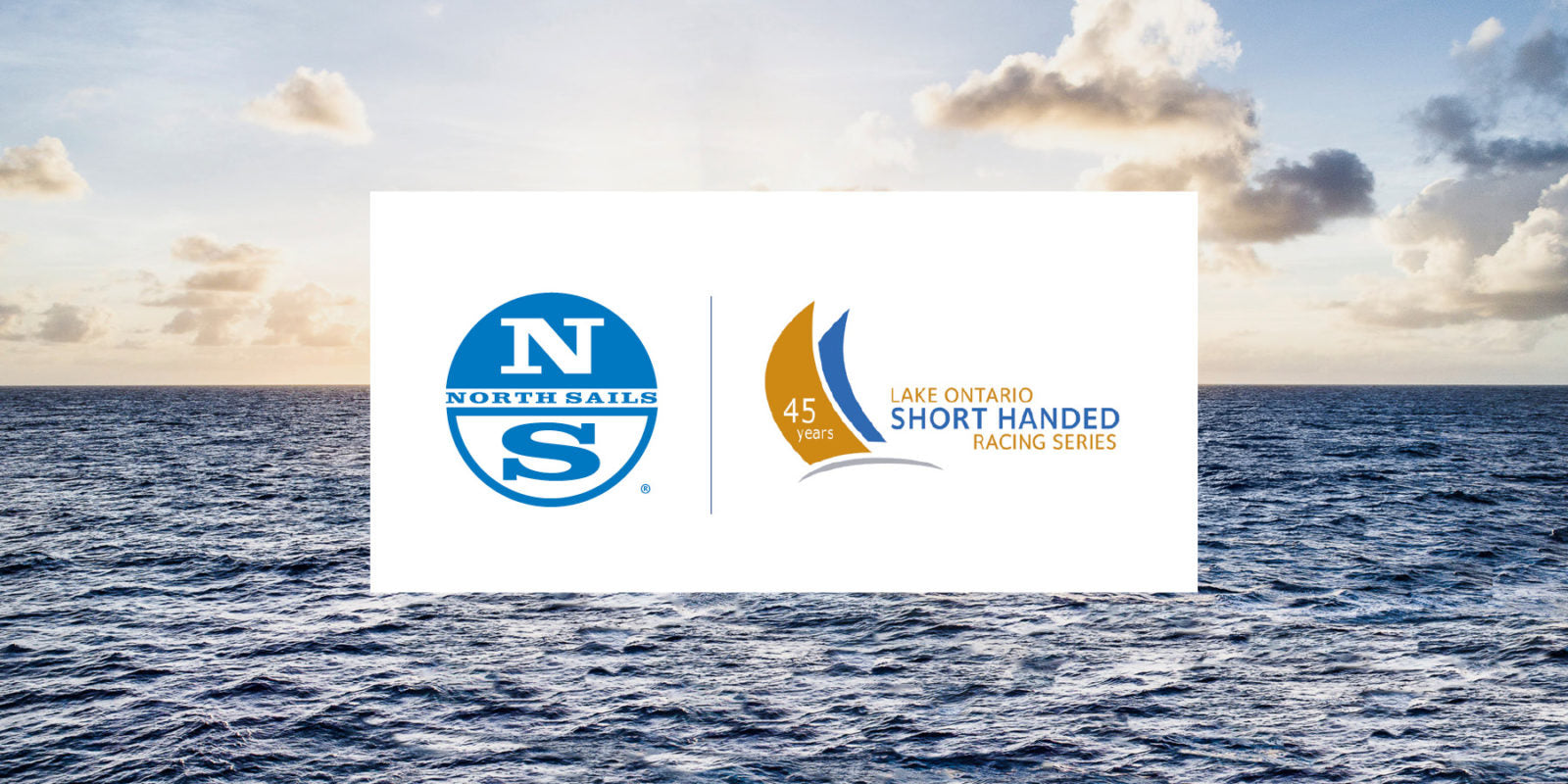
NORTH SAILS PARTNERS WITH ACCESS ABILITIES
NORTH SAILS PARTNERS WITH ACCESS ABILITIES
Together Supporting the Local LOSHRS Fleet
Growing the local sailing community has always been a core goal of North Sails. When it comes to distance racing and growing that local market, the Lake Ontario Short Handed Racing Series (LOSHRS) is a fantastic series which helps propel that goal of growing distance racing. North Sails Toronto is proud to support and align with the series, along with Access Abilities, to support sailors growing their skills on the variety of courses that range from 20 - 100 nautical miles.
Exact details on how to qualify for the race will follow shortly from Lake Ontario Offshore Racing Committee, coordinator of LOSHRS events.
READ MORE
READ MORE
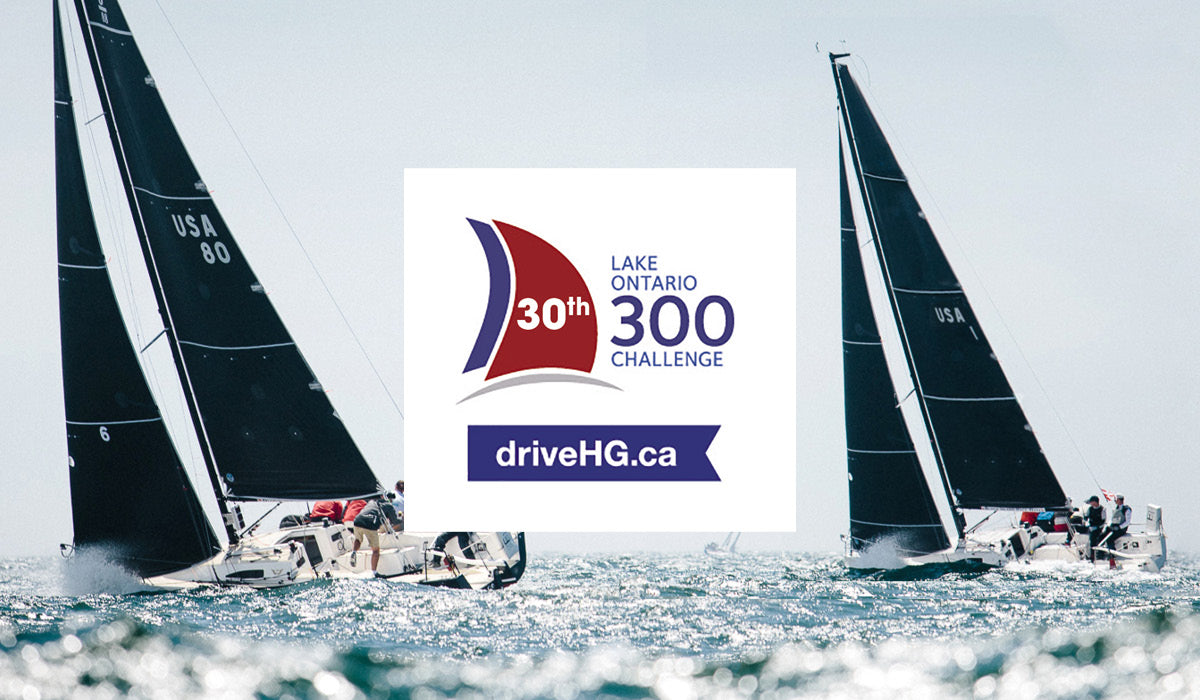
LAKE ONTARIO 300 REGATTA SERVICES
LAKE ONTARIO 300 REGATTA SERVICES
Your Local Team Is Here For You
At North Sails, our mission is to provide you with expert repairs, maintenance, and upgrades in a timely manner. Whether you race or cruise, your sails are a major investment, and we are committed to helping you maximize their performance and lifespan.
Our team will be onsite during the Lake Ontario 300 for any last minute service needs, as well as post-event sail pick up. Contact us at Toronto@northsails.com for details.
READ MORE
READ MORE
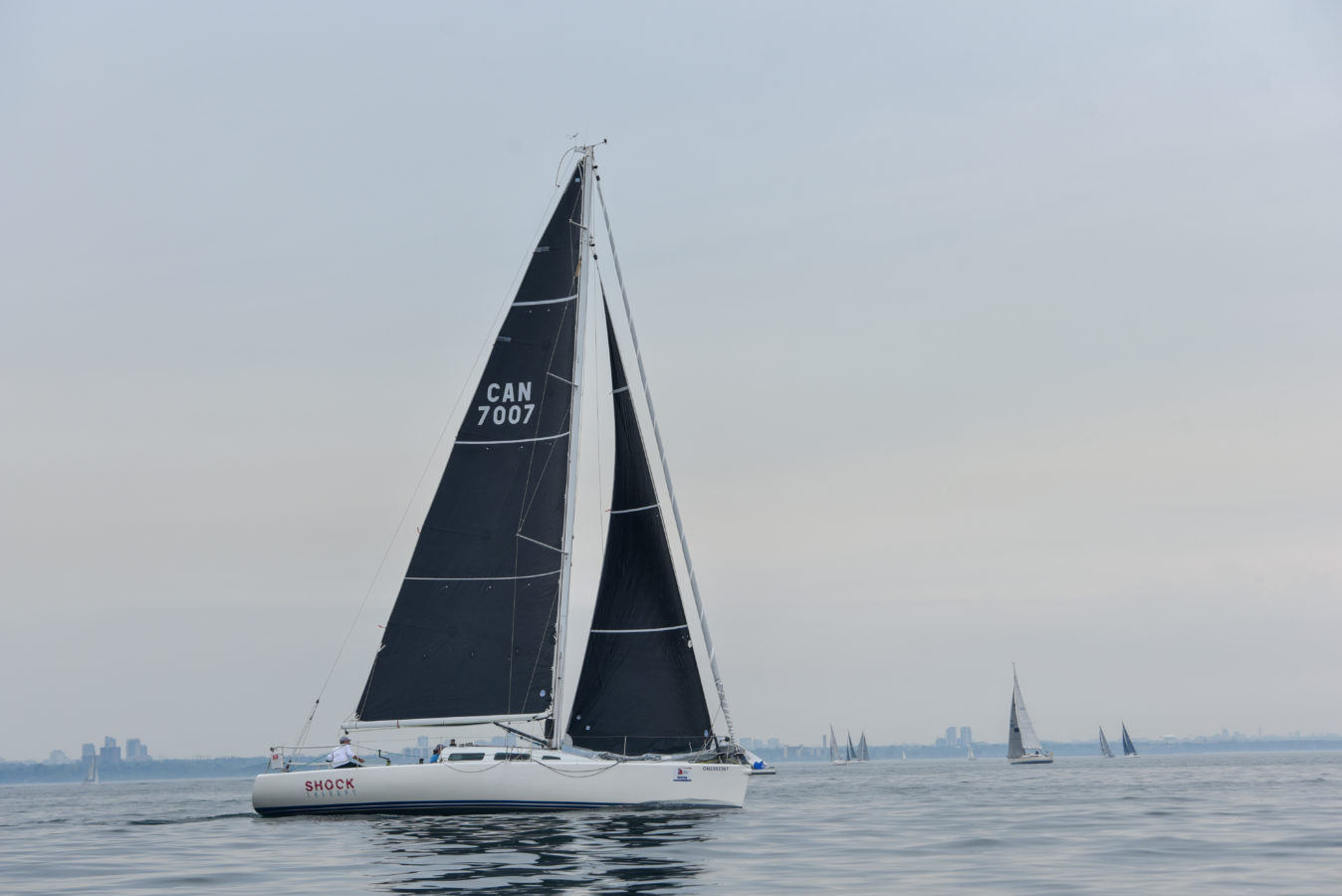
TACKLING THE LAKE ONTARIO 300
TACKLING THE LAKE ONTARIO 300
North Sails Expert Doug Folsetter Shares His Top 3 Tips for the #LO300
© Parker Media Management Inc.
Veteran Great Lakes sailor, and North Sails expert, Doug Folsetter shares his top tips for racing the upcoming Lake Ontario 300 presented by DriveHG and the Lake Ontario Offshore Racing Committee. He has done the race himself four times and the Chicago Mackinac races fives times. His offshore experience is nothing to bat an eye out and provides his great insight on how to prepare.
Weather
There are a lot of different apps and good sources of weather information. Have a look at as many forecast models as you can digest to get an overall picture of how the race might shape up. If you’re serious about it, it’s worth paying for a routing forecast from a company like Commander’s Weather in order get the best information possible. By having a good understanding of what’s likely to happen, you can better positioned to identify what the weather is going to do and take advantage of the changing conditions.
Gear
Pack lightly but for every condition. If its warm out, don’t forget your cold weather clothes too as the weather will inevitably change. Good boots, a headlamp with red filter and a can of bug spray go a long way to making a distance race more enjoyable. Be conscious of how to pack the boat as well. Stack the sails with the at the ones most likely to be used are at the top of the pile. Plan for a couple of hot meals, even if it’s freeze dried and have a plan b in case it’s too rough to cook safely...
Keep the boat moving fast
Watch the forecast to do what you need to do to stay in the best pressure. Don’t hesitate to sail a bit high or low of the rhumb line to keep the boat sailing with the fastest sail combination. The extra boat speed will generally more than make up for the extra distance sailed.
© Parker Media Management Inc.
READ MORE
READ MORE
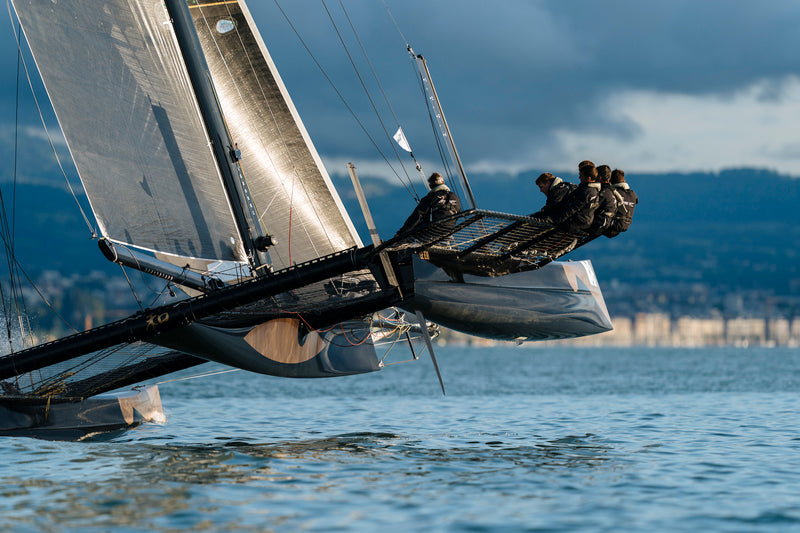
"LE P'TIT COUP DE BOL!"
"LE P’TIT COUP DE BOL!''
Jacques Guichard, équipier vainqueur du Bol d’Or 2019, revient sur son expérience épique à bord de Spindrift racing
📸 Chris Schmid/Spindrift racing
On se souviendra longtemps de la 81e édition du Bol d’Or Mirabaud à bien des égards : la victoire pour North Sails en catamaran avec Spindrift racing et en monocoque avec Libera Raffica, le coup de tabac d’une violence rare qui a causé de considérables dégâts matériels : sur les 465 concurrents engagés, près de la moitié de la flotte a déclaré forfait en raison de nombreuses avaries de gréement, chavirages et hommes à la mer, et enfin le dernier tour de piste en D35 qui laisse désormais la place au TF35, un catamaran volant nouvelle génération pour la saison prochaine.
Jacques Guichard, expert technique voile chez North Sails et équipier vainqueur du Bol d’or Mirabaud 2019 à bord de Ladycat powered by Spindrift racing (garde-robe North Sails) nous livre ses impressions sur cette édition d’anthologie.
Jacques Guichard 📸 Chris Schmid/Spindrift racing
Votre équipage remporte le prestigieux Bol d’or Mirabaud en 10 heures, 36 min et 21 sec dans des conditions assez rocambolesques, qu’avez-vous ressenti après cette victoire ?
Je participe au Bol d’or depuis 2009 et c’est ma quatrième victoire en D35. Celle-ci a forcément une toute autre saveur, elle est d’autant plus belle qu’on a réussi à maîtriser et la tempête et la course. J’avoue qu’on ne s’est pas senti serein pendant le front orageux même si on était en tête de flotte sur l’ensemble du parcours ou au moins parmi les quatre premiers. En même temps sur le lac, il ne faut jamais avoir confiance tant qu’on n’a pas franchi la ligne d’arrivée. On peut se retrouver devant en début de course, puis perdre toute l’avance car on tombe dans une zone de pétole tandis qu’à 100 mètres près, on passe à côté d’une risée qui profite à un concurrent. Le Bol d’or porte bien son nom : il faut un p'tit coup de bol pour gagner cette épreuve, et cette édition 2019 était particulière au vu des conditions météos. Même les Suisses nous confient qu’ils n’ont jamais vu une tempête aussi impressionnante sur le lac Leman en 50 ans. En tout cas, notre équipe a mérité cette jolie victoire qui signe également la fin de 13 années d’aventure de Ladycat powered by Spindrift racing en D35.
Comment avez-vous vécu la course ?
Les conditions étaient plutôt clémentes et légères avant l’orage : ciel dégagé et vent variable de 3-5 nœuds. Dès le début de la course, nous étions bien placés, et nous avons toujours été dans le match même après le grain. On est passé en tête de flotte au Bouveret (bouée de passage), et là on avait une belle avance sur nos concurrents qui se trouvaient à environ 10 miles derrière nous. Ensuite, le coup de tabac a duré près d’une heure. On s’est mis en « mode survie » pendant 15 minutes au plus fort de la tempête (rafales à plus de 50 nœuds) où il fallait à tout prix éviter de chavirer, casser du matériel à bord ou heurter les autres bateaux.
Comment avez-vous géré l’arrivée du grain ?
Je n’ai jamais vu un grain aussi fort, même en mer. C’était complètement apocalyptique. À l’arrivée du grain, le ciel s’est chargé en électricité statique, et on prenait des décharges partout à bord. Puis une masse nuageuse s’est abattue soudainement sur nous avec un vent allant de 3 à 12 nœuds en l’espace de 30 secondes, puis forcissant à 30 nœuds allant jusqu’à 45 nœuds. On est parvenu à retendre le gréement et à changer la première voile d’avant mais nous n’avons pas eu le temps de prendre un ris. Le vent a commencé à s’engouffrer et les premières risées sont arrivées. On n’a même pas eu le temps d’avoir peur tellement l’orage était soudain et violent. C’était vraiment surprenant. Pendant le premier quart d’heure, on ne voyait pas à 20 mètres. Il faisait presque nuit noire. Il s’est mis à tomber des grêlons de la taille d’une bille, puis de grosses vagues se sont formées avec des creux de 1m50. Le premier coup de vent violent est monté à 50 nœuds. Au plus fort du grain, on s’est retrouvé en cat-boat avec la grand-voile haute. C’est là où je me suis dit qu’on allait chavirer. Nous avons réussi à nous mettre à la cape. Mais on a eu peur que le bateau casse. Nous étions à la dérive en marche arrière et il fallait éviter les monocoques qui arrivaient au portant.
Et pendant la tempête?
C’était un tableau chaotique sur fond de ciel et mer noirs entre les nombreux voiliers qui démâtaient, chaviraient, certains ont même coulé, et la fumée des feux de détresse en raison de personnes tombées à l’eau. La visibilité était tellement mauvaise qu’on craignait de percuter des monocoques à la dérive, couchés sur leur flan. Et ils étaient nombreux. Nous n’étions pas manœuvrants et eux non plus, mais grâce au vent, les monocoques sur notre passage dérivaient vers l’arrière. Parfois, ils passaient à près de cinq mètres et on pensait vraiment les toucher. On a eu un sacré coup de bol que tout se soit bien passé malgré ces conditions assez effrayantes.
Des dégâts à bord ?
Contrairement à d’autres équipages, on n’a pas eu trop de gros dégâts à bord bien que les D35 soient plutôt conçus pour le petit temps. Au bout d’un quart d’heure quand le vent est tombé à 35 nœuds, on a renvoyé le foc, mais il n’a tenu que 3 minutes. On s’est retrouvé avec un foc déchiré comme nos deux concurrents derrière nous. Mais même déchiré, il a bien tenu. On a navigué le reste de la course avec une surface de voile plus réduite, et notre GV, une voile 3Di North Sails efficace dans le vent léger, en revanche inadaptée dans le temps fort, a étonnamment résisté à la violence de la tempête. Car on a vraiment cru qu’elle allait exploser. Pour le coup, c’est aussi une voile solide !
📸 Chris Schmid/Spindrift racing
Pensez-vous que le comité de course aurait dû annuler la course ?
En 81 éditions, les Suisses n’ont jamais annulé de Bol d’or, question de mentalité ! En France, il y aurait eu de fortes de chances que la régate n’ait pas eu lieu. Tous les équipages étaient informés depuis quatre jours d’un coup de tabac qui allait balayer le lac, mais personne ne savait exactement à quoi s’attendre. On se doutait que ça allait être gros, mais pas aussi puissant et violent. On peut toujours remettre l’organisation en cause à savoir s’il fallait annuler ou pas mais chacun est maître de son bateau, et c’était de la responsabilité des équipages de prendre le risque de régater ou pas. Fort heureusement aucun drame humain n’est à déplorer.
Le championnat en D35 se termine cette année. Allez-vous participer au Bol d’or 2020 à bord de son successeur le TF35?
Oui, c’était la dernière année des D35 pour le championnat. Le nouveau support pour l’année prochaine, le TF35, est un catamaran volant nouvelle génération ! Nous avons déjà commandé le nôtre et Spindrift fera toute la saison avec ! Ça va être passionnant de travailler sur le design des voiles et de pouvoir ensuite profiter de mon travail sur l’eau.
READ MORE
READ MORE
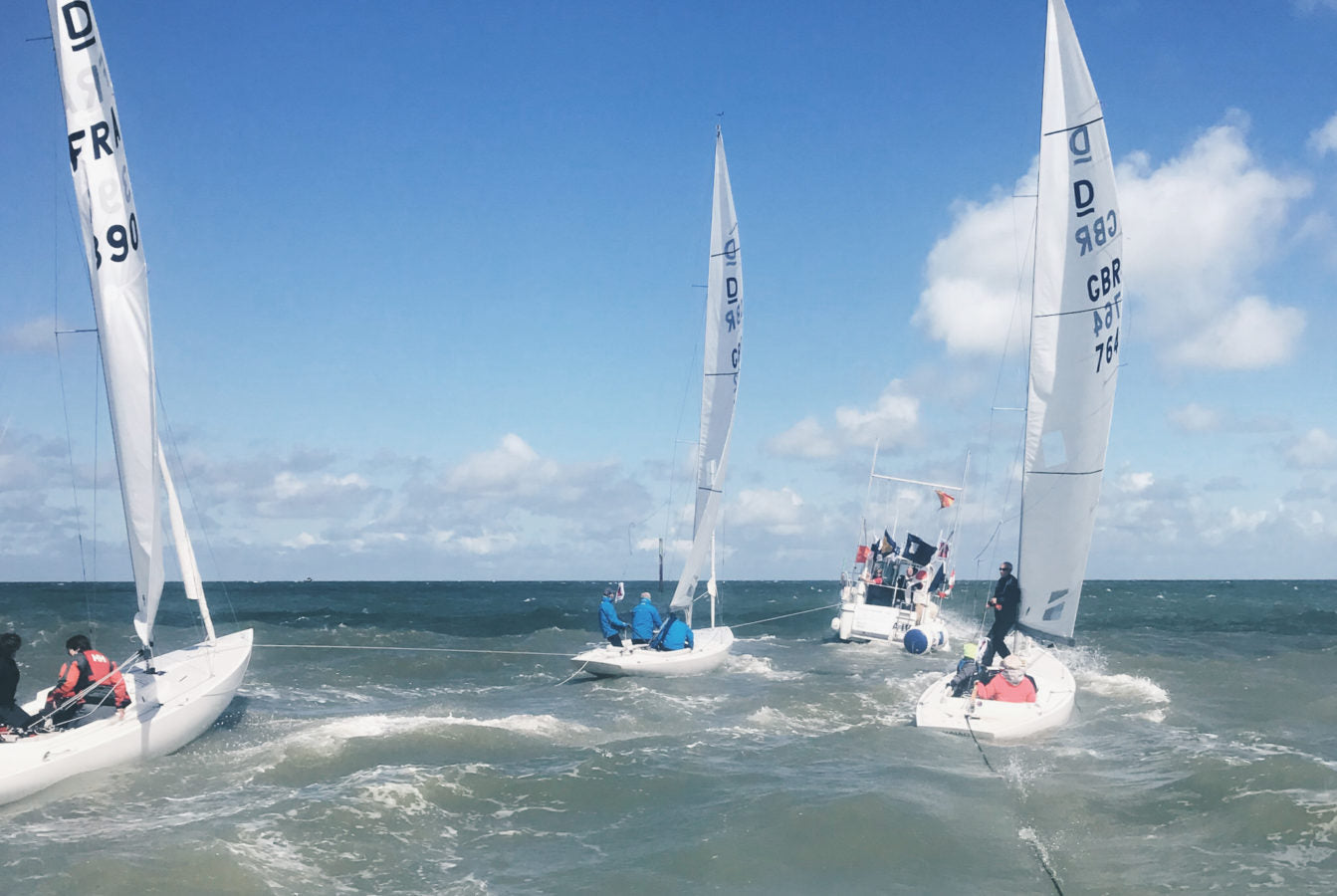
OPEN INTERNATIONAL LINKERS DEAUVILLE 2019
OPEN INTERNATIONAL LINKERS DEAUVILLE 2019
Huge Success For North Clients
North Sails clients had a fantastic regatta in Deauville as guests of the Deauville Yacht Club who gave a warm welcome from the moment of arrival to the very end of the event. The club supported by an amazing sponsor in Linkers put on a really fantastic event both on and off the water.
North Sails Ireland expert Nigel Young had the pleasure of sailing with Ron and Julie James in their beautiful wooden Dragon. "We had some really tough competition from Richard Davies and his crew Martin Payne and Nigel Cole. They were leading the event after day one and continued really well to finish the regatta third overall, only two points off the win!" says Nigel. "This is an incredible result if you consider the helm Richard had a stroke on three years ago and we all thought he might never sail again. Well done Richard, fantastic stuff."
The lighter winds at the start of the regatta were to our advantage but as the winds increased it was the Pageboys who found their form and slowly moved up the leader board to finished only one point behind after the last race.
Some great racing was had by all and we look forward to returning to Deauville in 2020 to enjoy the new club house!
North Sails Clients took 1,2,3,4,5 overall. Congratulations to all.
Check out the full list of results.
Ron and Julie James, Overall Winners
The Page Boys, Second Overall
Richard Davies, Martin Payne and Nigel Cole, Third Overall
READ MORE
READ MORE
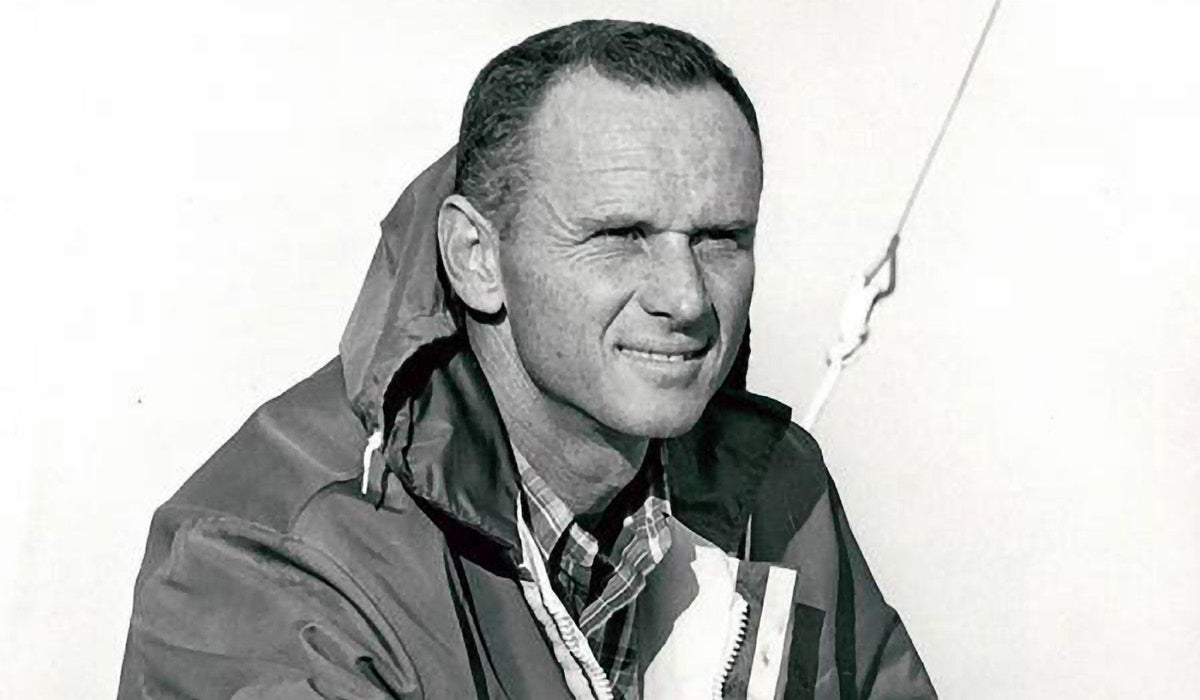
VI MINNS LOWELL NORTH
VI MINNS LOWELL NORTH
Lowell North, grundaren av North Sails, har gått ur tiden. Lowell – som även gick under smeknamnet ”The Pope” – började sin karriär som segelmakare vid 14 årsålder när hans pappa köpte en Starbåt med bomullssegel.
Far och son kom sist i vartenda race, vilket fick den unge Lowell att skära om storseglet. Resten är, som det brukar heta, historia.
När Lowell startade North Sails 1957 hade han en bakgrund som flygingenjör och insåg att vägen mot snabbare segel gick via systematiska tester och gradvisa, väldokumenterade förbättringar. Hans metodiska, vetenskapliga inställning till segeltillverkning förändrade branschen för evigt, och hjälpte honom att vinna fem världsmästartitlar i Starbåt och en guldmedalj i OS 1968. Lowell grundlade redan vid starten en kultur som har genomsyrat North Sails sedan dess.
"Lowells filosofi bakom utvecklandet av North Sails var enkel", säger Tom Whidden, vd för North Technology Group. "Rekrytera de bästa personerna, som han kallade ’Tigers’, och utnyttja vetenskapliga och teknologiska landvinningar för att ta fram den absolut bästa produkten. Lowell gick i spetsen när det gällde att utveckla nya sätt att tillverka och formge segel. Hans tydliga målsättning, kreativitet och tävlingsanda driver North Sails framåt än idag – även när företaget nu är inne på områden som han aldrig hade kunnat föreställa sig under sin aktiva tid."
Lowell sålde North Sails 1984 och drog sig tillbaka från segelmakeribranschen. Han fortsatte att segla och kappseglade med sin båt Sleeper under många år, och ägnade sig även åt avslappnad cruising i Stilla Oceanen. Lowell avled 89 år gammal i San Diego med hustrun Bea vid sin sida. Han lämnar oss i stor saknad.
READ MORE
READ MORE
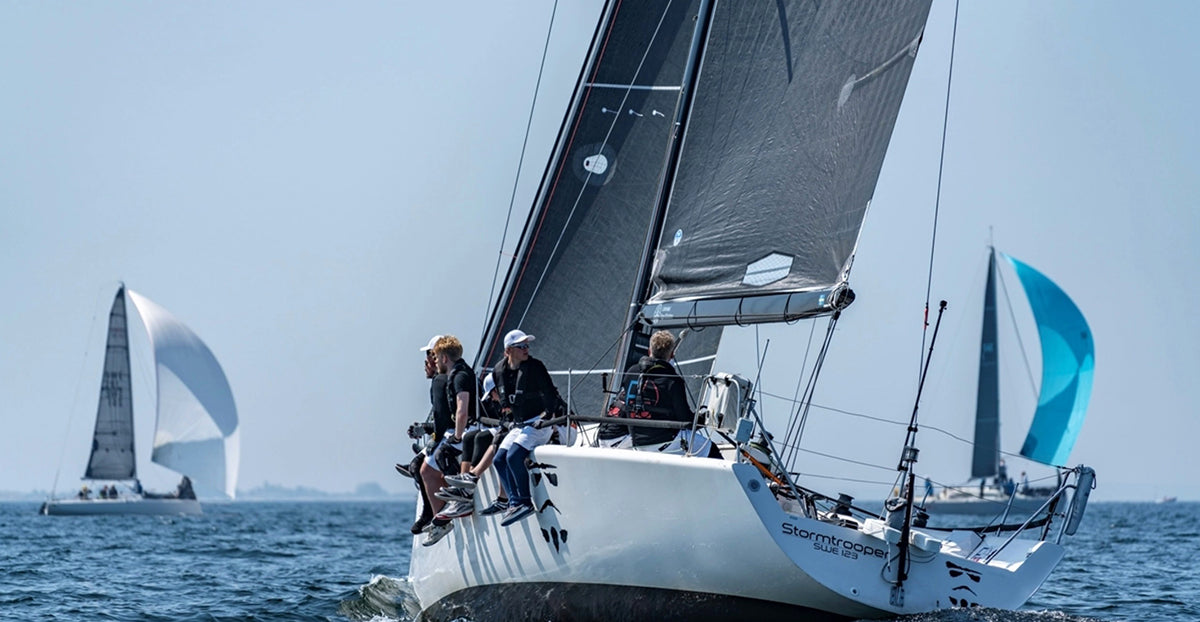
HÄRLIGT VÄDER MEN UTMANANDE FÖRHÅLLANDEN PÅ SANDHAMN OPEN
HÄRLIGT VÄDER MEN UTMANANDE FÖRHÅLLAMDEN PÅ SANDHAMN OPEN
Med årets SM i Sandhamn och årets EM i Oxelösund känns det som att temperaturen är på väg uppåt bland ostkusten ORCi-seglare.
Under Sandhamn Open 6-8 juni fick de en bra genomkörare, och det som testades var inte bara det gamla vanliga med trim, taktik och strategi utan även förmågan att hantera sömn – eller snarare bristen på sömn.
Sandhamn Open var årets första deltävling i North Sails ORCi Cup, som även omfattar ÅF Offshore Race, SM i Sandhamn och KSSS Indian Heat Regatta. Precis som förra året bestod Sandhamn Open egentligen av två separata kappseglingar: Dels en längre distanskappsegling, dels en efterföljande tvådagarsregatta med korta kryss-läns-banor.
Valfrihet var ordet som gällde. Det gick bra att anmäla sig till bara den ena eller till båda två, och både distanskappseglingen och regattan var uppdelad i en SRS-klass och en ORCi-klass. I distanskappseglingen fanns dessutom en shorthanded-klass.
De som ville kunde alltså få tre dagars kappsegling på raken, och det visade sig populärt, trots – eller kanske tack vare – att det blev lite si och så med nattsömnen. Upplägget med en längre distanssegling tätt följd av bankappsegling är hämtat från SM och EM, och de som planerar att vara med på något av dessa fick därmed en bra genomkörare, där inte minst förmågan att snabbt ladda om efter en påfrestande nattsegling prövades.
Distansracet, på runt 50 distansminuter, startade vid sextiden på torsdagskvällen och tog mellan tolv och femton timmar att genomföra. Båtarna kom i mål först fram på morgonkvisten, så de som skulle vara med även på bankappseglingarna fick ett ganska tufft program.
Några särskilt tuffa förhållanden var det annars inte fråga om, för hela helgen präglades av sol och lätta vindar. Behagligt alltså, men också svårseglat, med mycket vrid och vindhål – och det kan ju vara precis lika påfrestande som ett riktigt hårdvindskör.
All de sex planerade banracen – två på fredagen och fyra på lördagen – kunde genomföras. Resultatmässigt skedde efterhand en del omkastningar, men i slutändan visade resultatet inte på några större överraskningar. Och att våra kunder skulle göra bra ifrån sig var heller ingen överraskning…
Resultat Sandhamn Open
1:a SRS Ban: Dehler 45 Solong, Johan Bratt
1:a ORCi Ban: X-41 Magic Mix, Patrik Björklund
1:a SRS Hav: First 36.7 Team Pro4u, Patrik Forsgren
2:a ORCi Hav: IMX 40 Foxy Lady, Rickard Bergkvist
READ MORE
READ MORE
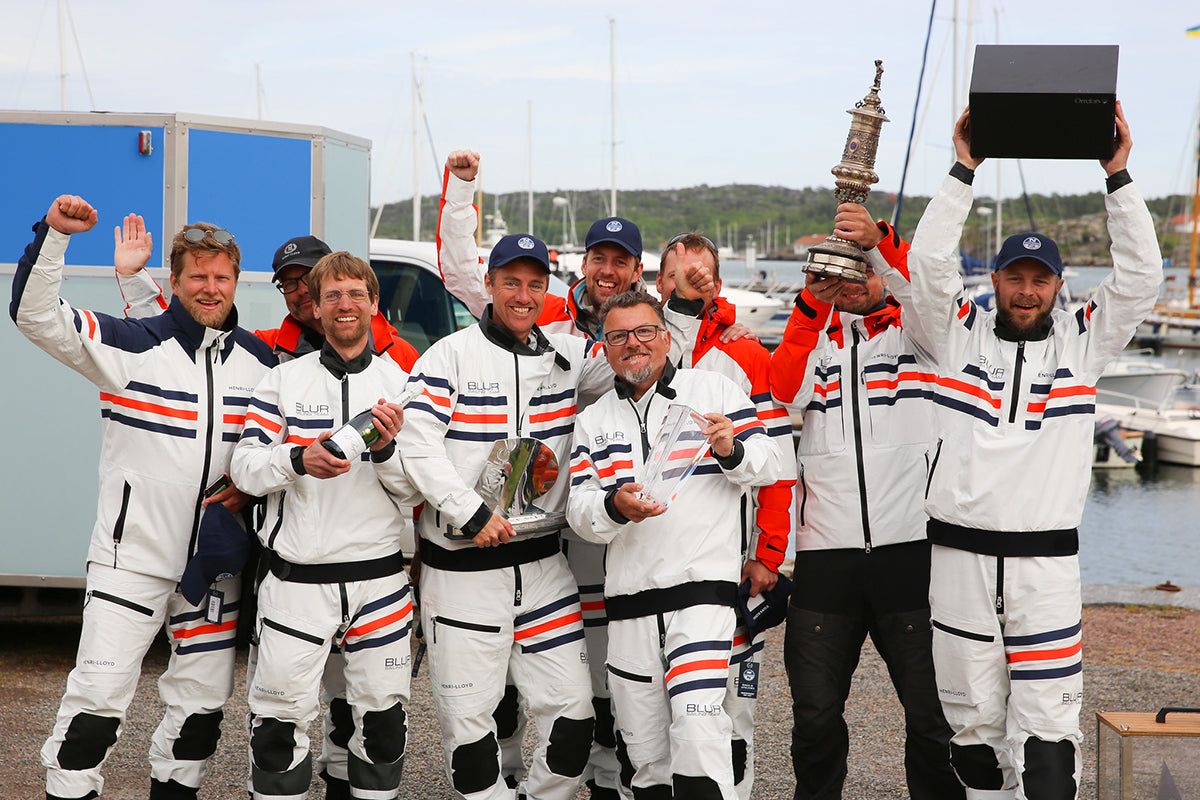
TANDTEKNIKERN SOM SADLADE OM
TANDTEKNIKERN SOM SADLADE OM
Andreas Turesson på North Sails i Göteborg har varit med om ett och annat som segelmakare och seglare.
Andreas, längst till höger, firar segern på Marstrand Big Boat Race.
Trots att han bara är 36 år gammal har han 18 års erfarenhet av yrket, han har seglat legendariska Fastnet Race och prisskåpet rymmer bland annat ett EM-guld i ORCi och ett par SM-silver i Express. Men hans väg har knappast varit spikrak. Ett tag var han exempelvis på god väg att fastna i dentalbranschen.
Men låt oss ta det från början.
Om man växer upp i en bohuslänsk kustort, exempelvis Uddevalla, och har seglingsintresserade föräldrar får man sin beskärda del av segling vare sig man vill det eller inte. Så var det i alla fall för Andreas, som brukar beskriva sig som "uppvuxen i en Maxi 77". Han seglade på egen hand också men var aldrig något stjärnskott i exempelvis optimist. Det var så mycket annat som var minst lika roligt, bland annat fotboll, och att han en vacker dag skulle bli europamästare i segling var inget som föresvävade honom.
Intresset för segling tog egentligen inte fart på riktigt förrän han var 14-15 år. Det är ju annars en kritisk period där många ungdomar slutar med segling, men Andras fick tvärtom en nytändning. Och det var inte bara kappsegling som lockade.
Tillsammans med några kompisar köpte han nu en 707. De var överkomliga i pris redan på den här tiden, och båten är inte större än att den kan hanteras av ett par vana tonåringar. Den är ju inte mycket att bo i, men funkar fint för tonårsgrabbar som inte kräver mer än varsin koj och tak över huvudet. Och så är den ju rolig att segla.
Grabbgänget ägnade några somrar åt att segla runt mellan hamnarna i Bohuslän, gärna de ställen där det kunde bli lite ”ös”. Och så kappseglade de. Det gick bättre och bättre, och vid ett oförglömligt tillfälle blev de totalsegrare i Lysekils Race. För Andreas är detta än idag en av de vinster som han minns med allra störst glädje.
Ska man kappsegla behövs bra segel, och på den vägen fick Andreas och hans kompisar kontakt med en segelmakare i Kungälv som hette Henrik Ottosson. Ett visst tycke uppstod, det ena ledde till det andra, och direkt efter gymnasiet började Andreas som lärling på Henrik Ottosson Segelmakeri.
Hos Henrik lärde sig Andreas yrket från grunden, och fick jobba med både service och nyproduktion (för det här var på den tiden då även ett oberoende svenskt loft kunde tillverka konkurrenskraftiga prestandasegel). 707:an avyttrades till förmån för en Express, som kompletterades med en Starbåt. När så CB66 Racer dök upp på scenen hoppade Andreas på det också. Vid det här laget var kappsegling det allt överskuggande intresset och Andreas ville segla så mycket som det bara gick.
Andreas blev kvar på Henrik Ottosson Segelmakeri (sedermera Quantum Sails) till 2009, då Henrik bestämde sig för att avveckla företaget och istället ansluta sig till oss på North Sails. Andreas, som nu stod utan jobb, köpte en enkel biljett till Australien och började på North Sails i Sydney.
Här var allt större än i lilla Kungälv. Andreas var med och gjorde segel till maxibåtar som Alfa Romeo och Wild Oats och fick en fast plats som trimmer på en Swan 601:a.
Andreas var totalt ett år i Sydney och jobbade på North så länge hans visum tillät. Han var nu i 25-årsåldern och förutom att arbeta och segla storbåt fick han tid att fundera över vad han skulle bli när han blev stor. Väl tillbaka i Sverige skrev han in sig på en treårig utbildning på Institutionen för odontologi. Meningen var att bli tandtekniker och jobba med att tillverka specialgjorda implantat och proteser (som kronor och bryggor).
Studierna kombinerades med extrajobb hos oss, så helt släppte han inte sin gamla bana. Dessutom kappseglade han flitigt och var bland annat med om att bärga EM-guldet i ORCi 2011.
Efter examen började han helt enligt plan arbeta som tandtekniker, och här kunde den här historien tagit slut. Men Andreas märkte snart att det inte var det här han ville hålla på med. Det var inte så att han vantrivdes, inte alls. Men han var heller inte entusiastisk inför sitt yrke. "Det fanns de som brann för att göra den perfekta kronan", säger han, "men jag var tyvärr inte en av dem".
Det Andreas verkligen brann för var segling och segel, det kändes allt mer uppenbart. Och nu föll det sig lyckligtvis så att North-loftet i Göteborg behövde förstärkning på säljsidan, och i januari 2015 var Andreas tillbaka i branschen på riktigt.
Karriären som tandtekniker blev kort, ett drygt år bara, så man kan tycka att det var ett illa investerat studielån. Men Andreas tycker att all erfarenhet är bra att ha, och utbildningen innehöll faktiskt mycket materiallära som han fortfarande tycker sig ha nytta av.
Vill du ha tag på Andreas träffar du honom enklast på loftet i Göteborg, om han nu inte är ute och mäter båtar eller seglar med någon av våra kunder.
Är det kappsegling brukar han återfinnas i sittbrunnen på J/111:an Blur, där han sedan många år ingår i den fasta besättningen. Det här är ett sammansvetsat gäng, som under ledning av ägaren och skepparen Peter Gustafsson långsamt men metodiskt håller på att ta sig igenom en gemensam "bucket-list". Fastnet Race bockades av 2015, och nu är siktet inställt på Rolex Middle Sea Race, en drygt 600 sjömil lång havskappsegling runt Sicilien med start och mål på Malta.
Racet startar 19 oktober och det är en hel del som behöver fixas till dess, med skeppning av båt som den tyngsta posten. Seglingsprogrammet på hemmaplan får därmed bli lite som det blir, vilket inte hindrade besättningen på Blur från att spika lilla klassen i årets Marstrand Big Boat Race.
Andreas hade en seger tidigare, då med den X332:a som han har tillsammans med sin pappa, men det var ändå kul. Nästan lika kul som när han och hans kompisar vann Lysekils Race, men bara nästan.
READ MORE
READ MORE
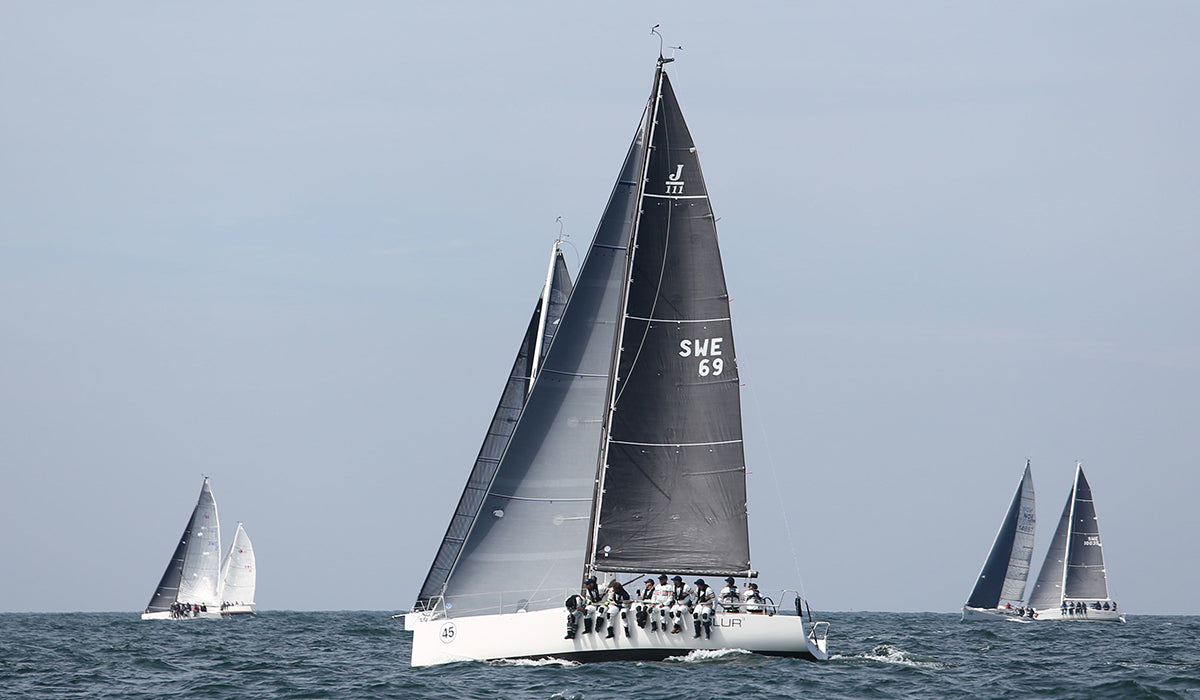
NORTH SAILS CLINIC OCH MARSTRAND BIG BOAT RACE 2019
NORTH SAILS CLINIC OCH MARSTRAND BIG BOAT RACE 2019
Helgen 1-2 juni avgjordes Marstrand Big Boat Race, för åttonde gången sedan starten 2012.
Vinnare Lilla klassen: Peter Gustavsson, J/111 Blur.
Totalt 66 besättningar från Sverige, Norge, Danmark och Tyskland var där för att göra upp om placeringarna i de numera tre klasserna. Nytt för i år var nämligen att det förutom en stor och en liten klass även fanns en separat klass för sportbåtar.
Men egentligen började det hela redan på fredagen. Då arrangerade vi på North Sails en ”clinic” för besättningar som ville slipa lite på formen inför helgens regatta. Den leddes av Henrik Ottosson och Andreas Turesson från Göteborgsloftet, med extraförstärkning av Johan Barne och Thomas Ottosson. Johan är Sveriges kanske meste proffsseglare med meriter från OS och Americas Cup och med VM-guld i allt från Soling och 5.5 meter till TP52. I jämförelse med detta är Thomas meriter av det mer blygsamma slaget, men han har ett tiotal SM-guld i bland annat Express och bred erfarenhet av allt från R6 till CB66 och J/70.
En startlinje och en kort bana var utlagd precis utanför Skallens fyr, och en gång i timmen körde vi ett enkelt träningsrace för de som ville känns på timing och manövrar under någorlunda realistiska förhållanden.
Det hela gick annars till på så sätt att vi åkte runt med två RIB-båtar, filmade och fotograferade, och hoppade sedan ombord för att ta en närmare titt på trimmet och förhoppningsvis bidra med några små tips. Ett femtontal båtar hade nappat på erbjudandet, och eftersom cirka 45 minuter tillägnades varje båt var det här en aktivitet som höll på till långt inpå eftermiddagen. Men väder och vind var på vår sida, så man kan väl säga att vi fick en bra dag på jobbet.
Genomgång på morgonen inför North Sails Clinic.
Både lördagen och söndagen inleddes med frukost på Marstrands Havshotell (frukostpaket till hela besättningen ingick i startavgiften), följt av rorsmansmöte klockan 09.00. Man kan möjligen tycka att det här fördröjer schemat men vi hörde ingen som klagade, och själva tycker vi att det är en social och en trevlig del av regattan som andra arrangörer gärna får ta efter.
Själva kappseglingarna ägde rum på Marstrandsfjorden. Här väntade utmanande förhållanden, särskilt under lördagen, med hårda sydvästliga vindar, stark ström och stötig sjö. Klassiska Marstrandsförhållanden med andra ord, och det var mycket riktigt många som sökte strömlä längs land på vänstersidan. Det var länge en vinnande strategi, men mot slutet av andra seglingen vred vinden kraftigt höger, varför de båtar som hade koll på prognosen och höll högersidan under uppsikt kunde göra ett riktigt klipp.
I samband med vridet ökade vinden ytterligare och enligt prognoserna var ännu mer vind på väg, så tävlingsledningen beslutade att ställa in dagens sista segling. Det var nog klokt. En mast hade redan gått överbord i en gipp, och mer kunde ha hänt; båtarna hann knappt i hamn innan det riktiga busvädret drog in över Marstrand.
Söndagen bjöd på lugnare vindar och till och med lite sol, och dagens tre seglingar kunde genomföras helt enligt plan. Att få igenom fem av totalt sex race känns helt okej, och totalt sett kan man inte säga annat än att det var rättvisa förhållanden från början till slut. Det var således tre värdiga vinnare som till slut kunde koras, om vi nu får säga det med tanke på att Henrik Ottosson och Andreas Turesson från North Sails Göteborg var med ombord på de vinnande båtarna i stora respektive lilla klassen.
Vi hade mer än så att glädjas över. Mer än hälften av flottan var utrustade med North-segel, och i toppen av resultatlistorna var andelen ännu större: Alla de tre klassvinsterna och totalt sju av nio pallplatser togs av båtar med våra segel.
Vinnare Stora klassen: Sten Haeger, X-41 Kwanza
Vi gratulerar alla pristagare och tackar Hjuviks Båtklubb och Marstrands Segelsällskap för en mycket väl genomförd regatta. Ett extra stort grattis riktar vi förstås till våra kunder på prispallen:
Stora klassen
Sten Haeger, X-41 Kwanza
Jonas Grander, Elliot 44 CR Matador
Lilla klassen
Peter Gustavsson, J/111 Blur
Lars Wikander, FinnFlyer 36 Zlatan
Mattias Wilson, Bavaria 38 match Draklunne
Sportbåtsklassen
Pär Svärdson, Fareast 28r happyyachting.com
Carl Fjällman, Archambault Grand Surprise Rebellion
Vinnare Sportbåtsklassen: Pär Svärdson, Fareast 28r happyyachting.com
READ MORE
READ MORE
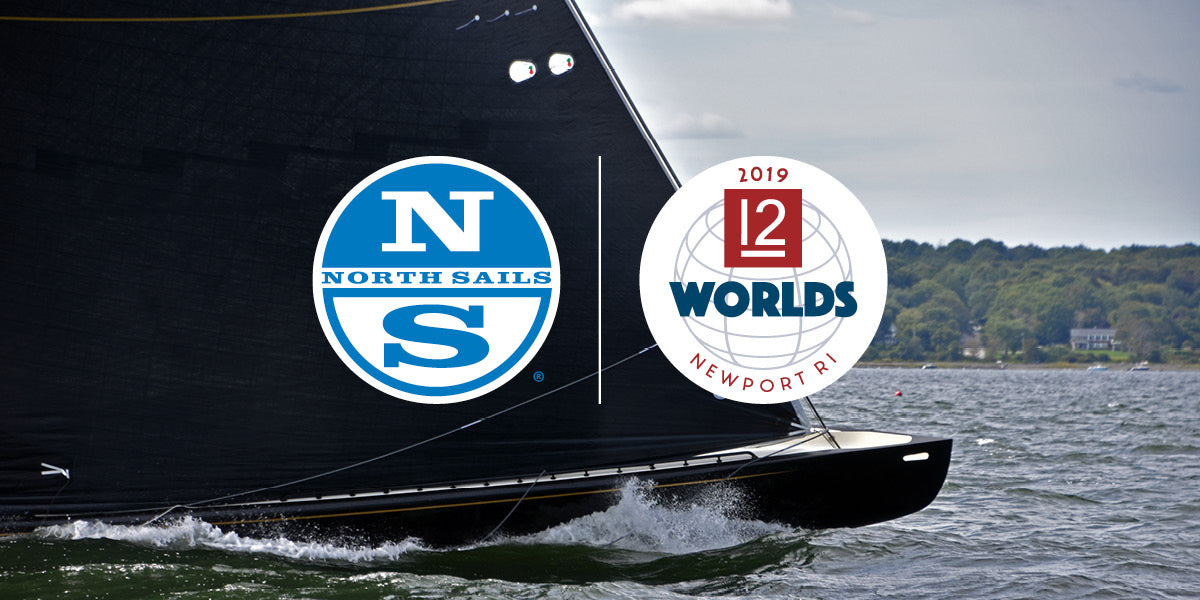
VELERÍA OFICIAL DEL MUNDIAL DE 12 METROS
VELERÍA OFICIAL DEL MUNDIAL DE 12 METROS
North Sails será la velería oficial del Mundial de 12 Metros, que se celebrará en la localidad estadounidense de Newport (Rhode Island) entre el 8 y el 13 de julio.
📸 Sally Anne Santos
Hasta 21 equipos de seis nacionalidades han confirmado su participación, la más numerosa de la historia en aguas de Estados Unidos. North Sails ofrecerá servicio de reparación a todos los equipos y varios de ellos contarán a bordo con miembros de la velería.
Es el caso de Ken Read, presidente de North Sails, que navegará con el Challenge XII en Modern Division: "Qué mejor lugar para ver estos barcos navegando que Newport, escenario de tantas batallas de America’s Cup”, explica. “North Sails se enorgullece de proponer las mejores soluciones para cada cliente, del más pequeño al más grande, y estos impresionantes barcos se encuentran entre los más icónicos".
READ MORE
READ MORE
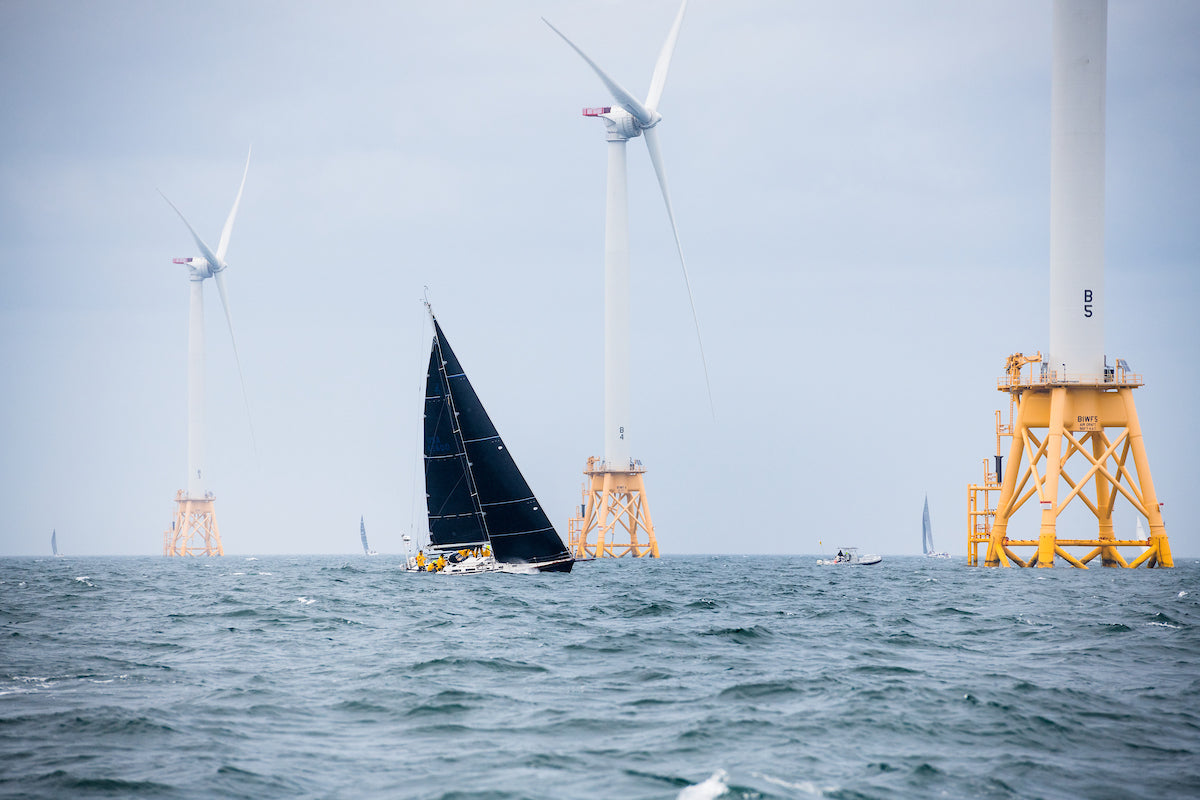
A SURGE IN THE ATMOSPHERE AT BLOCK ISLAND RACE WEEK
ONE FOR THE BOOKS
A Surge In The Atmosphere At Block Island Race Week
© Cate Brown
There was a distinct shift in the vibe at Block Island Race Week this year. The new title sponsor Margaritaville injected the 28th edition of the weeklong regatta with a new energy, impressive onshore activities, and—last but not least—a surprise closing gig by the legendary Jimmy Buffett.
As a returning partner, North’s involvement with Block Island Race Week this year included live coaching and daily debriefs, complimentary weather forecasting, the pop-up sail repair loft, and hosting the Lowell North Memorial Lay Day 5K.
Over 20 North Sails experts from five lofts were on the island to support all competitors, including Northeast Sales Manager, Kimo Worthington—one of only three Americans who’s won both the America’s Cup and The Ocean Race. Kimo helped Chuck Allen coach the performance cruising fleets, offering the complimentary coaching program to all boats. By providing photography and video from the race course, Kimo and Chuck were able to help teams improve boat handling and sail trim to perform better in their next race.
© Cate Brown
122 boats dealt with a variety of conditions throughout the week. Monday saw 8-12 knots and sunshine. Tuesday’s Around the Island Race lived up to its reputation of delivering a wide range conditions: rain and wind throughout the race, capped by thunderstorms and torrential rain; the North Service loft was kept busy with repairs that night.
Sailing around the wind farm kept navigators and tacticians on their toes during the Around-The-Island Race.
The newly resurrected Lay Day was embraced by crews and families with the introduction of The Storm TRYathalon. First thing in the morning, North Sails hosted the inaugural 5k, bringing over 100 runners out to start the day. Ben Quatromoni, pitman aboard Interlodge IV, was the overall winner with a superb time of 19 minutes, 55 seconds. Quatromoni got out to a fast start and left his lone competitor behind during the long uphill climb along Ocean and Beach avenues. The Newport, Rhode Island resident was one of three Interlodge IV entrants along with headsail trimmer Dave Armitage and navigator Geoff Ewenson. The afternoon brought more competition, with Trivia presented by Margaritaville followed by a New England Ropes Tug-O-War. Wednesday was also the lightest air day, perfect for some quality time on shore to enjoy New England's summer hotspot.
© Cate Brown
© Cate Brown
© Cate Brown
© Cate Brown
Thursday and Friday saw winds averaging around 10-12 knots. Fog was an added challenge on Thursday, but the race committee was able to fit in two great races. Friday cleared up nicely for a beautiful, warm, sunny finale to a great week of sailing in New England.
North’s client victories included Kevin McNeil and his Farr-30 team on Seabiscuit, which won four of the seven races for a low score of 19 points in this evenly matched class. The performance cruising Spinnaker division was won by Reef Points, owned by Gurdon Wattles from Little Compton, RI. Thomas Lee and the crew of Jammy, a Gunboat 55, took home first place in the Multihull fleet, scoring two bullets out of three races.
Wings, owned by Mike Bruno of Armonk, New York, dominated the J/88 class. Wings added a fresh inventory of North Sails 3Di this year, and so far the team has won the J/88 Midwinter Championship, Charleston Race Week, and the American Yacht Club Spring Series. “Our amazing racing season continues!” Mike Bruno said, “Thanks to my amazing tactician, my excellent crew, a well-prepared boat, and North’s 3Di sails.”
According to host Storm Trysail Club, almost 50 percent of the 2019 fleet were newcomers. With the Margaritaville effect from this year, event organizers and partners are looking forward to what 2021 will bring.
“We are very pleased about the number of first timers. We think it points to a brighter future for the event, and a renaissance of folks bringing their boats back to the race course for competition and fun.” Ed Cesare - Regatta Chairman
© Cate Brown
© Cate Brown
© Cate Brown
© Cate Brown
© Cate Brown
© Cate Brown
READ MORE
READ MORE
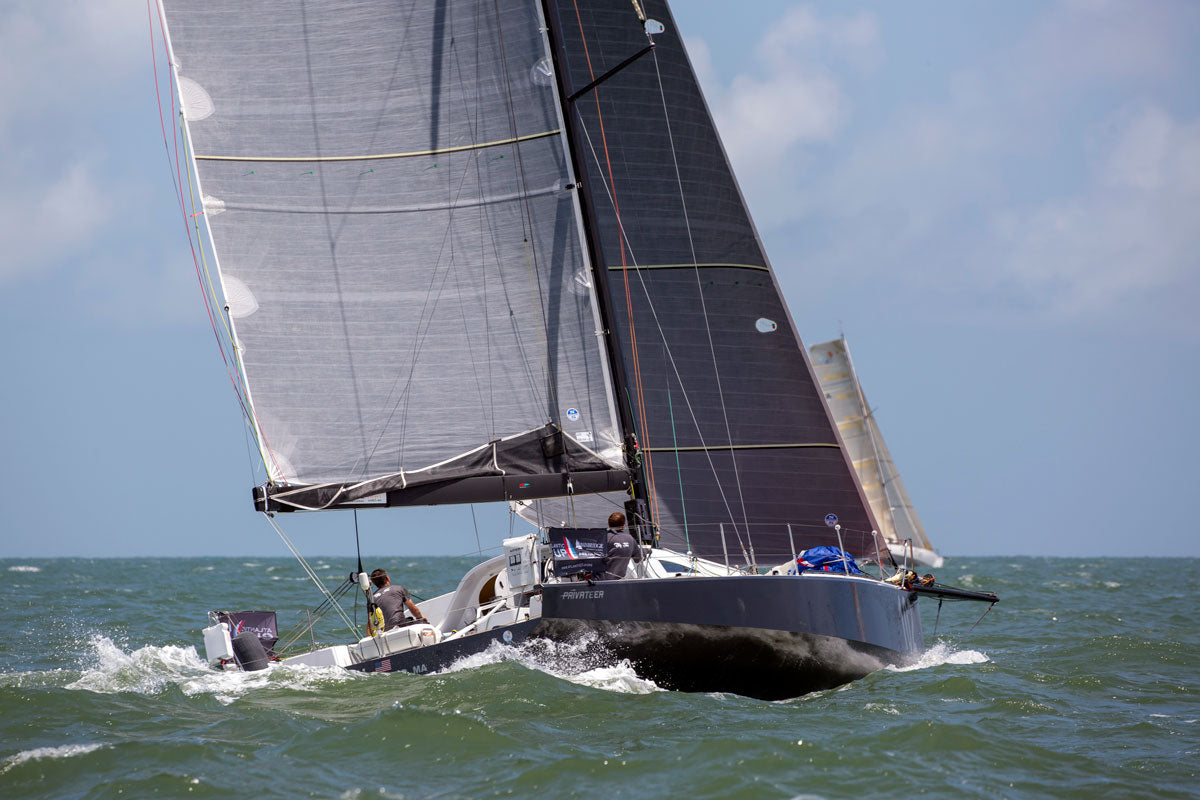
CLASS 40 PRIVATEER TAKES OVERALL BERMUDA 1-2 VICTORY
CLASS 40 PRIVATEER TAKES OVERALL BERMUDA ONE-TWO VICTORY
Owner credits North Sails for great sail design and durability
Photo: Billy Black
One week after finishing the second leg of the Bermuda 1-2, Jonathan Green, owner of the Class 40 Privateer, is still grinning. The unique race takes a fleet of singlehanded sailors across the Gulf Stream to Bermuda, 635 miles away. A week later, the boats race back to Newport doublehanded. Elapsed times for the two legs are combined to find an overall winner.
Racing was tight among the Class 40s, and on Leg 1, Privateer was only able to manage a fourth place finish. “First, I had some equipment failures that hindered my competitiveness in less than 15 knots,” Jonathan admits. “Second, I had some strategy missteps that ate away at my initial lead and allowed my competitors to walk on by.”
For leg 2, Jonathan was joined by co-skipper Jeff MacFarlane. “Jeff always amazes me with his attitude, drive, and determination—a true competitor. We did some racing together on Privateer last summer so were well familiar with each others’ sailing style, and knew we had a good shot at the title.”
At the restart off Bermuda on June 20, Privateer hit the line first and quickly gained 15 miles on the other Class 40s. Jonathan gives a lot of credit to their Solent sail. “Some of the conditions far exceeded the design specs, but it held together beautifully and allowed us to extend a big lead on the competition over the first 50 hours of the second leg. Most of our competitors were probably sailing their J3. It was a risk, because if the Solent blew up, we’d be far less competitive later in the race, but it persevered and put us in a fantastic position over the fleet.”
After finishing on 23 June at 1507, Privateer more than made up the time deficit from Leg 1 to take the overall win.
Conditions for leg 2 included thunderstorms and 35 knots from the northeast. Asked if there were any scary moments, Jonathan says, “We were definitely on the edge of our seats reaching in wind gusting over 35 knots, with big walls of water thrown up against the Solent. If we were sailing conservatively, we’d have dropped it at 25 knots, but with the monumental gains we were making, it was too tempting to press on and hope North built it strong. Sure enough, the sail held together and allowed us to post enormous gains.”
Working with the North Sails team on sail design, testing, and refinement has allowed Privateer to become more and more competitive over time, Jonathan concludes. “With North’s help, I think we can continue to climb the ladder among the Class 40 fleet. Next year’s Atlantic Cup will be a true test of our program, as we set out to score wins against US and European programs with very experienced teams. Tune in June 10, 2020 for some exciting Class 40 racing!”
READ MORE
READ MORE

NOT YOUR AVERAGE START LINE
NOT YOUR AVERAGE STARTING LINE
Wednesday Night Series at Mimico Cruising Club Reflects Dedication and Commitment to Weeknight Racing
Every Wednesday boats from Mimico Cruising Club gather to race on the lake. Boats big and small get together for friendly competition, week after week, and the hype is stronger than ever. Over 20 boats compete in both Spring and Summer series racing, and take advantage of the bragging rights.
What makes MCC race nights different from other clubs on the lake is the size of their starting line and consistency in participation each week. In addition to their own boats, MCC has partnered with neighbor club Etobicoke Yacht Club to allow sailors to co-mingle for racing during the week – at no extra cost. Members from EYC can race at MCC on Wednesdays and MCC members can race at EYC on Thursdays, providing two great opportunities for the clubs to race with eachother frequently. The reciprocal racing rights not only foster the local sailing/racing community but also enable sailors to hone their skills and get out on the water more; which most sailors on the Great Lakes want since the season is so short compared to other areas that can race all year round.
Not only do boats big and small come out for racing at MCC but also sailors from all ages show in numbers. A great number of youth sailors and young adults are crew on members boats – a fantastic occurrence that we love at North Sails. Ways for clubs to help youth sailors grow and transition from junior sail to keelboat racing/sailing is amazing; a feat that a lot of other clubs, and the sport in general, are struggling with.
READ MORE
READ MORE
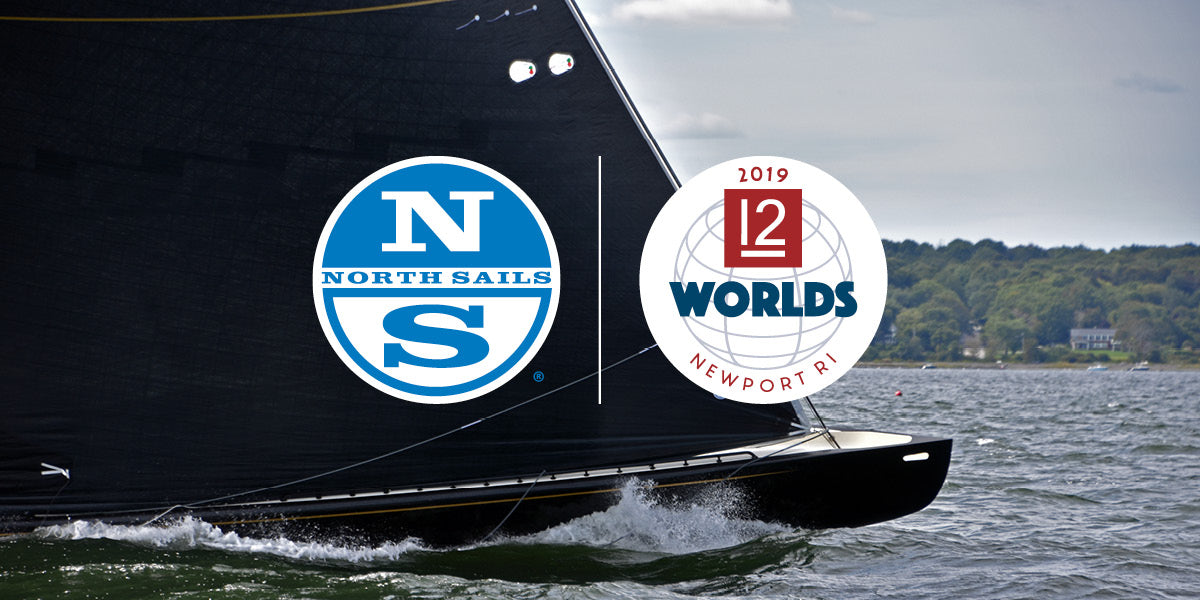
NORTH SAILS IS OFFICIAL SAILMAKER OF THE 12 METRE WORLD CHAMPIONSHIP
NORTH SAILS IS OFFICIAL SAILMAKER OF THE 12 METRE WORLD CHAMPIONSHIP
The World’s Leading Sailmaker Joins The Celebration Of This Iconic Class
© SallyAnne Santos | WindlassCreative.com
Lowell North founded North Sails in 1957, one year before the America’s Cup ushered in 30 years of storied racing in the 12 Metre Class, creating some of the most memorable moments in sailing history. 60 years of innovation and development kept North Sails at the heart of America’s Cup victories, and now the world’s leading sailmaker will be on hand to provide world-class service and support when the 12 Metre World Championship is raced off Newport, R.I. from July 8-13th.
The World Championship will be the largest-ever gathering of 12 Metre yachts in the United States, featuring 21 boats from six countries. North Sails will be offering its signature Regatta Repair service to ensure the sails on every boat are optimized for the expected tight racing in this fiercely competitive fleet.
The 12 Metre has always been at the forefront of sailing development. Today the class combines the sleek lines of historic hulls with cutting edge technology above deck, offering both nostalgia and world-class racing. North Sails has worked closely with many owners and the class association itself, to understand more about the needs and challenges faced in developing modern sails for these boats. Both North inventories and North experts will be onboard many of the boats to help the teams meet their goal of being the next World Champion.
“We have a shared history of success and pioneering development, and we are privileged to be able to be a part of this event and help keep these boats performing to the highest level.” -Ken Read
The President of North Sails will be racing on Challenge XII in the Modern Division. “The 12 Metre class is unique in every way,” Ken Read continued. “There is nothing else like it in the world, and it’s a testament to the owners, crews, class association, and suppliers that the fleet remains so competitive and we are able to get 21 of the 12 Metres to Newport for this amazing event. What better place to be watching these boats go head-to-head than Newport, the site of so many memorable America’s Cup battles. North Sails prides itself on finding the best sail solutions for any client, from the smallest to the biggest, and these amazing boats have to rate as one of the most iconic.”
Peter Gerard, Vice President of the International Twelve Metre Association’s (ITMA) America’s Fleet added: “Without the best partners to help us deliver optimum performance, we would not be able to put on such an ambitious event as this. Whilst the boats are historic and look beautiful, the loads that they carry and the equipment that they use is cutting edge. and for this, we need the world’s leading suppliers to help keep everyone race-ready. We are delighted that North Sails has partnered with us and are greatly looking forward to working with them.”
READ MORE
READ MORE
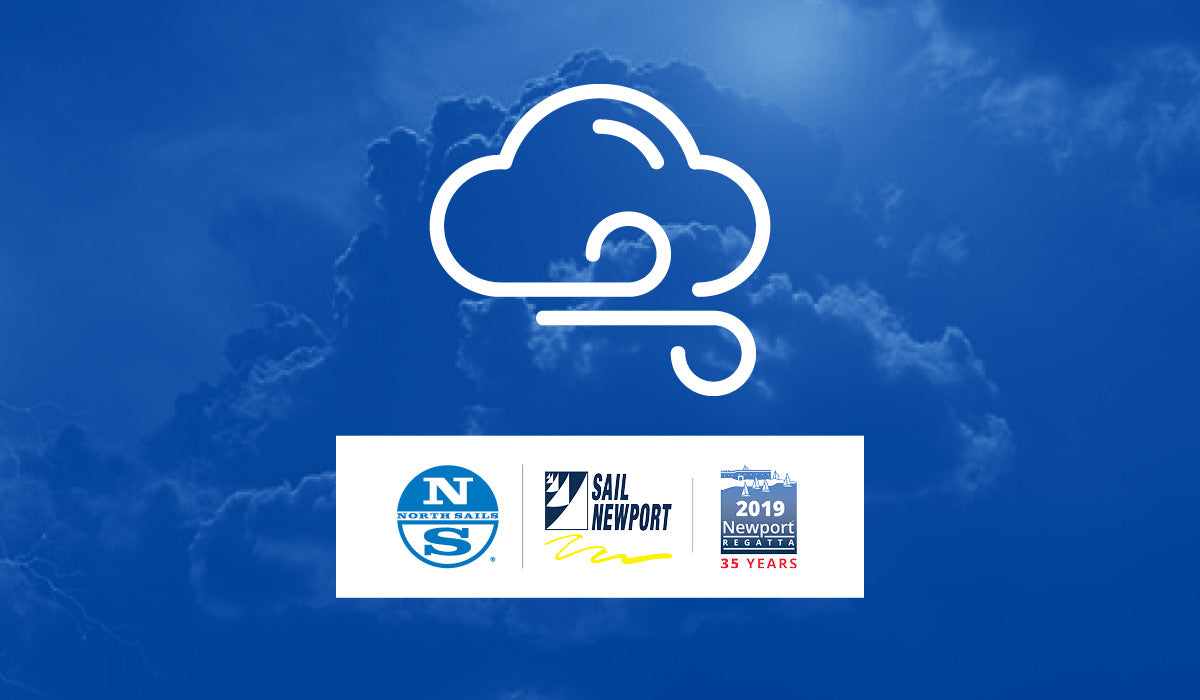
GET THE WEATHER FOR THE 2019 NEWPORT REGATTA
BE PREPARED
Get Your Complimentary Forecasts Provided By Sailing Weather Service
READ MORE
READ MORE
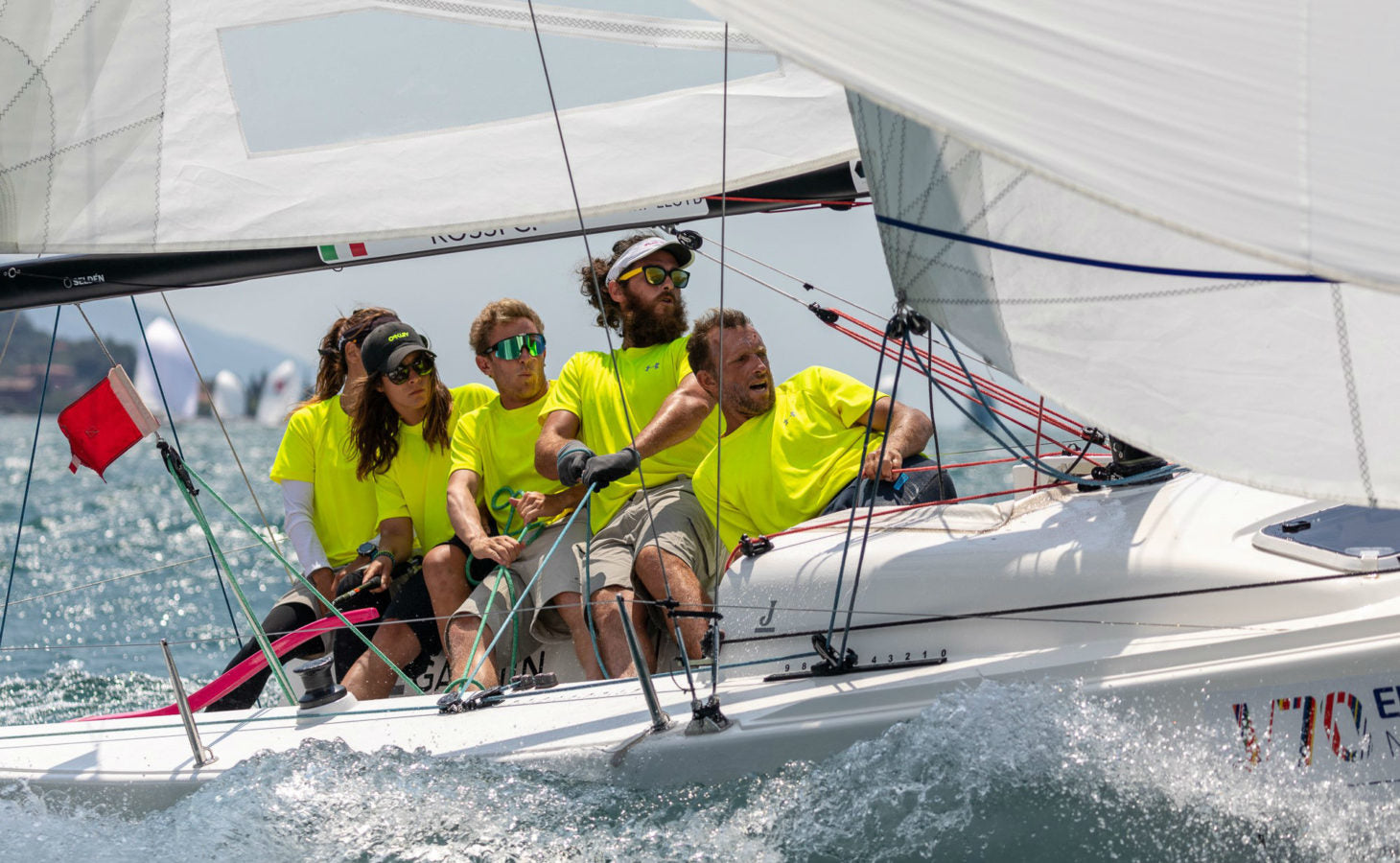
ITALIAN TEAM WINS J/70 EUROPEAN TITLE
ITALIAN TEAM WINS J/70 EUROPEAN TITLE
We Talk To Giulio Desiderato, Main Trimmer And North Class Expert Onboard
J/70 European Champions 2019, Petite Terrible 📸 Zerogradinord
After a tough battle at the J/70 European Championships in Malcesine, Lake Garda, the North powered Petite Terrible won the European title. With Italian Class Expert Giulio Desiderato sailing onboard as Main Trimmer, he gives us the low-down on how the team came to be at the top of the podium in the largest and arguably most competitive One Design class.
Amazingly, this victory is not unusual for the Rossi family. Helm of Petite Terrible, Claudia Rossi, won the Europeans in both Kiel and Hamble after Claudia’s father won the Europeans with his team in Vigo last year, all with North Sails inventories.
Claudia Rossi gives us her account of the regatta: “I have been sailing in J/70 class for four years and after trying various sails, I am happiest with North Sails. The boat is fast and easy to drive which is also helped by having Giulio Desiderato onboard. He knows the sails very well and can therefore ensure we trim them in the right way. Of course, having a fast boat makes things easier, but I think the key to our success was our team. We were always united, we believed in it until the end and when we needed to push, we all gave 110% resulting in an exciting and well deserved victory, an incredible experience!”
“I have been sailing in J/70 class for four years and after trying various sails, I am happiest with North Sails. The boat is fast and easy to drive which is also helped by having Giulio Desiderato onboard. He knows the sails very well and can therefore ensure we trim them in the right way.”
The regatta brought a fantastic mix of wind strengths, with some very light days proving testing for the healthy fleet of 124 boats. We asked Giulio how the sails handled in these tricky race conditions: “The regatta has been difficult and intense with some conditions as light as 5-6 knots. However, luckily the Championship finished with a nice 15-17 knot wind blowing from the south. We found the right way to tune the mast and trim our sails properly and as a result, have been leading the fleet most of the time, no matter what the conditions. This consistency is the key to our success.”
The team are very familiar with Malcesine and Lake Garda, but the Europeans brought unusual conditions. For most of the regatta, although all races were sailed, it was too hot for the well-known Ora wind to develop.
“The XCS-2 Mainsail we raced with had been used at two previous major events which says it all! We are very impressed with the sail quality and shape. We also used the North Sails J-2 High Clew Jib and AP-1 Spinnaker.”
Petite Terrible 📸 Zerogradinord
Petite Terrible started racing together in 2015. Giulio first became involved as a coach, helping to prepare the crew for the World Championship in San Francisco. This season, they chose to work together have him as part of the team as Main Trimmer.
“The last race is one that I will never forget,” says Giulio. “All the races before this, we fought with the other boats in the top of the fleet to win the title. In the final race, we decided to sail our own race by not making it too complicated and just pushing hard until the end. We had a great start close to the pin end, sailed fast passing various opponents and when we got close to rocks we tacked onto port crossing in front of the whole fleet!”
“The last race is one that I will never forget. We decided to sail our own race by not making it too complicated and just pushing hard until the end. We had a great start close to the pin end, sailed fast passing various opponents and when we got close to rocks we tacked onto port crossing in front of the whole fleet!”
We wish the team good luck at their next event in August, the World Championships in Torquay, UK.
Talk to Class Expert, Giulio Desiderato, and browse the J/70 Shop Inventory.
“I would like to thank my team – Claudia, Michele and Matteo e Ross. Also, a huge thank you to our team mates onboard Enfant Terrible and all the people that support us during the season and the fantastic week. Big thanks to Alberto Rossi that made it possible. Finally, a big hug to Simone Spangaro, the previous Petite Terrible Main Trimmer. He is the team’s number one supporter and never stops helping us.”
Congratulations to North clients who won all three podium positions 📸 Zerogradinord
📸 Zerogradinord
Arttube 📸 Zerogradinord
Petite Terrible 📸 Zerogradinord
📸 Zerogradinord
READ MORE
READ MORE
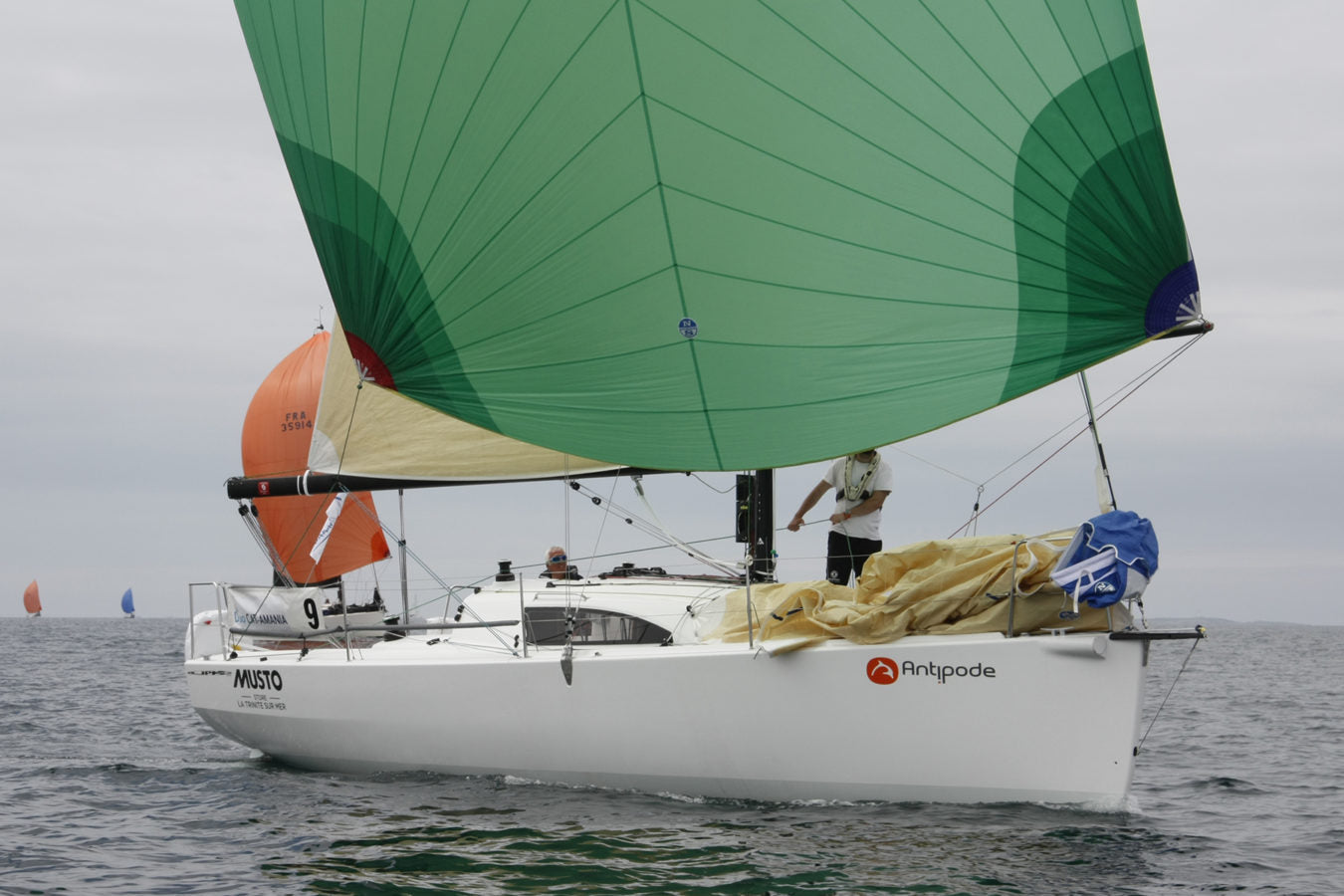
UNE DUO CAT-AMANIA SPORTIVE ET CONVIVIALE
Une Duo Cat-Amania sportive et conviviale
20 équipages aux couleurs de North Sails, partenaire de l’événement
📸 Sylvain Huet
La Duo Cat-Amania s’est clôturée vendredi 21 juin après six jours de régates en double le long des côtes bretonnes (une boucle de Crouesty à Crouesty en passant par Quiberon, Lorient, Locmiquélic, Concarneau et la Trinité-sur-mer). 50 équipages dont près de 20 bateaux North Sails ont participé à cette compétition amateur de haut niveau qui allie sport, professionnalisme et convivialité. Et pour la quatrième année consécutive, North Sails sponsorise l’événement à travers la distribution de nombreux lots.
« Cette grande classique est un moment fort du calendrier nautique, commente Laurent Tilleau, commercial IRC à North Sails et régatier par passion. La plupart des navigants sont des amateurs aguerris et exigeants, toujours à la quête de conseils, et avec Thibaut Agaugue, responsable service voile à North Sails, nous avons assisté les coureurs North Sails après chaque régate le soir venu pour toute question technique concernant les voiles. » Navigants le jour et experts voile le soir, les deux hommes faisaient partie des 100 marins présents sur l’épreuve.
Antony Durand, Président de l’amicale des coureurs, remercie North Sails pour sa contribution à « la belle course qui est la Duo CAT-AMANIA. Course qui associe technicité, compétition et convivialité ! Une semaine de joie et de plaisir qui reste dans les souvenirs de l'année. »
READ MORE
READ MORE
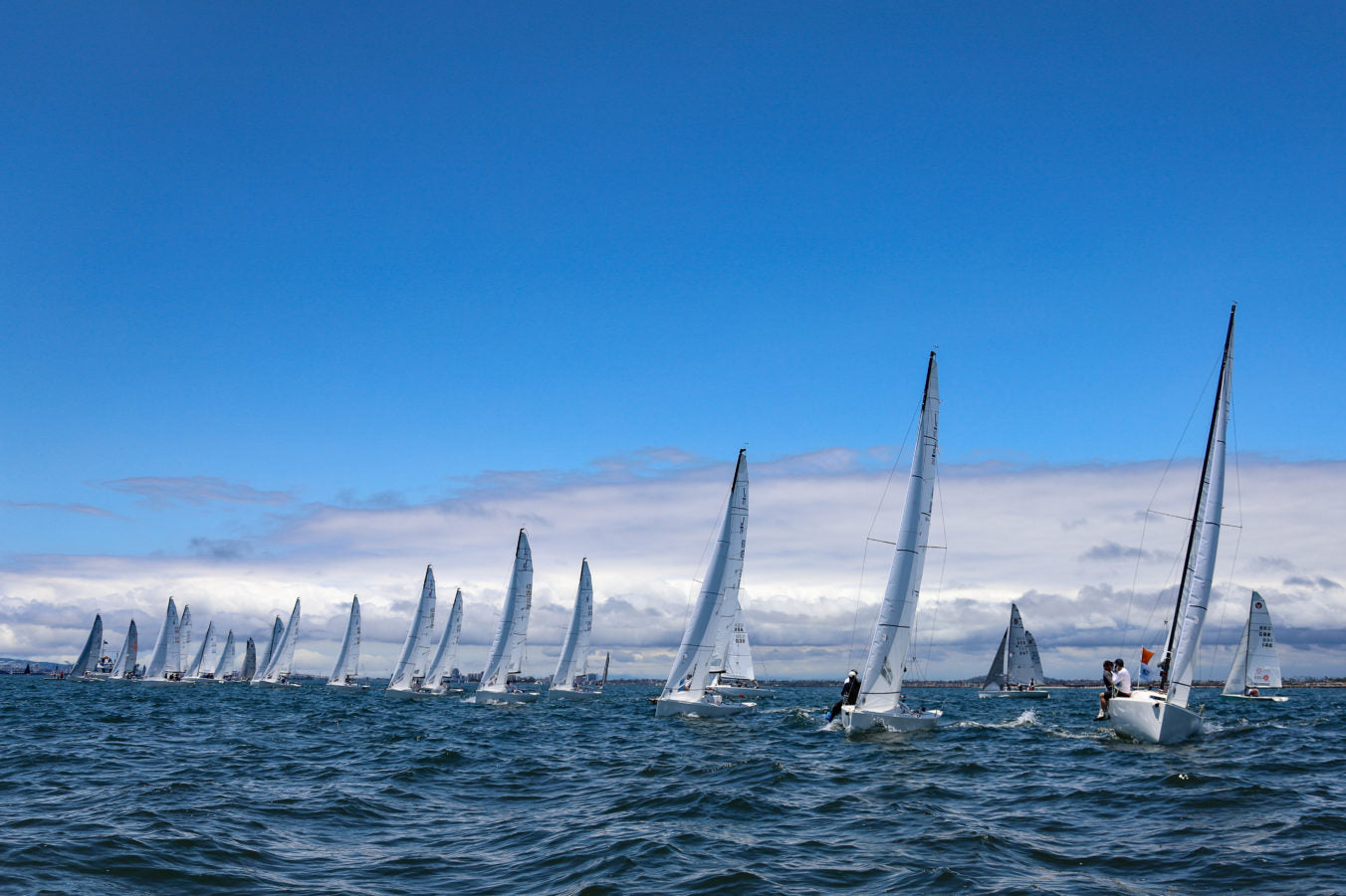
J/70 UPWIND TRIM TIPS
J/70 UPWIND TRIM TIPS
Finding Your Groove In Building Pressure
📸 Bronny Daniels / Joysailing.com
North Sails expert Zeke Horowitz shares important J/70 upwind sail trim takeaways from his recent experience in California, USA at Long Beach Race Week. Zeke sailed with Jeff Janov on Minor Threat, and they tied for first place with just 18 points in the seven race regatta.
Less than 10 Knots
When the breeze is under 10 knots and you are looking for power, be sure to get up to speed by “pressing” on the jib before trying to grab any height. In these underpowered conditions, height comes from achieving flow over the keel, NOT from simply trying to point the boat higher. By pressing on the jib, you will power up the sail plan and allow your crew the chance to pressurize the weather rail. This helps achieve max flow on the keel, and your boat will start lifting.
Your leeward jib tell tale should be “nervous” most of the time and you should not sail any higher than tell tales straight back. It’s imperative to get your rig loose enough to help the headstay sag. You can always snug up the headstay by tightening the backstay if you get a little puff. Two turns off the cap shrouds and two turns off the lowers from base is probably about as loose as you should need to go (4-7 kts)*.
Trim the main so you have a nice open leech (tell tales streaming) until you are able to get weight on the rail. Once the weight is up, you can trim the main hard enough to begin seeing stall on the leech tell tales.
*The exact number of turns depends on your rig.
📸 Bronny Daniels / Joysailing.com
Above 15 Knots
When sailing in over 15 knots and chop, be decisive about your “modes” upwind. Take note of the wave angle on each tack and decide which mode you want to try on each board. For example, if one tack has the wave direction more on the bow, you may want to try a “bow down mode” to keep the speed from crashing when you hit a hard set of waves.
Bow-Down Mode
In “bow-down” mode, try centering the traveler car, pulling the backstay hard enough to just see inversion wrinkles in the middle of the main, and pulling the vang hard enough to see some inversion wrinkles down low. Play the mainsheet a lot to maintain a steady heel angle, with the jib tell tales straight back or the inside one just lifting. The name of the game here is speed, so set a target speed number and don’t let the bow come up until you’ve hit your target.
📸 Bronny Daniels / Joysailing.com
Higher Mode With Flat Boat
If the waves are more side-to, you can try a higher mode with a flatter boat. Bring the traveler car 1/3 – 1/2 of the way up. You’ll have the backstay tight, but not so tight that you see any inversion, and the vang will also be snug, but not so tight that you get low main inversion. The mainsheet will be eased a little more overall to help keep the boat flat. In this mode, you keep some power in the main with the higher traveler and fuller main, but you’ve got more twist in the leech which spills some power to keep you flatter.
It’s imperative to get the boat up to speed before trying to point, but with this mode, you can achieve more keel flow by keeping the boat flatter. At times, the driver may feel a touch of lee helm that they must push against, until the main trimmer ‘catches up’ by bringing the mainsheet in slightly. This mode is not as ‘forgiving’ but it can be lethal when the boat is up to speed in open water.
*With this second mode, you might need to try a little less inhauler to help keep the headstay straighter, since your backstay and main sheet are not trimmed quite as hard.
Learn more about North J/70 products
📸 Bronny Daniels / Joysailing.com
READ MORE
READ MORE
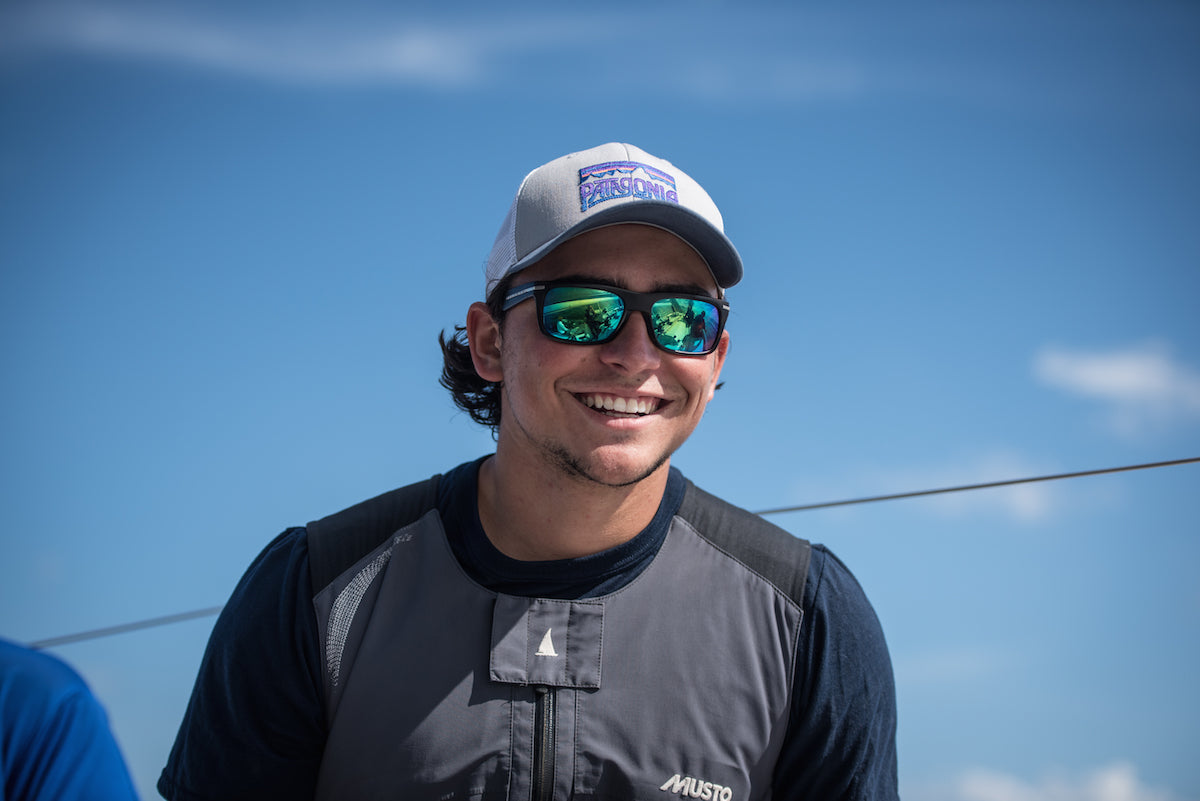
WHO WE ARE: CHRISTIAN KOULES
WHO WE ARE: CHRISTIAN KOULES
Get To Know Your Local Service Team
Tell us about yourself.
I am a rising senior at the University of South Florida. I am an active member of the schools sailing team, which consistently ranks in the top 20 programs in the country. I prefer racing on one design sport boats like the J70 or RS21, but I primarily race 420’s and FJ’s during the school year. I also actively race PHRF and other long distance racing. I recently raced from Saint Petersburg, Florida to Havana, Cuba on a J112e. This summer I am looking forward to the Chicago Mackinac race, it will be my fifth Mac race.
How long have you been sailing and/or involved in the marine world?
A long time, as far back as I can remember, but I really started actively racing when I was seven or eight.
What are you most looking forward to about working at North Sails?
Expanding my knowledge about sail shaping, design, costumer service and developing customer relations.
What’s your favourite part about Summer?
Sailing.
What’s your earliest memory of being on the water?
Driving my fathers thirteen foot Whaler Super Sport. I was maybe three years old.
Get to know more of the Chicago team from North Sails.
READ MORE
READ MORE
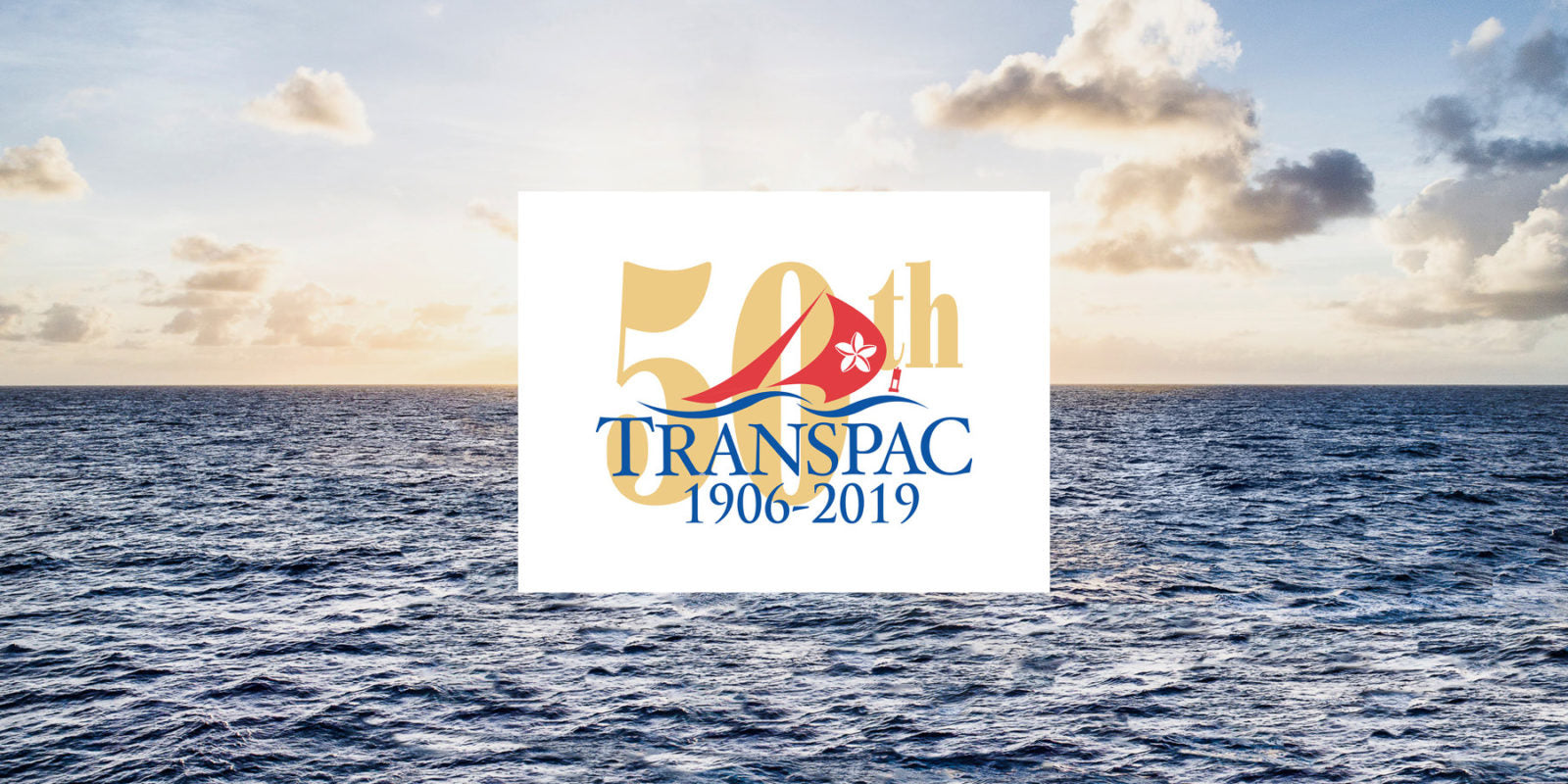
50TH TRANSPAC: THREE NORTH SAILS VETERANS LOOK BACK
50TH TRANSPAC: THREE NORTH SAILS VETERANS LOOK BACK
Iconic Ocean Race From LA To Honolulu Is A Rich Part Of North History
The very first Transpac was run in 1906, had three entries, and took the winner twelve days to complete. In 2017, North Sails helped several boats set new course records, including the supermaxi Comanche, skippered by North Sails President Ken Read. For 2019’s 50th edition, almost a hundred boats are entered, and 3Di will be proving its offshore abilities in several divisions.
North Sails has been helping Transpac racers achieve their goals since the company’s early years. Past president Gary Weisman sailed his first race in 1967 and is now tied for the most races sailed with Roy Disney, Jr.; both men will sail the 2019 edition on Disney’s Pyewacket. Gary confirms the record, though he’s less sure of the exact number. “I’m actually vague about some of the years, because I started really young. But Roy and I reckon that after this year, we’ll be tied at 23, and I don’t think anybody else has done that many.”
Robbie Haines, another Pyewacket team member who first started working for North Sails in 1973, scored his first ride to Hawaii at age 25. “That’s a little late in life to have your first Transpac,” he says. “The lucky ones like Gary start in their teens.” Robbie did have a great excuse for such a delay, though; “I was involved in a lot of Olympic sailing,” which eventually rewarded him with a gold medal. 2019 will be “only” his 18th or 19th Transpac.
Fuzz Foster from North Sails Hawaii has completed three Transpacs. In 2003, he was part of the team that won overall. This year, he’ll be greeting sailors after they finish, and definitely joining the arrival party because it’s part of what makes this race so special—along with the last 100 miles of racing, “which makes you forget the first 2300.”
What’s Changed
Boats
Gary sailed his first three Transpacs on a Cal 40, back when they were the best ride going. “They had a spade rudder so they were steerable down waves, when most of the boats still had the rudder attached to the back end of the keel and they’d kind of rock and roll their way to Hawaii. Really scary,” he adds. “In the last third of the race you can have 20 to 25 knots. Then a squall hits, and you get another 10 knots of wind with a full-sized kite up. You didn’t want to round down with the pole way back, because you’d snap the pole off the mast, or you’d break the pole. Or if everything else was strong enough, you’d break the mast. I remember in ’77, the year Merlin won, seven boats lost their mast in one night. It was pretty wild.”
Communications and Navigation
Before GPS, navigation was by sextant and every boat was required to call in their position for the daily roll call. “There’d be an escort vessel that was handling the communications on Single Side Band radio,” Gary remembers, “and it was all broken and hard to understand. It would take an hour and a half with fifty or sixty boats. And there were a lot of games being played with that position reporting, too,” he continues, chuckling. “With celestial navigation, a smart navigator might say he had a bad sun sight to hide his position, if he thought he was in a spot in the ocean that was particularly good. And nobody could prove otherwise, unless they happen to run into you or visually spot you way out of position. Everybody did a little bit of that…fudging, you might call it.”
Sail Evolution
Sails have come a long way since bloopers and symmetrical spinnakers dominated the race. “The big difference is the material,” Robbie says. “Back then it was all Dacron.” As soon as laminates like 3DL, and later composite 3Di sails, were introduced, they dominated Transpac sail inventories. “All the sails are quite a bit lighter now than 30-40 years ago. And the sail shapes are more refined and better than they were back then.”
Gary points out the dramatic difference in downwind inventories. “In ’69, we put up a 1.5oz spinnaker at the start and took it down after finishing, and we won the race overall and set an all-time Cal 40 elapsed time record! Now, on a 70 footer, most of our spinnakers are half that weight. The boats go so much faster, they just don’t put the load on the sails that the old boats did. And the fast boats don’t even have spinnakers, they just have big genoas basically.”
What hasn’t changed
Best Ocean Race
“It’s without doubt the best ocean race I’ve ever been on,” Robbie says. “You’re on the wind at the start, and you round Catalina, which is the only mark of the course, and ease sheets a little bit. Your next mark is 2300 miles away. And it just gets warmer, and the water changes color, and the wind keeps going aft until you’re running the edge of high pressure.”
Gary adds that it’s a strategic challenge to sail the course well. “The simplistic view is that you sail over to the right side of the race course, jibe when you’re eight or nine hundred miles away from Hawaii, and lay the island. But you rarely do that, for fear of much lighter wind too close to the high pressure.”
In 2003, Fuzz’s team on Bill Turpin’s Alta Vita took the overall trophy by diving south early on, a “navigational gamble that took four days to pay off.” It’s one of his best Transpac memories, though he adds that sailing with good friends is always fun. “And I got to sail with my oldest son on the 2009 and 2017 Race. Every parent should get a chance to sail with their kids; it’s priceless.”
Gary confirms that winning usually requires risk. “People get all nervous about getting anywhere near the layline, but if a guy bangs the corner hard, and he does it exactly right, it’s a huge advantage. I remember one year, we ended up south of the Big Island in ten knots more wind, which is just incredible. We had to sail north to get to the finish line! And honestly, if we’d gone further south, we would have won.” Instead Pyewacket finished second to the classic yacht Dorade, another North Sails customer.
The Finish
Regardless of results, all three men agree that there’s something quite special about Diamond Head. “Sailing the Molokai Channel in normal tradewinds is hard to beat,” Fuzz says. Robbie adds, “You finish in the most beautiful place in the world, at a red buoy that’s been there forever.”
Gary calls the finish “really romantic. These islands loom up out of the ocean, and when you get close, you can smell the plumeria. And hopefully you’ve got somebody waiting for you on the dock. I defy anybody not to get a little emotional finishing that race.”
North Sails Service
Once the boats arrive in Honolulu, the North Sails Hawaii team is there to help. “People need to get sails repaired to deliver the boat home, so they do that,” Gary says. “Plus they receive delivery sails, and they ship home racing sails. North is there, helping people in the race with all their sail needs.” Fuzz adds that “Hawaii is the best place on the planet to sail—just ask anybody that ever sailed in a Kenwood Cup or Clipper Cup. I’m very lucky to call it home.”
As one of the larger yachts in this 50th edition, Pyewacket will be part of the last fleet to start on Saturday, July 13. As for results, Robbie says they certainly have the experience and equipment to do well. “We’ve got a very mature crew on Pyewacket, with 100 races between us, and great sails. But it’s a very difficult race to win overall.” Which is something else that hasn’t changed since the very first Transpac back in 1906.
Transpac 2017 record breaker Comanche arriving into the finish. 📸 Sharon Green / Ultimate Sailing
READ MORE
READ MORE
